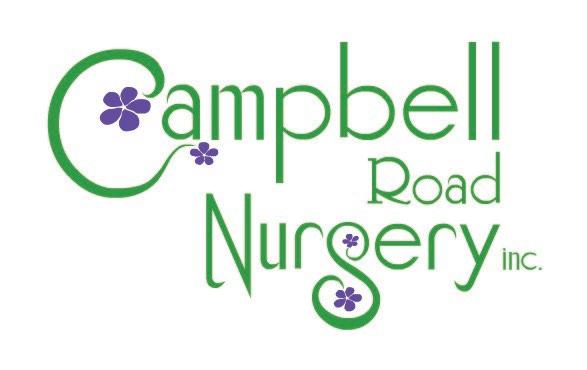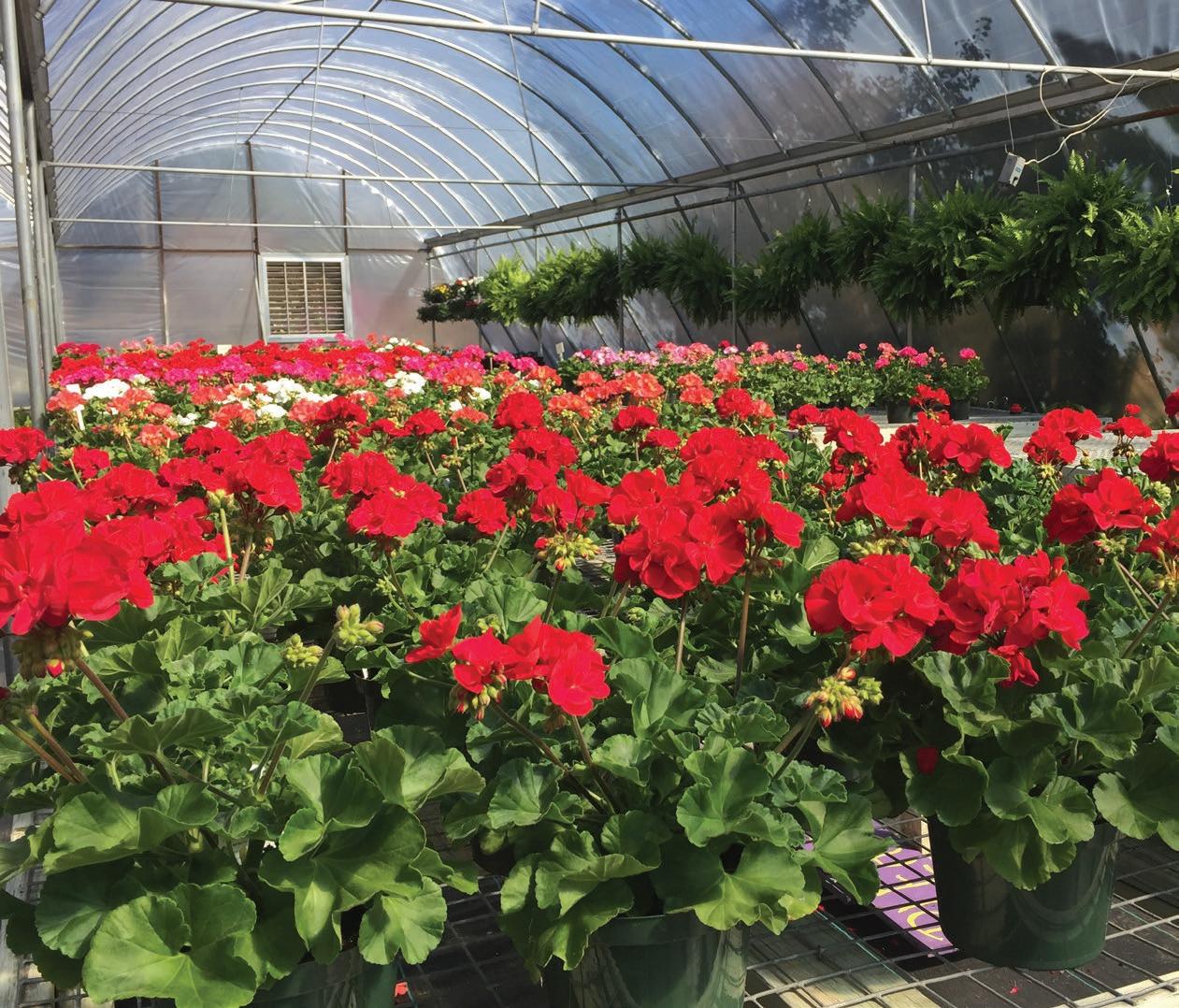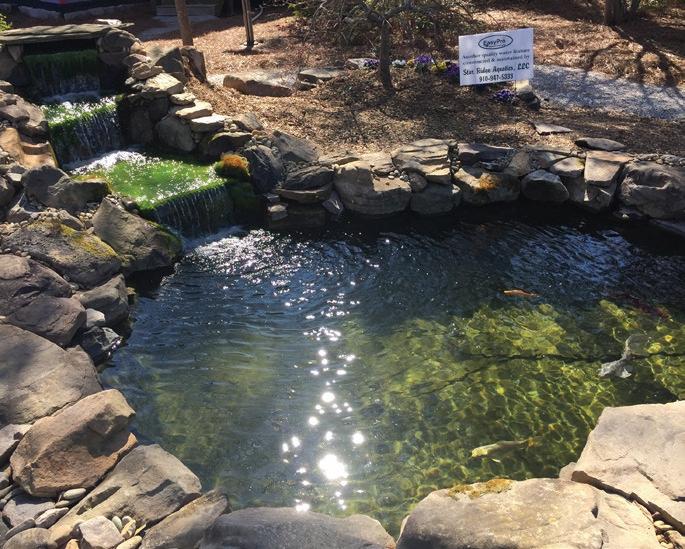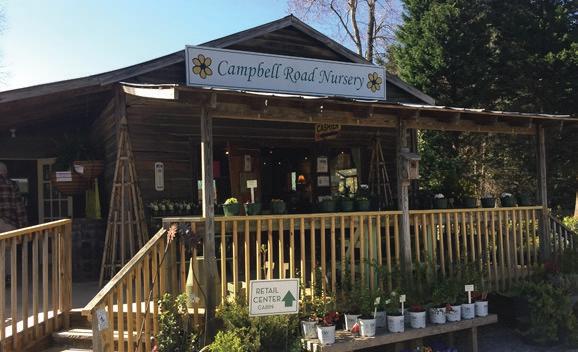







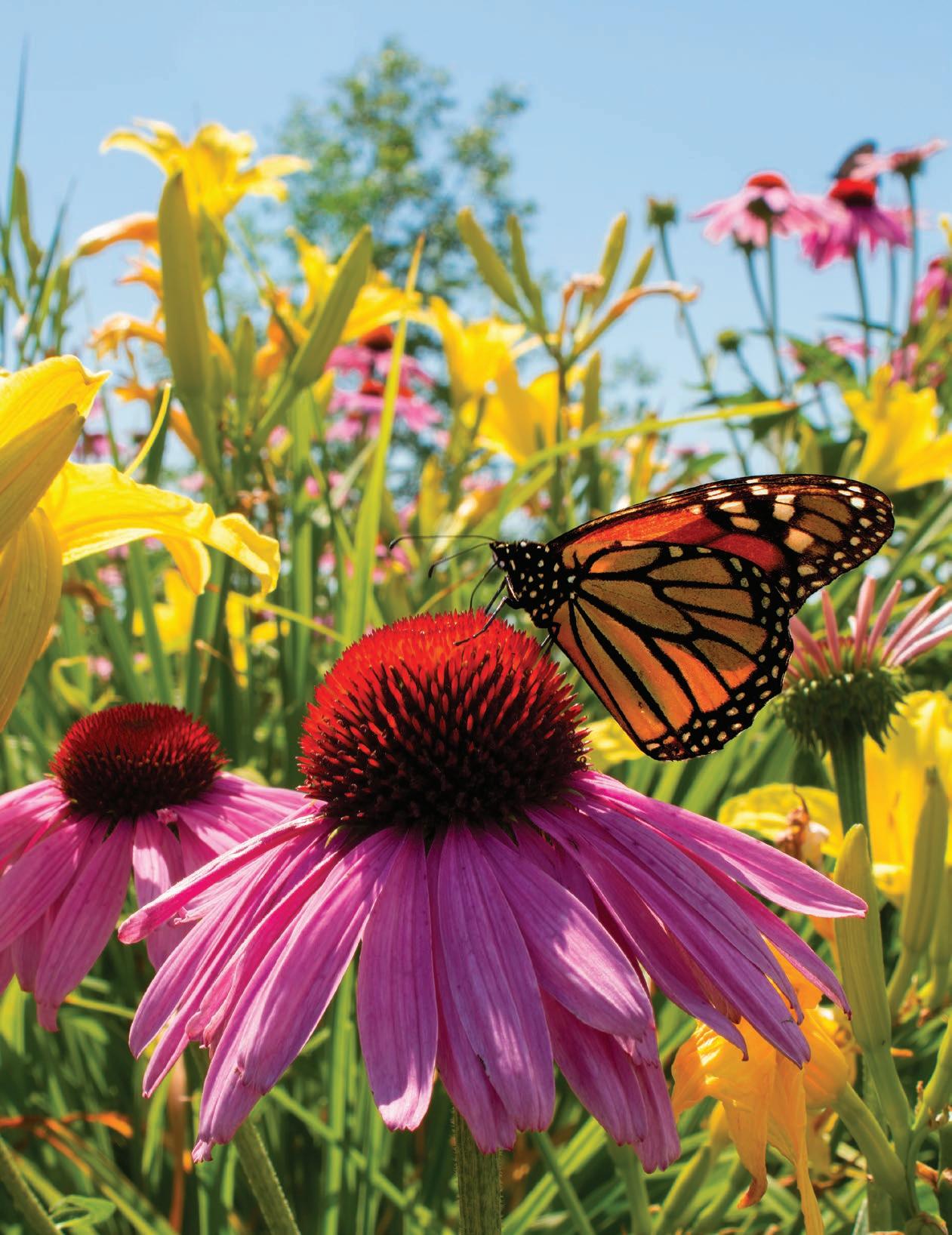
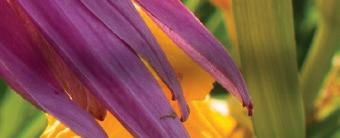

























If authentic experiences served with southern hospitality are on your “to-do” list, Sanford is the place to be. Make the most of your visit, with this handy-dandy checklist of 9 must-do experiences in Sanford, NC.
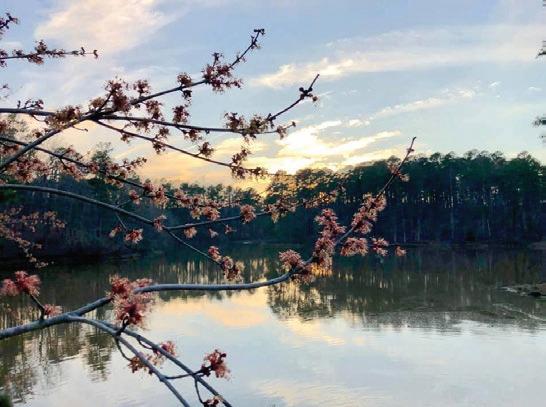
Enjoy some fresh air while exploring 177+ lush acres of San-Lee Park. Hike through the park’s many winding paths or hit the trails with your mountain bike. Pack some PB&J’s to enjoy a picnic or fish in one of San-Lee Park’s well-stocked lakes. If you’re a birdwatcher, be on the lookout for songbirds such as the Great Crested Flycatcher and Hooded Warbler. (San-Lee is featured on the North Carolina Birding Trail list.) You’ll also want to check out the paddle boat rides available seasonally.
Get ready for golf, golf, and more golf! With four award-winning public golf courses in the area, Sanford is a go-to destination to swing a club. Voted one of the top golf courses in the world, Tobacco Road Golf Course is an extreme course with skillchallenging greens that aren’t the typical shape or size. For a more leisurely round of golf, Carolina Trace Golf Course prides itself on being playable for golfers of any skill level. Quail Ridge Golf Course offers a pleasant, affordable course as well as a full grill, so families can spend the day on the links. Rounding out the list is the Sanford Municipal Golf Course, which offers beautiful views of blooming azaleas, pine trees, and Buffalo Creek.

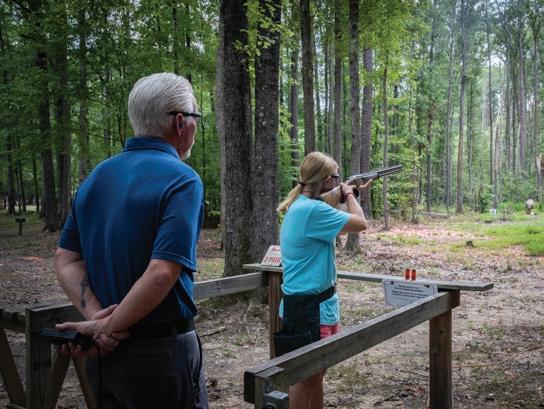
Nestled amidst 65 acres of scenic woodlands, Deep River Sporting Clays is a one-of-a-kind sporting facility featuring 13 shooting fields, a wobble deck, an 8-lane shooting pavilion and a 1,300 sq. ft. clubhouse and pro shop. Book private lessons with one of the NSCA and CSM certified instructors at the shooting school or mark your calendar for the next Southern Side by Side Championship and Exhibition.
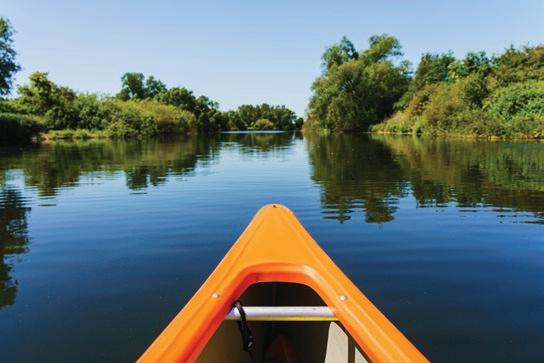
Paddle the day away on either the Deep River, Cape Fear River or Jordan Lake. Launch a canoe or kayak from several boat ramps including two new boats ramps which will open early spring. Looking for a more low-key, relaxing experience? Drop the oars for some river tubing. Float through picturesque forests, cross under Camelback Bridge and bask in the beautiful Sanford sun. Learn more about our amazing water trails.
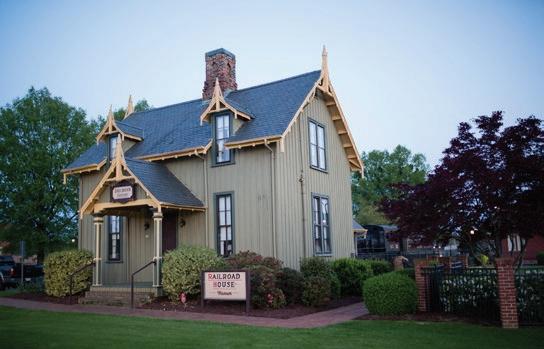
Stoke your passion for history at the Historic Railroad House where you’ll learn about the City of Sanford’s beginnings. As the oldest house in Sanford, the Railroad House was originally built after the Raleigh & Augusta Airline Railroad was extended from Raleigh to what is downtown Sanford today. Narrowly escaping destruction in 1962, the Railroad House now serves as a local museum for visitors.

As you wind your way through the city, be sure to take in Sanford’s popular Mural Art Trail. These larger-than-life works of art capture the city’s rich history and imagination, including the Tobacco Mural celebrating Sanford’s rich agricultural roots and the “Off to War” WWII Mural honoring Lee County veterans. Other more whimsical murals capture the spirit and creativity of the area, such as the Dream Mural and the Fairview Dairy Mural — the first of its kind in North Carolina, featuring 3-D cows. This memorable must-see will certainly leave you with some “Instagrammable” photos to share with friends and family.

Fans of the performing arts will want to visit both the Mann Center of North Carolina and Temple Theatre. Described as “The Crown Jewel of Lee County,” the Mann Center serves as the Arts and Community Center of Lee County. It’s home to various community theater events, concerts and other productions throughout the year. While you’re there, be sure to check out the creative painting of the Brush & Palette Club. More on-stage entertainment can be enjoyed over at the historic Temple Theatre. Built in 1925, this theatre space is where you can attend professional stage productions, special events and more throughout the year.
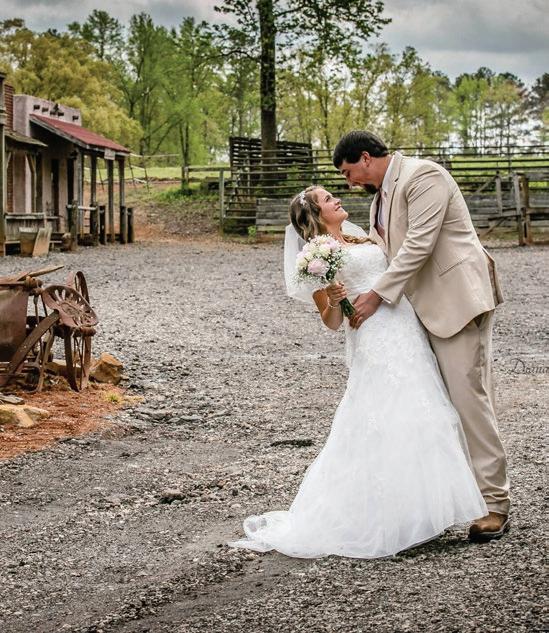
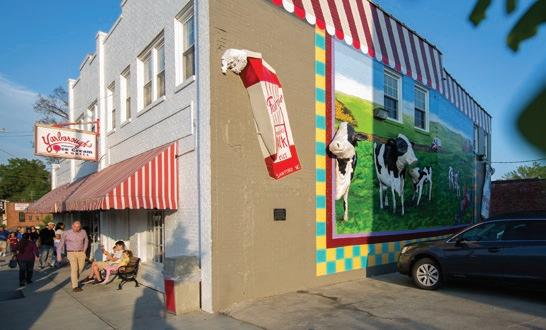
Experiencing all there is to do in Sanford is bound to make you hungry. Stop by one of Sanford’s iconic eateries or drink spots to satisfy your appetite and quench your thirst. Local favorites like Fairview Dairy Bar and Mrs. Lacy’s Magnolia House are perfect for lunch. For dinner, snag a table at restaurants like The Flame Steakhouse or La Dolce Vita Pizzeria. Local Joe’s, Hugger Mugger Brewing Company, Camelback Brewing Company and Wild Dogs Brewing Company are some beloved establishments to grab a drink. Or satisfy your sweet tooth at Yarborough’s Homemade Ice Cream. On the whole, there’s no chance you’ll leave Sanford with an empty stomach.
Finally, there’s one big reason some folks visit Sanford and Lee County and that’s to tie the knot. The area boasts some of the most beautiful ceremony and reception venues around. From the class and sophistication of Hawkins House to the rustic charm of Sugarneck. On the other hand, you can say, “I do!” overlooking scenic fairways at Carolina Trace Country Club or go all out western at Circle M City. Whatever your ideal wedding day hold, Sanford is the destination where it all can happen.

For more fun, celebrate Sanford’s Sesquicentennial at the Sanford Birthday Bash on April 6

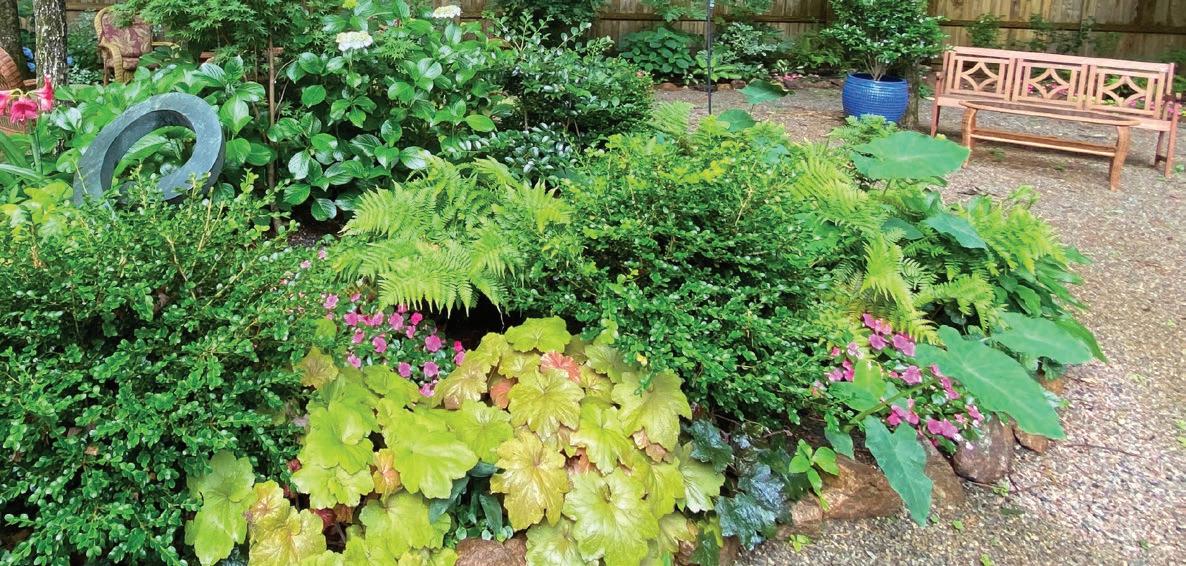
Raleigh Garden Club is on the cusp of celebrating their 100th anniversary in 2025. To assist in the fundraising for that milestone, they are hosting three garden-related events.
May 31 & June 1, 9am – 4pm
The first of these is an open-garden tour of eight inspiring gardens in Wake County Friday, May 31 and Saturday, June 1st. Four home gardens are located south of the 440 beltline and four are north of the 440. The $25 ticket for this event gains you admission to any/all the gardens each day.
Each garden will have a noted artisan station on site. The artisans’ garden-themed art will be for sale— dogwood-adorned pottery, landscapes, sculptures, bird feeders and tree jewelry, moss-scapes, stained glass art, ceramic plaques, and decorative wreaths.
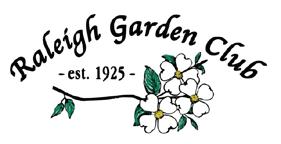
Tickets can be pourchased at the RGC website:
raleigh-garden-club.org
May 31, 7:30pm – 10:30pm
Your $100 ticket entitles you to attend the evening wine and cheese party at one of the homes on our tour, as the sun goes down and the garden lights dazzle that first day of our Home Garden Tour. You can explore the golf fairway and greens, enjoy the ambience of a blazing bonfire under Edison lights, and stroll along the 65’ stream flanked by 1000s of lush plants. You can sip your wine and sample delicacies on the charcuterie boards as you relax in this magical outdoor garden. The 75 available tickets for this event will sell out fast!
June 2, 3pm – 5pm
At this event, visitors can peruse the spacious JC Raulston Arboretum, with over 6500 labeled plant species to enjoy. Our Garden Party gourmet refreshments will be served in the Ruby McSwain Building. We’ll also have on display items that each of our Tour artisans and Club members have gifted for the Silent Auction finale fundraiser. During the afternoon, folks can place bids on their favorite items, and at 4:30 bids will close. The highest bidders will be able to take home their newly-purchased, garden-themed art, knowing that they’ve contributed to preparations for our 100th Anniversary celebration!

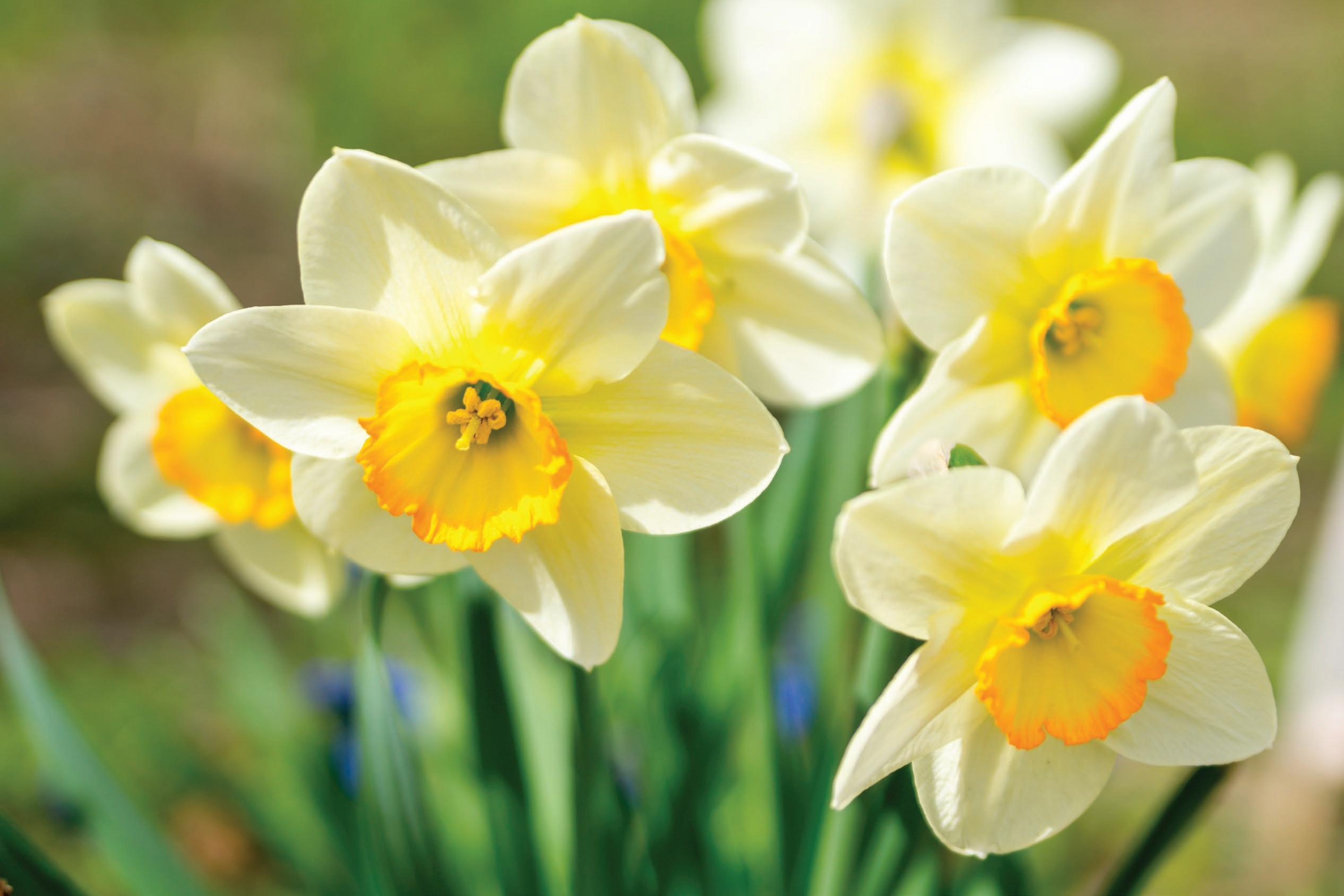






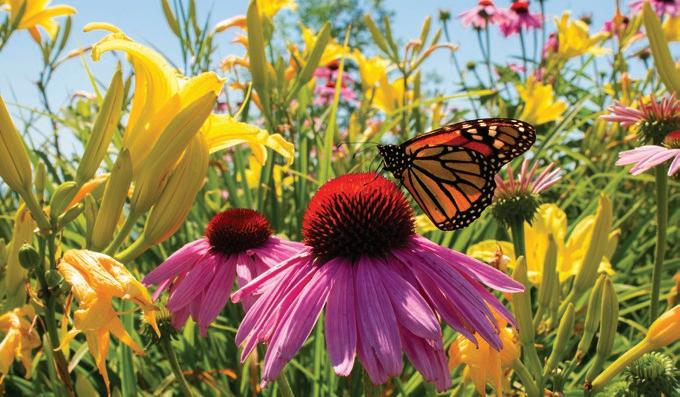

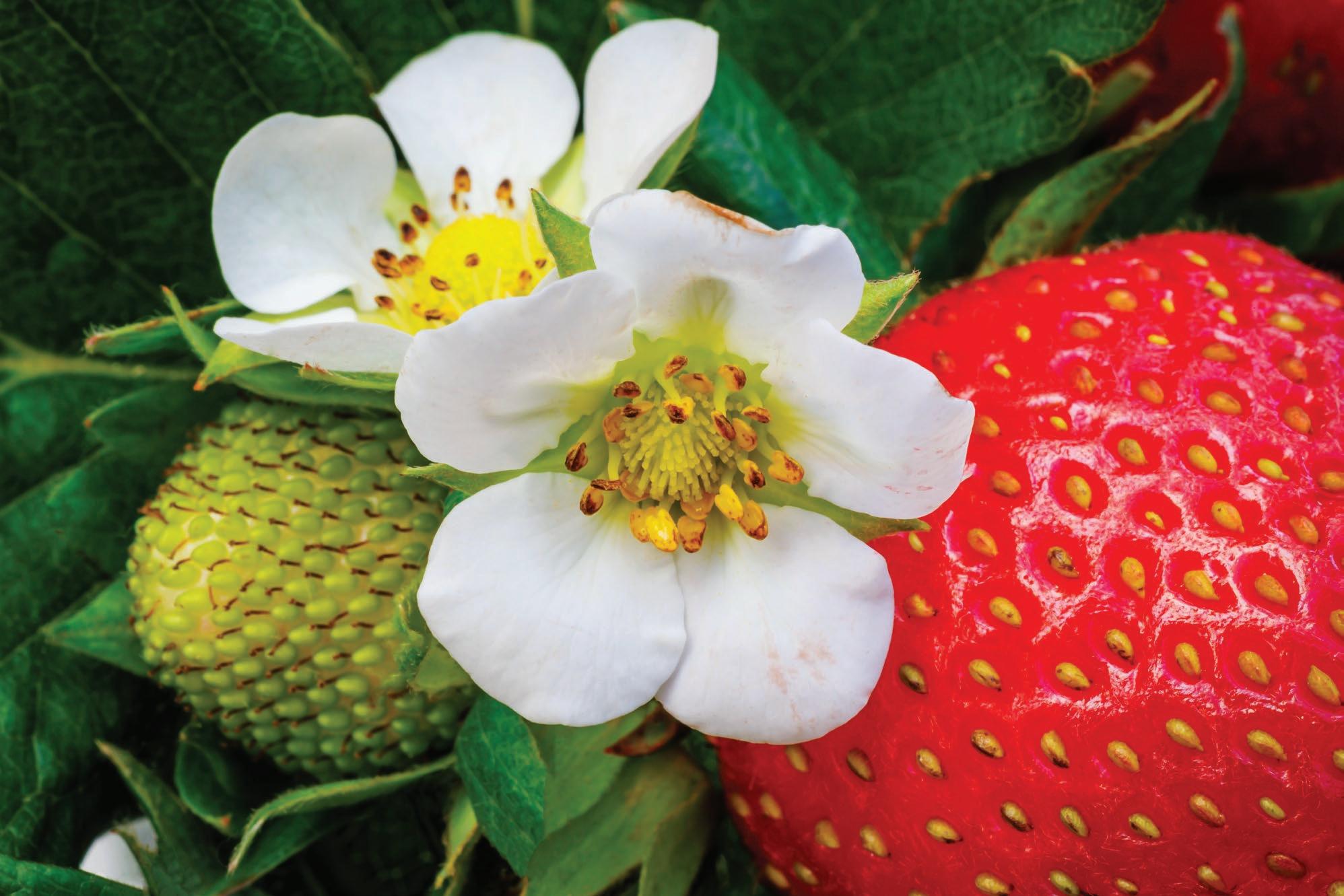


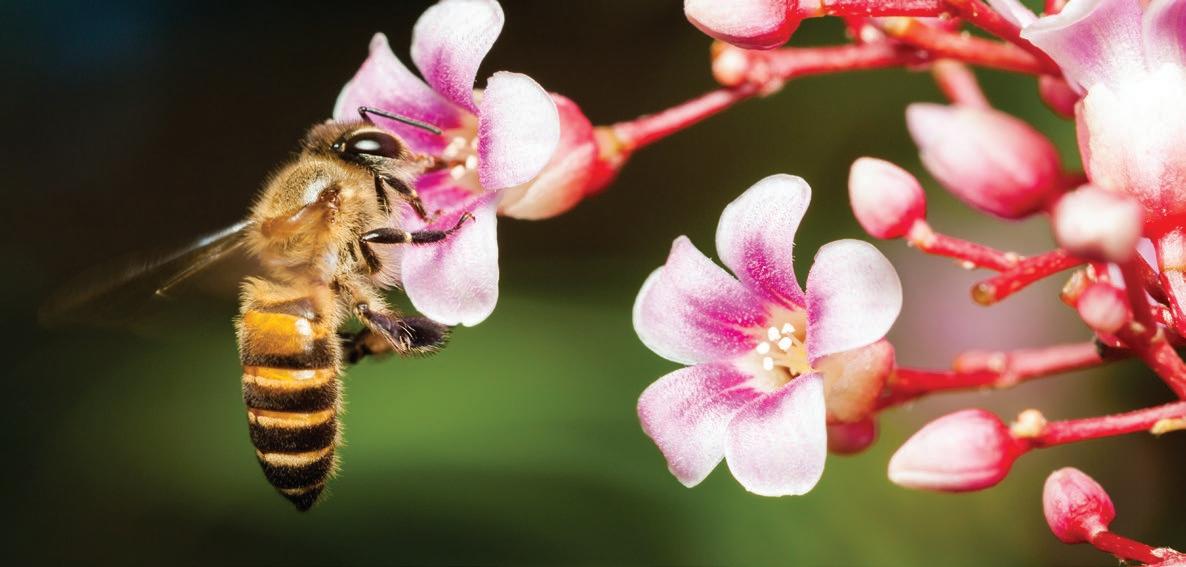
As warmer weather approaches, we will begin to see pollinators, specifically honeybees, out and about in our yards and gardens. So, what are honey bees doing this time of year and during our other seasons in the Piedmont of North Carolina, and how can we as gardeners help them have a successful journey throughout the year?
Honey bees do not migrate south, or hibernate, or allow their bodies to cool down in winter as many insects do. When temperatures are at their lowest, all the honey bees that make up a colony will get into a tight cluster with the queen in the center. The worker bees consume honey and vibrate their wing muscles which generates the heat needed to keep the cluster warm. When daytime temperatures warm above 50 degrees, worker bees will break the cluster and leave the hive to forage regardless of what the calendar says.
In the Piedmont, springtime for honey bees typically begins in late January or early February. As daytime temperatures allow, bees forage for both nectar and pollen. Nectar provides their carbohydrate, the primary ingredient in honey, and pollen provides their protein which is critical for feeding all the new baby bees the colony will raise for the coming spring peak foraging time. Springtime pollen and nectar sources include maple, dandelion, crocus, chickweed and primrose.
The peak of honey bee foraging activity occurs in early summer between mid-April and mid-June. Beekeepers refer to this time period as ‘the nectar flow’. In the Piedmont of North Carolina, we have an abundance – quite literally a glut – of nectar during the ‘flow’. This is the time period when honey bees will create the lion’s share of their honey stores. A healthy colony can easily create the fifty to sixty pounds of honey they will need to sustain them through the coming winter, plus excess honey which the beekeeper can harvest in late June or early July. In the Piedmont, nectar producing trees are the most abundant forage sources during the flow. These nectar trees include the tulip poplar, locust, holly and native persimmon.
Unfortunately, by mid-July the nectar flow has ended almost as abruptly as it began and we enter a time period beekeepers refer to as the ‘dearth’. The temperatures are hot and quality forage sources are few and far between. Gardeners can really help the bees during the dearth with blossoms which tolerate our heat and dry conditions. Desirable late season blossoms for bees include white clovers, mints and bee balms. During the heat of summer bees will also be foraging for water which is transported back to the hive and evaporated to provide for cooling of the colony.
As temperatures begin to cool in the fall, we have another nectar flow albeit much smaller than in the summer. Ideally this flow will replenish honey stores consumed during the dearth to get the colony back to the total amount of stores needed for winter. If not, the beekeeper will need to take action and provide supplemental food in the form of sugar syrup to ensure the bees can make it through the winter. Sugar syrup is never fed when combs for harvest are installed on the hive to prevent any adulteration of natural honey intended for human consumption. Forage plants for the fall flow include goldenrod and aster. Many consider these plants nuisance weeds but they are a critical resource for the bees to supplement their stores for winter. If possible, do not mow the goldenrod and asters until all the blossoms are gone.
Often times, it is difficult to be a successful gardener in North Carolina and not use pesticides. Pesticides should only be used when necessary and then only in accordance with the label. Liquid pesticides are preferable to powders, and should never be applied when any pollinators are foraging. Applying liquid pesticides as late in the day as possible will allow for overnight drying and less exposure to foraging pollinators.
Insect pollination is responsible for approximately thirty percent of our food and fiber crop production in North Carolina. Pollination is unintended by the insect but is a fortunate side benefit of their food foraging activity. By planting and encouraging pollinator desirable blossoms – especially those that are available during the late summer dearth – you will greatly enhance pollinator foraging resources and can enjoy our good North Carolina pure honey with a little extra pride in the knowledge that you are helping our precious honey bees.
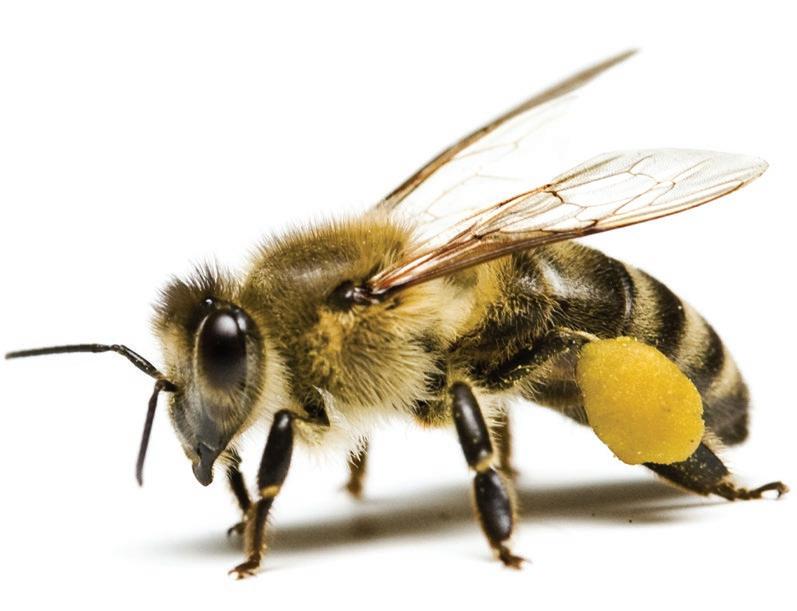
For further information on pollinators and their plant resources please reference the following sites:
North Carolina Extension Gardener Plant Toolbox (https://plants.ces.ncsu.edu/)
North Carolina State Sustainability (https://sustainability.ncsu.edu/campus/pollinators/)
North Carolina State Apiculture & Beekeeping (https://entomology.ces.ncsu.edu/apiculture/)
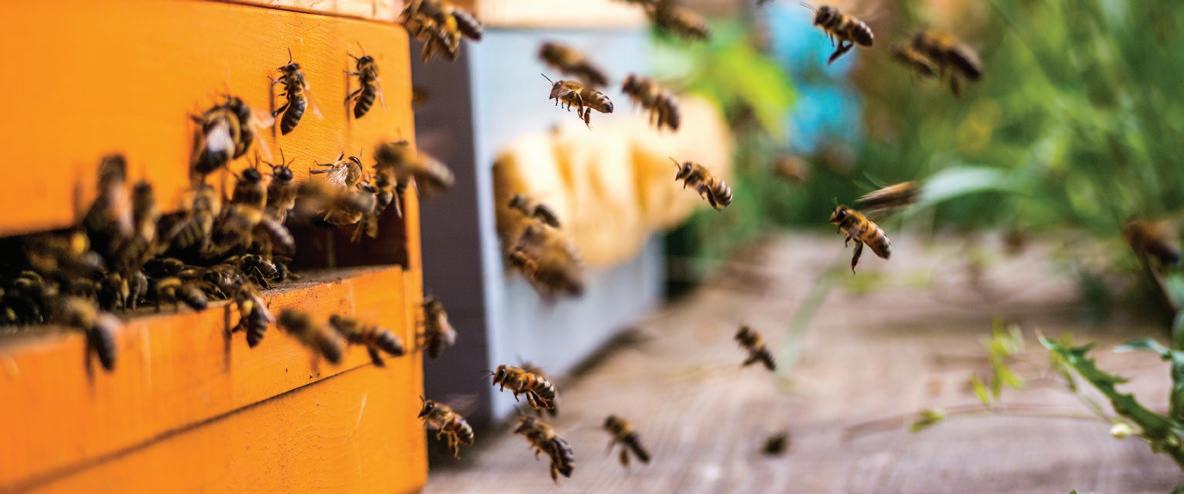







There are plenty of myths related to gardening, especially when it comes to best planting times. Some gardeners say fall, others say winter, but human tendencies are to plant in spring. So, is there a “best” time to plant? The answer is, it depends. With few exceptions, the best time to plant is when you have time, when the ground isn’t frozen, and when you can keep your newly planted plants watered.
The key to successful planting and transplanting is very simple…a well-prepared planting bed, putting the plants in the proper location, and proper irrigation afterwards. Yes, it’s really that simple!
If the question is when do plants establish the fastest, the answer would be midsummer. Although you almost never hear midsummer planting mentioned, this is by far our favorite time to plant. Each year we plant hundreds of plants during weeks that the high air temperatures reach the upper 90s or 100s. Summer planting allows us to know how much space already occupied, since most plants are up and growing then.
Most plants perform well planted in summer, since their roots are growing so fast that establishment and subsequent growth is faster than in any other season. Summer planting, however, means you must have a reliable water supply during the establishment period. In other words, you’ll need to pay much more attention to irrigation of your newly planted plants, but for a far shorter time, because of the quicker establishment. It used to be that you had to be around to cut the water on and off manually, but nowadays, there are a variety of faucet timers that can manage the on/off hose operations for you if you’re away.
Spring is probably my second favorite time to plant, but the main problem I run into is planting on top of dormant plants that have yet to re-emerge. Obviously, the key is a good garden labeling system. Spring is a nice compromise for those who have a hang-up about summer planting.
Most printed gardening literature says fall is best for planting and, for most plants, fall is indeed a fine time. Because the temperatures are cooling, plants generally require supplemental watering less often, but over a much longer period to get them fully established.
There are, however, a small number of plants… mostly what we term, “hardy tropicals”, that should never be planted in fall. These include hardy palms, bananas, elephant ears, and agave (century plants). These plants simply don’t get established quickly enough in fall to survive our cold winter temperatures.
This same group of plants should also not be planted during winter in climates where the temperatures regularly drop below 20-25 degrees F.
All plants from heated greenhouses should never be planted outdoors when frost is eminent, so that eliminates both late fall and winter. These plants are in active growth and need to first acclimate (prepare for dormancy) to be able to withstand even a light frost.
As long as the ground isn’t frozen, and you can tell what is already planted in the area, winter is a good time to plant dormant plants in many regions. Winter is not a good time to plant in more northerly climates where the soil freezes deeply and where frost heaving may actually push poorly anchored plants out of the ground.
While the soil may stay moist longer in winter, due to cooler temperatures, it is important to remember that evergreen plants still lose water through their leaves. During abnormally dry winters, most people simply aren’t thinking about watering newly planted plants often as they should, resulting in dehydration or death. Consequently, when planting or transplanting evergreen plants in the winter, we recommend spraying the foliage with an anti-transpirant or anti-desiccant, to reduce foliar water loss.

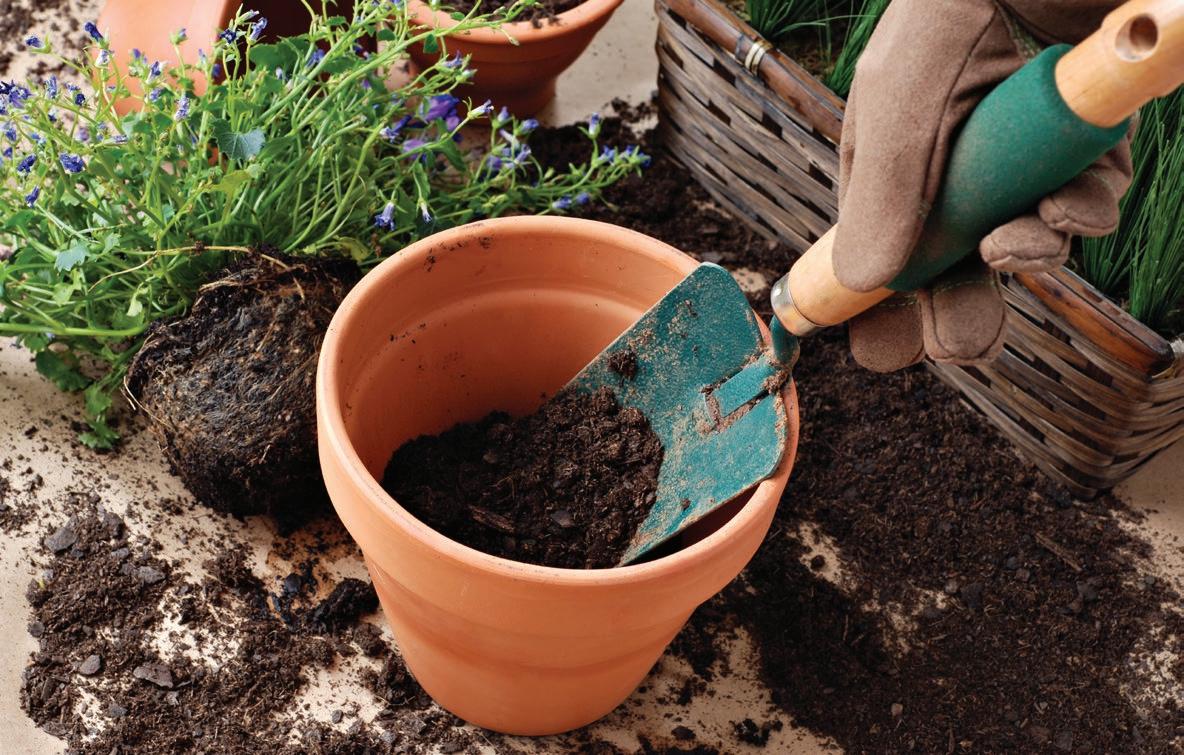
Finally, plants in the ground have a much better chance of surviving than those that remain in containers outdoors. The key cause of plant damage/ death in containers is temperature damage to the plant roots. In winter, plant roots in pots are damaged at much higher temperatures than they are in the ground. As a general rule, plant roots are 20-25 degrees less hardy in containers than the same plant in the ground. It’s rare that winter soil temperatures in our region drop much below freezing, which keeps roots insulated.
When plants stay outside in containers, winter root damage begins to occur between 15 and 30 degrees F, depending on the species. In summer, the opposite happens. Potted plants exposed to sun can see root temperatures in excess of 130 degrees F.
Not only are root temperatures a cause for concern in containerized plants, but potting soils also begin to breakdown after 12 months. This causes the percentage of air space in the soil to decrease as does the soil pH. This slows down plant growth, and makes the plants far more susceptible to root rot. So, pick a planting season that works for you, and get those plants in the ground.
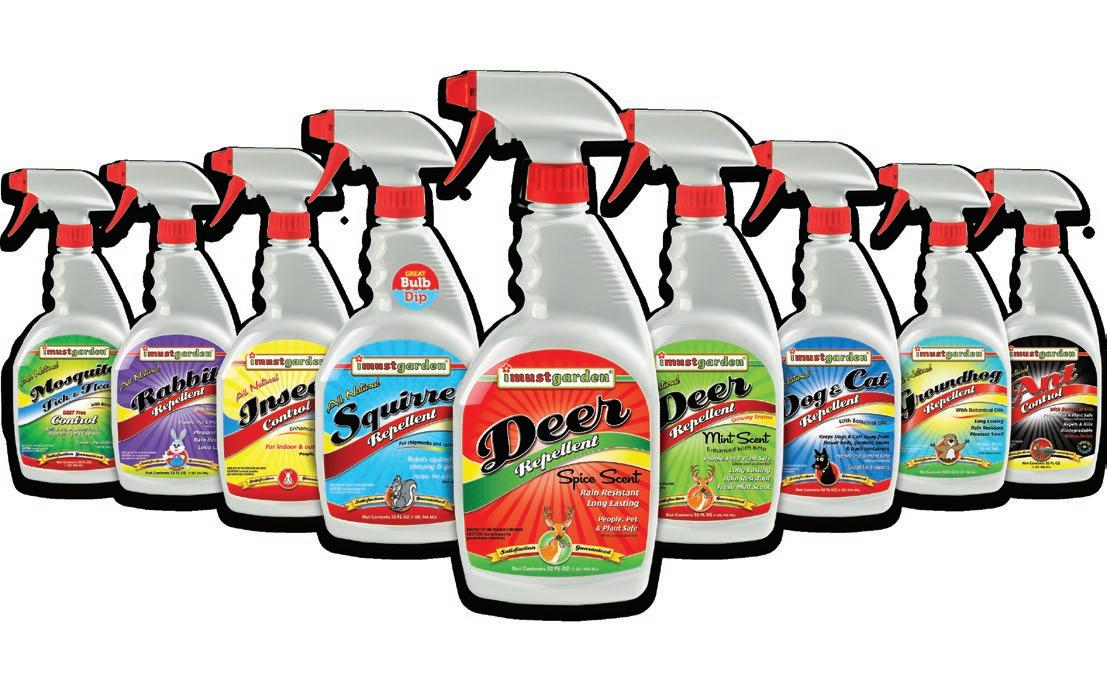
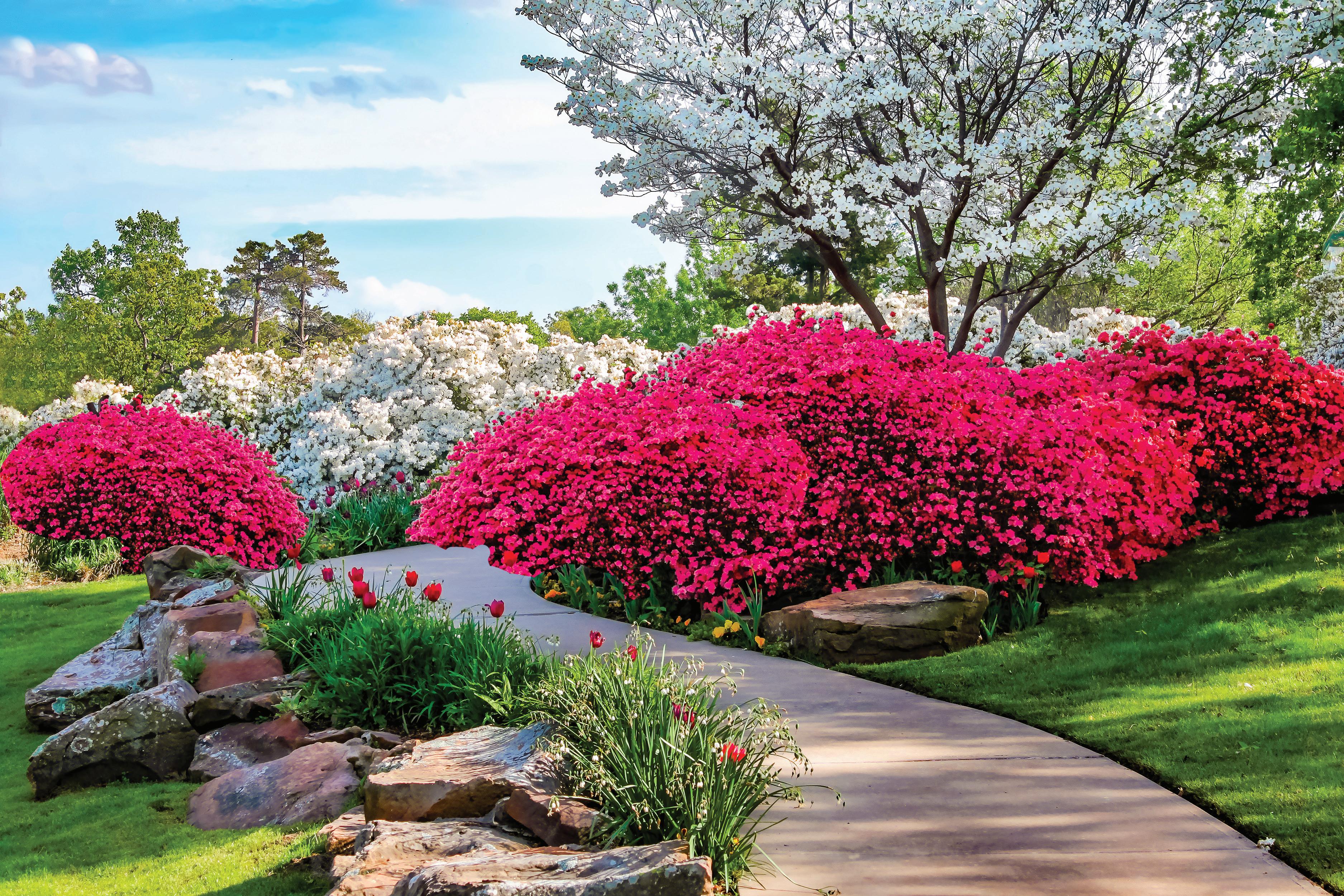

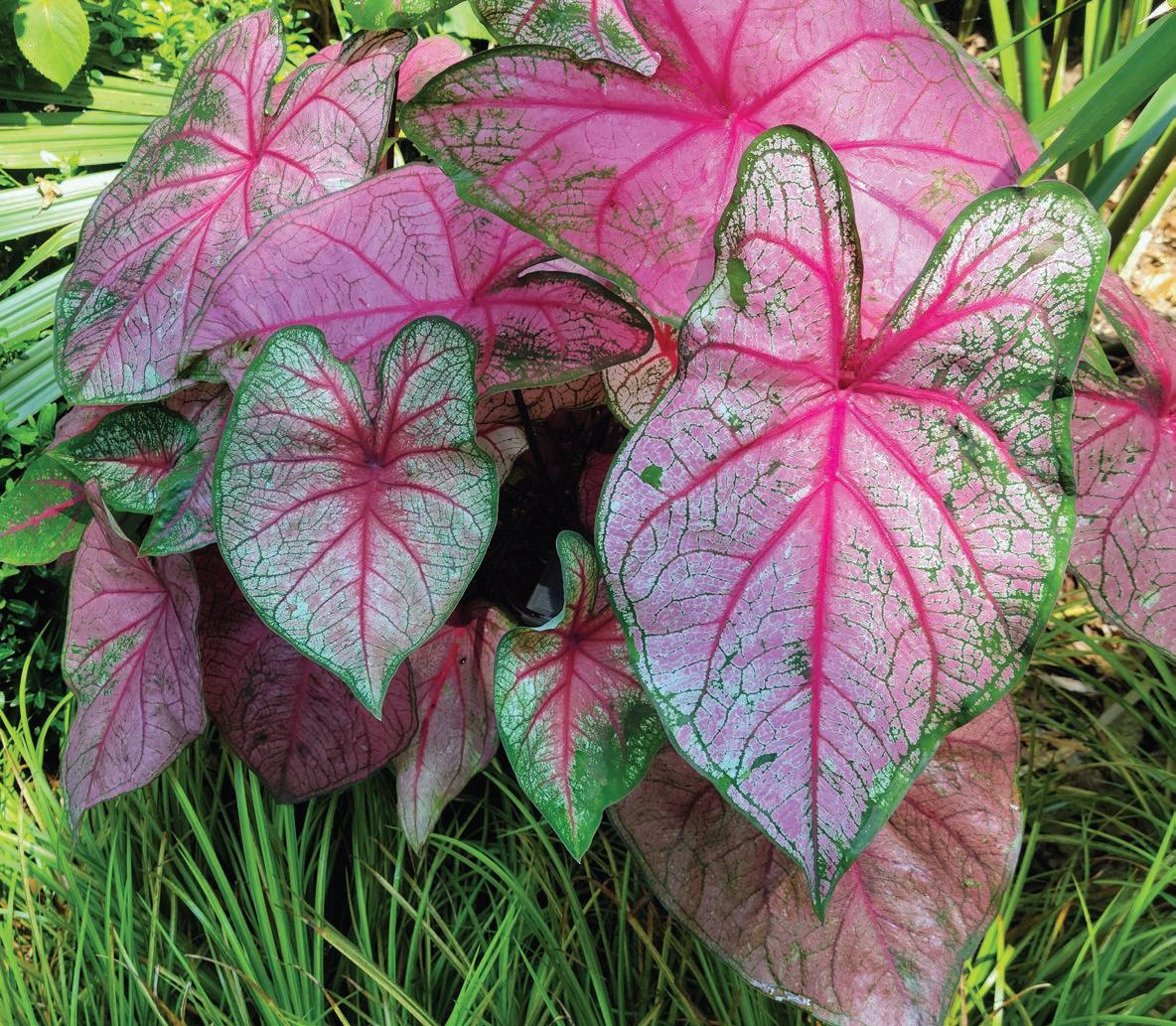
Late April into May is the right time to include more summer-flowering bulbs into the landscape and your empty containers.
Why do we wait so late to plant the bulbs, tubers, and corms of various Elephant Ears, all sorts of Lilies, Gladiolus, Oxalis, Dahlias, and everything else deliciously summery from Bananas to Cannas?
It is because our soil temperatures in the Carolinas finally warm enough for these tender tropicals, which may be indigenous to Southeast Asia, South America, Africa, Mexico, or Polynesia, to survive and thrive.
Some summer bulbs can acclimate here, returning even bigger and better next year, if they are correctly sited in the right spot. Others should be treated like summertime annuals. Simply enjoy them, then replant more next year.
It really depends on the style of your landscape. A cottage garden wouldn’t look the same without drifts of elegant Lilies, whereas a poolside tiki hut begs to be surrounded by enormous Elephant ears. The colorful leaves and hot flowers of Cannas easily crossover from traditional Victorian to modern eclectic gardens. A butterfly garden must have wands of Liatris. Old-fashioned Crinum, Spider Lilies, Four O’Clocks, and Tuberose belong outside any traditional Southern home.
Create a dramatic summertime focal point with tropical Elephant Ears. This common name has been associated with Alocasia, Colocasia, and Caladium, as well as many similarly-shaped houseplants, including the chartreuse-leafed Xanthosoma ‘Lime Zinger’.
Nothing adds a tropical feel to a landscape like enormous banana leaves swaying back-and-forth in the gentlest wind. Tender bananas are better suited to be containerized, so that they can be protected in wintertime; but, the most cold-tolerant perennial banana is Musa basjoo, which is almost carefree, once established.
Plant hardy banana rhizomes in late Spring, so that their roots can get well-established while the soil is hot. Though the entire herbaceous clump will die back in winter, and you will want to cut it off, new growth will re-emerge even larger in circumference in early May and quickly shoot upward to top out around 8 to 10-feet tall. Bananas need as much sun as possible and love humidity. Though you may see a flower on your plant, you probably won’t get fruit. A consolation is that you can use banana leaves to wrap and grill meat for your own backyard luau.
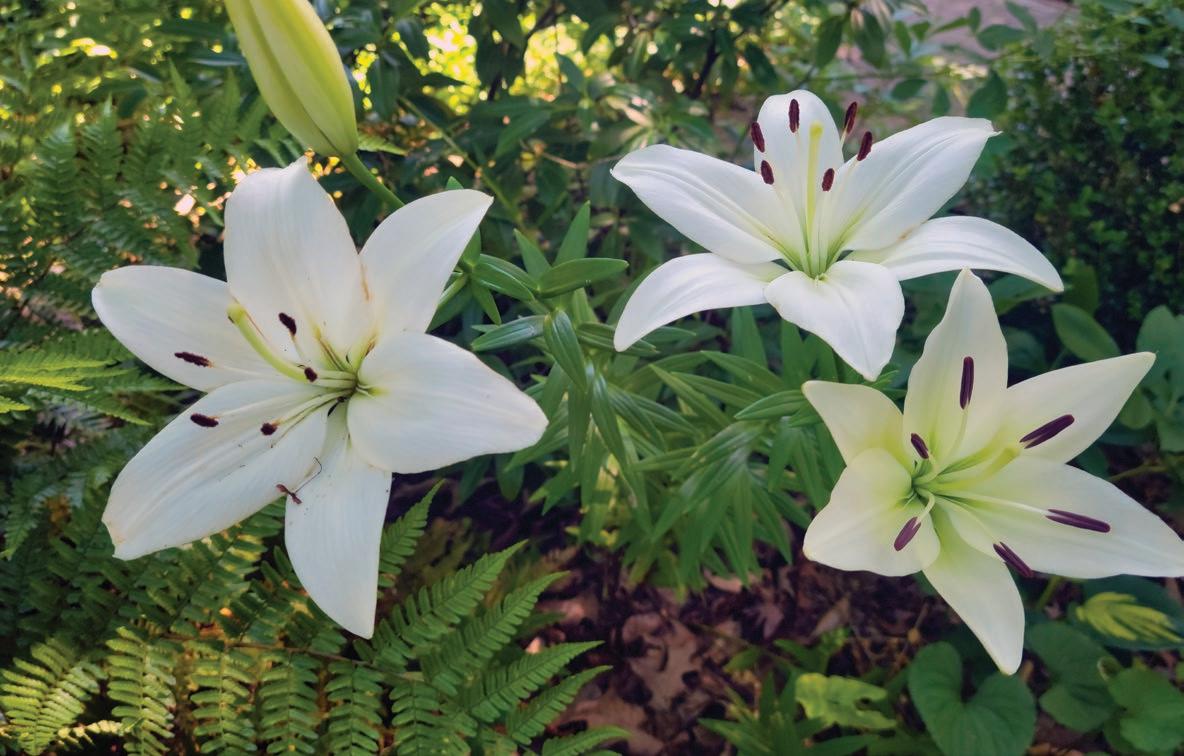
Generally, the tips of Alocasia leaves are going to point upwards like they have been lifted by the wind. The Colocasia, also known as Taro, will appear more heart-shaped, presenting a flatter face, with the bottom of each leaf pointing toward the ground, with the exception of a few smaller varieties and the enormous, gravity-defying Colocasia gigantea ‘Thailand Giant’. Caladium are the much smaller, very colorful Elephant Ears with various patterns in pinks, reds, whites, and greens.
Both Alocasia and Colocasia grow best sited in part shade to full sun, planted in compost-rich, moistureretaining soil, and they perform especially well in pots. Remember that the hotter the location, the better for these plants.
A tip for success growing Caladium is to plant their bulbs anywhere you like from a traditional shady spot in the landscape to a lot of sunlight in a container, allowing them to grow into and adapt to their summer location as their leaves develop. They can tolerate being a bit drier in deep shade, but Caladium planted in full sun will need constant moisture. They will have to be lifted and stored in the Fall. Don’t replant your Caladium bulbs too early the next Spring, or they may rot.
Cannas must be discussed while we are praising bigleaved plants. These bold perennials grow in blazing heat with theatrical upright leaves ranging from 2 to 10-feet tall, and have re-blooming flowers in pastel pinks, white, and bright yellow, to rich apricot, hot orange, and blood-red. Again, rich soil, moisture, and sunlight are the preferred situation for Cannas, with the obvious exception of part shade for the white variegated-leaved ‘Stuttgart’.
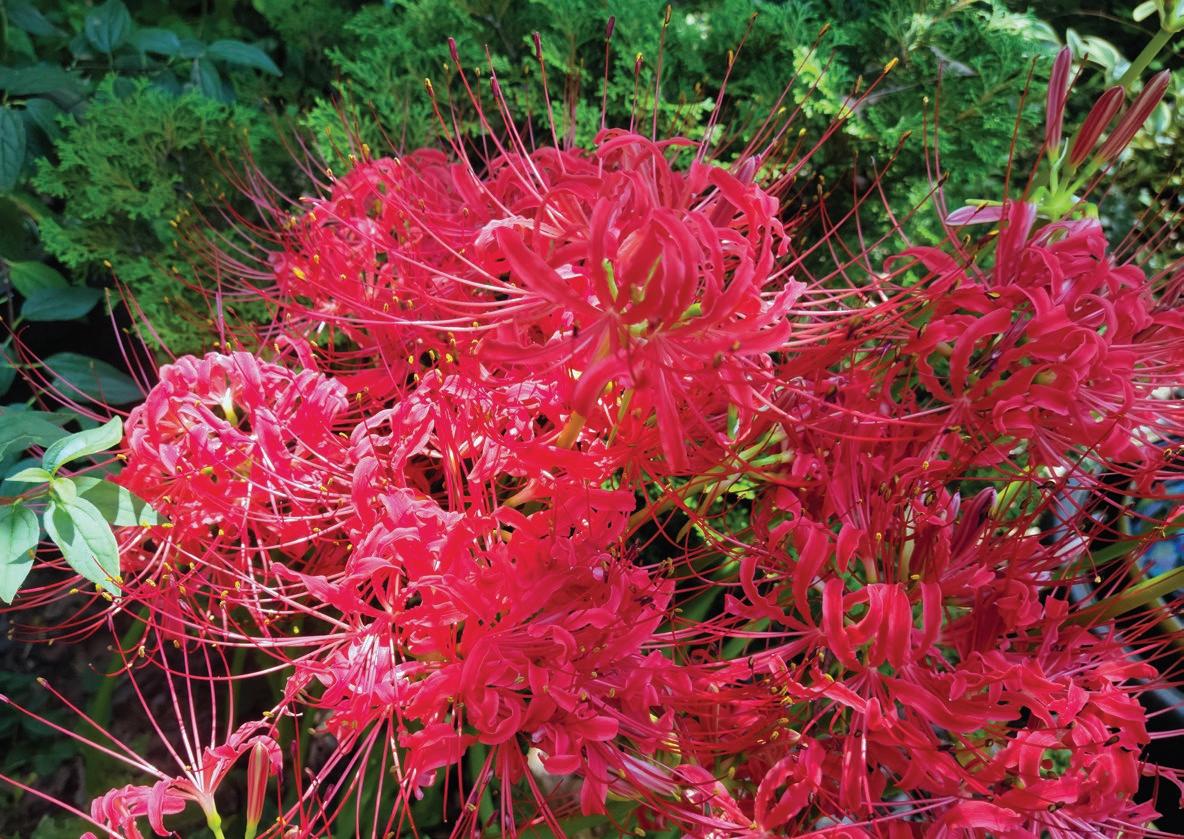
Zantedeschia, are not true lilies, but a member of the Araceae. You should grow solid green-leaved Callas in a moist site in the garden, in containers filled with water-retaining potting mix, or sunk directly into a water garden, but variegated-leaved varieties prefer a drier location.
A late summer delight are the Zephyranthes, or Rain Lilies. Native to the arid Southwest from Texas to Colombia, these low starry flowers will burst into bloom almost overnight after a good soaking rain. Rain Lilies will easily colonize in full sun and welldrained soils.
A similar event occurs with Lycoris radiata, the Red Spider Lily, aka Surprise Lily, or more aptly named Hurricane Lily. This shiny red, globe-shaped bloom emerges on a bare stalk after a hard rain around the first of September, which coincides with the peak of hurricane season. After flowering, its broad, deep green leaves emerge to grace your garden through the entire winter. This bulb wants well-drained soil and lots of sunlight.
Depicted in ancient art, stylized in woven tapestries, and still gracing our homes and altars, Lilium are beloved for their recognizable open six-petaled flower and intensely sweet fragrance. However, true Lilies are grouped by type, which can be extremely confusing when you try to determine an Asiatic from an Oriental from a hybrid or species lily. Most Lilies are long-lived perennials that prefer to grow in full sun to part shade in extremely well-drained soils.
This article has been just a quick sampling of a few of the marvelous summer bulbs available. To learn more about the wide variety of summer bulbs that may be perfect for your garden check the websites of the great bulb companies we have in the Southeast and visit your favorite local garden center.
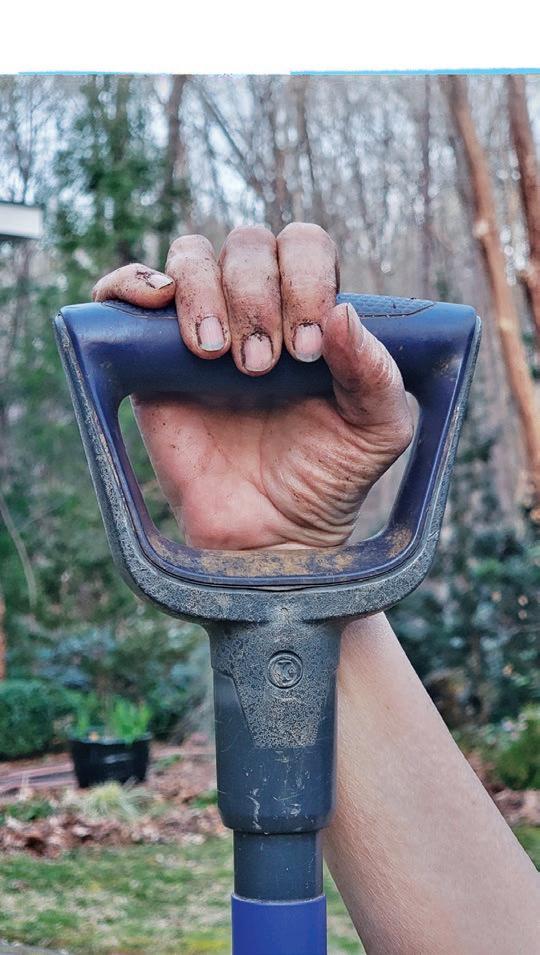
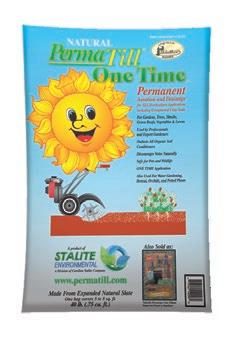
PermaTill One Time
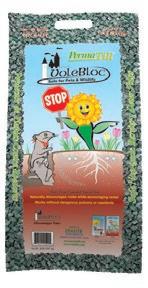
Natural, Porous Expanded Slate Particles
• Provides aeration and drainage in wet weather
• Reserves moisture for dry weather
• Protects roots from damaging voles
• Lasts for years
Available at garden centers in two sizes:
40 lb PermaTill and 20 lb VoleBloc
Photo Credit for Let’s Plant Summertime Bulbs: Pam Beck EN
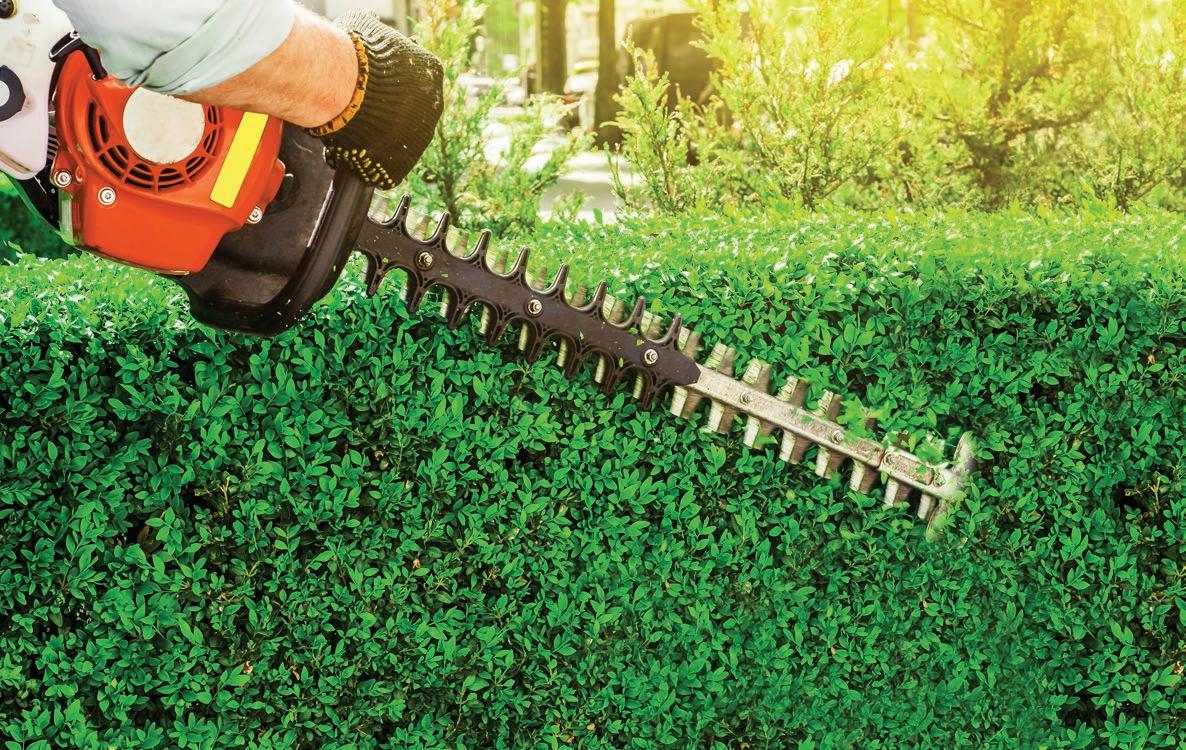
Pruning is the removal of plant parts to improve form and growth of plants. The reasons for pruning include: training, maintaining health, improving quality, and controlling growth.
The first pruning of young trees and shrubs always consists of removing broken, crossing, and weakstructured branches. Trees with a central leader (excurrent form), such as cedar, sweet gum, or pin oak, may need little or no pruning except to eliminate branches competing with the central leader. For greatest strength, branches selected for permanent scaffolds should have a wide angle of attachment with the trunk. Branch angles of less than 30 degrees from the main trunk result in a weak attachment, while those between 60 to 70 degrees have a very strong attachment.
If pruning to maintain health, consider removing the dead, dying and diseased wood (the three Ds). Any dying branch or stub can be the entry point for insects or disease that could spread to other parts of the tree. Thinning out branches will also help prevent disease and loss of vigor, while developing a sound framework for the plant. By thinning you will allow light and air to penetrate throughout the shrub, resulting in even growth of the foliage. The more flowers and fruit a plant produces, the smaller they become, as can be seen on a rose bush or fruit tree that has not been pruned. By pruning you reduce the amount of wood and this diverts the energy into the production of larger, though possibly fewer, flowers or fruit or both. It is important to know if the plants you are pruning flower on oneyear-old wood or new wood. This will help you determine when to prune in order to promote the production of wood that will bear flowers or fruit.
Over time, trees and shrubs will often out-grow their boundaries. This is why it is extremely important for you to know what you are planting and what the requirements are each species. Where space is limited, regular pruning will become necessary to maintain a plant that is too large for the space. Street trees for example are often deformed because they must be pruned to prevent damage to power lines. When street trees need to be planted care should be taken to only plant species with a mature height that will not interfere with power lines.
There are two pruning techniques that are used continuously when pruning: thinning and heading back. Thinning is the removal of an entire branch back to the main trunk or stem. Heading back is simply shortening the length of the branch. Problems do tend to result when either of these techniques is used continuously without the other.
Proper pruning should involve a combination of the techniques to keep a plant at a chosen size, shape, and density
When a shrub gets completely out-of-hand, it is often necessary to prune drastically or head-back. Some shrubs can tolerate this and others cannot. Rejuvenation is another technique that you can use for overgrown shrubs. To rejuvenate the plant, cut it back to 18” and allow 30-40 days for it to re-sprout. Keep in mind rejuvenation is best done in the late winter or early spring.
When selecting pruning tools select ones that will be able to do the job. Pruning shears are good for branches up to ½ inch in diameter. There are two types of pruning shears: anvil and scissor action. The scissor style usually costs more, but makes cleaner, closer cuts. Loppers are pruning shears with long handles that tend to cut up to 2-inch branches, and they are good for hard-to-reach places. A small handsaw tends to work better for pruning larger branches, and it makes a clean cut.
When pruning twigs and small branches, always cut back to a vigorous bud or an intersecting branch. Large branches should be removed flush with the branch collar at the base of the branch not flush with the trunk. The collar is the swollen area at the base of the branch. This collar region allows for proper healing of the wound and protects against disease and decay organisms.
When to prune trees and shrubs depends on the particular plant, when it flowers or fruits, and the particular affect you’re trying to create. If you have questions regarding pruning feel free to call your local Cooperative Extension Office. We provide our residents easy access to the resources and expertise of NC State University and NC A&T State University.
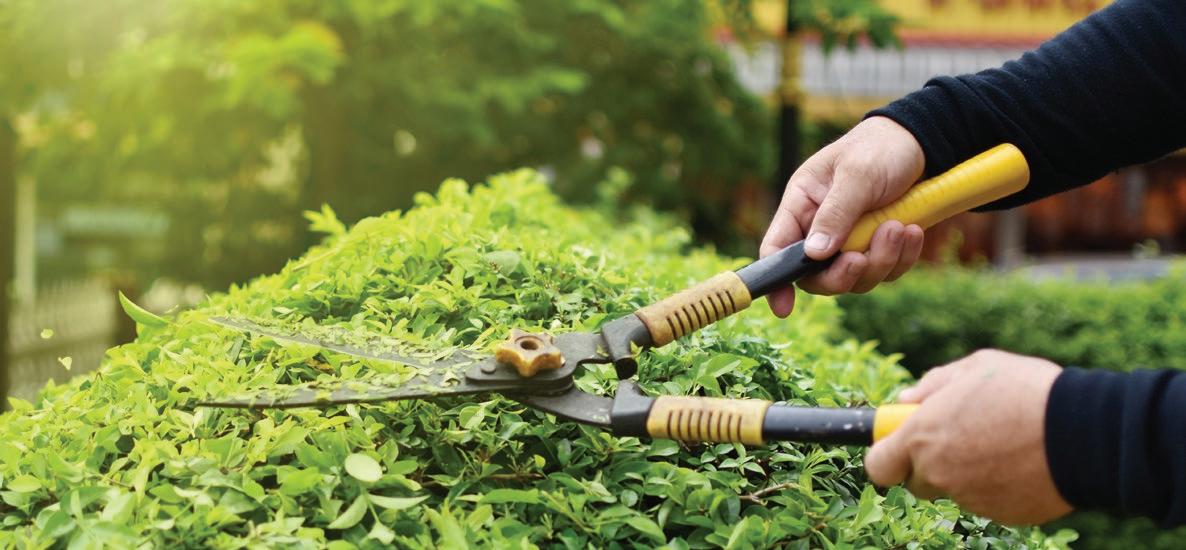
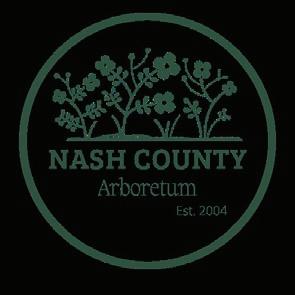
Take a stroll through to learn about our botanical collections while enjoying the fragrances and peacefulness of nature.

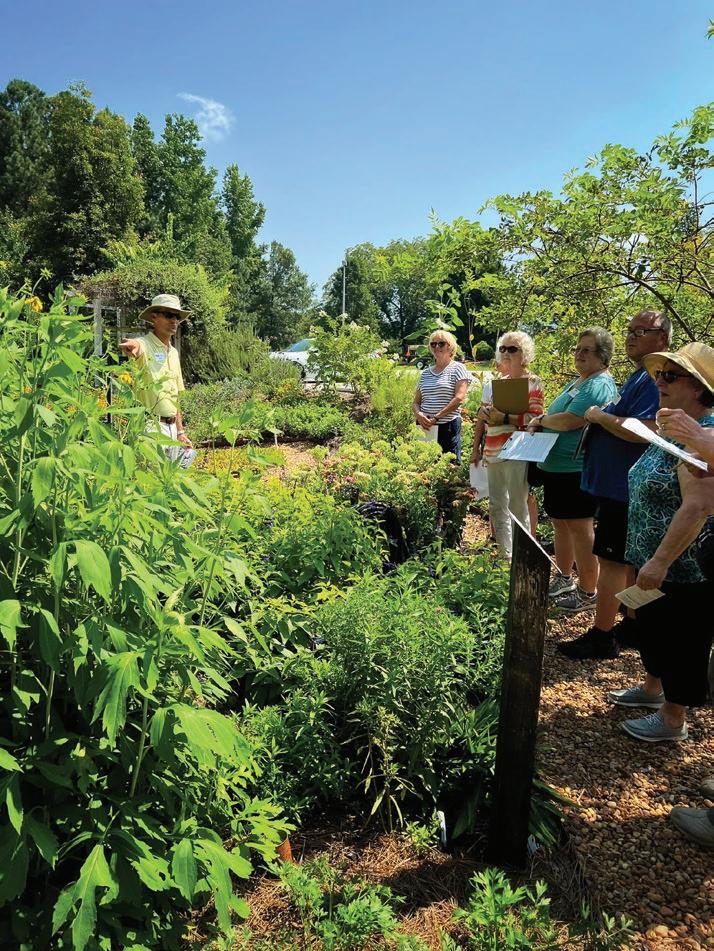
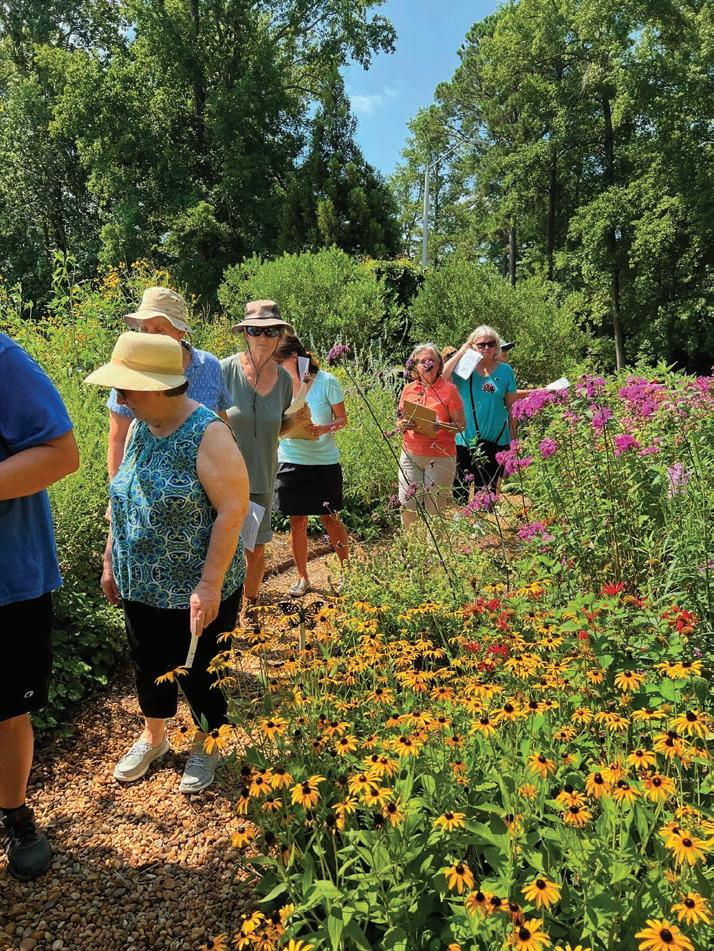
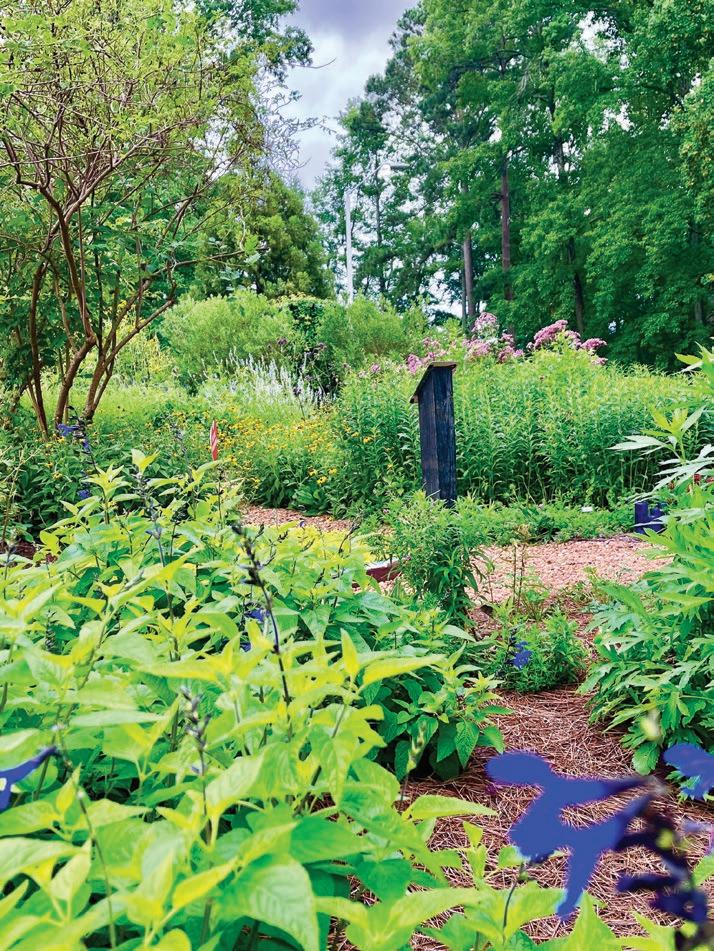


Call the guys who never take too much off the top

Michelle Walton Woody recommends Buzz Cutz.

“Extremely responsive, such a nice, honest, business. Highly recommend!”
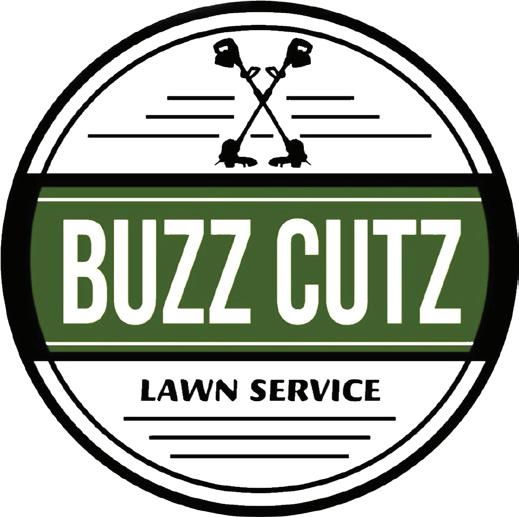

Adam Bennetts recommends Buzz Cutz


“They just got done mulching our flower beds and did an amazing job!Great people, great work, and great price! Highly recommend!”
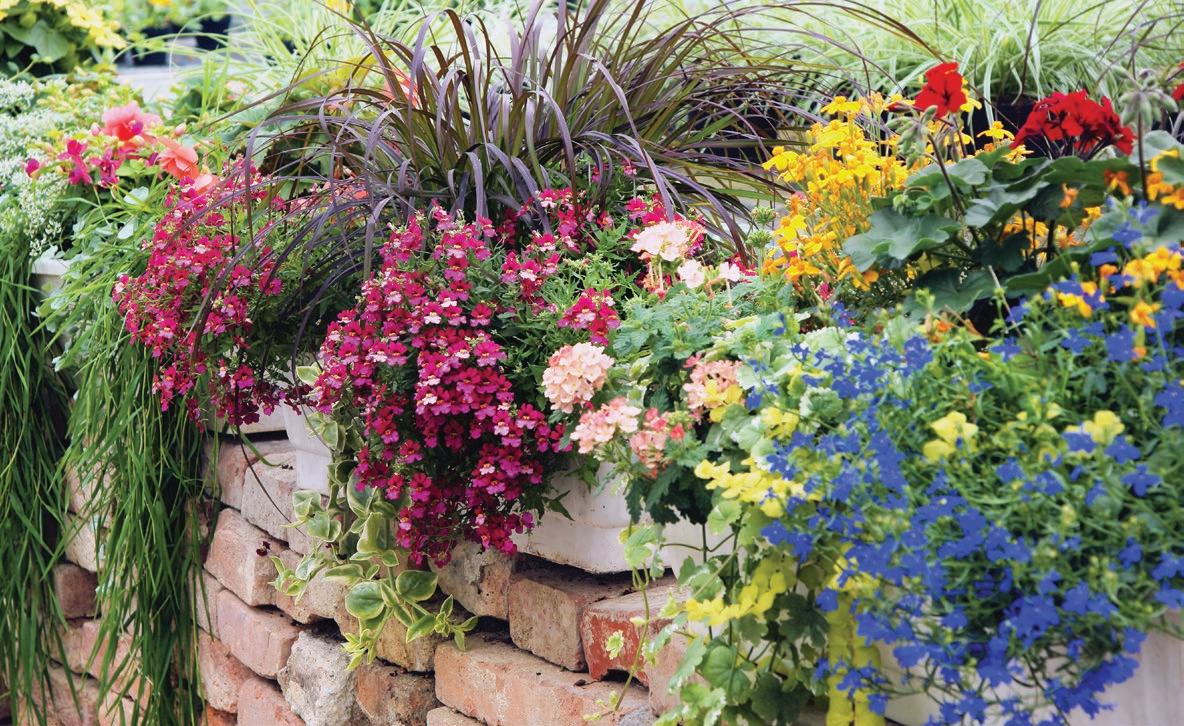
In my home garden, the Bee Better Naturally Teaching Garden, I have something in bloom yearround, always having interest and color.
The winter flowers may be miniature compared to summer's lustfulness, but with little to compete with, all flowers stand out. And I should note, I do it all without invasive plants such as forsythia and nandina! I do so by making wise choices so that all the seasons are covered.
Over the years, creating my garden, I would dedicate a year to building up seasonal interest. For example, a couple of years ago, I made an effort to purchase plants to add interest to our four seasons. I never felt I needed to have everything NOW.
Garden-making is a lifetime achievement, although a garden can also be managed with a season at a time. In my case, I add per season since a garden center tends to showcase what's in bloom.
When first planting perennials, they may look puny. Remember, give perennials a good three years to flourish. In the meantime, choose plant partners to carry the display through.
As you wait for perennials to fill in, bulbs and annuals can be the workhorses. As the perennials mature, annuals are optional, especially if you have a mix of perennials that bloom in succession, such as dianthus, brown-eyed Susans, coneflowers, and garden phlox.
Diversity is key. Include plants of different sizes and shapes that can be tucked in and around each other.
I have a 20-foot-long mixed border where I added three 'Florida Sunshine' anises spaced evenly apart, which became the bed's backbone or base plants. This bright yellow shines in the winter months.
These base plants are further added with layers. I usually cluster three or six plants around each base plant to create splashes of color and texture. Repeating groupings provide a sense of harmony in the landscape.
By spacing plants with different bloom times very closely together, I can camouflage the earlyflowering plants as they begin to die back with the new growth of the next round.
I like to plant in island beds surrounded by paths or lawns. These beds are much easier to maintain than deep borders, allowing me to appreciate my flowers from several vantage points within the garden. The beds are large enough to support a variety of plants but small enough so I can easily reach everything when it's time to weed or deadhead.
Rather than planting everything that blooms simultaneously nearby, distribute the groups of early-, mid-, and late-season bloomers around the garden. The result is flowers in all parts of the garden every month of the gardening season. They also draw the eye throughout the garden, creating the appearance of an uninterrupted expanse of color.
Now that you know what works in my garden, you can create your garden of continuous color.
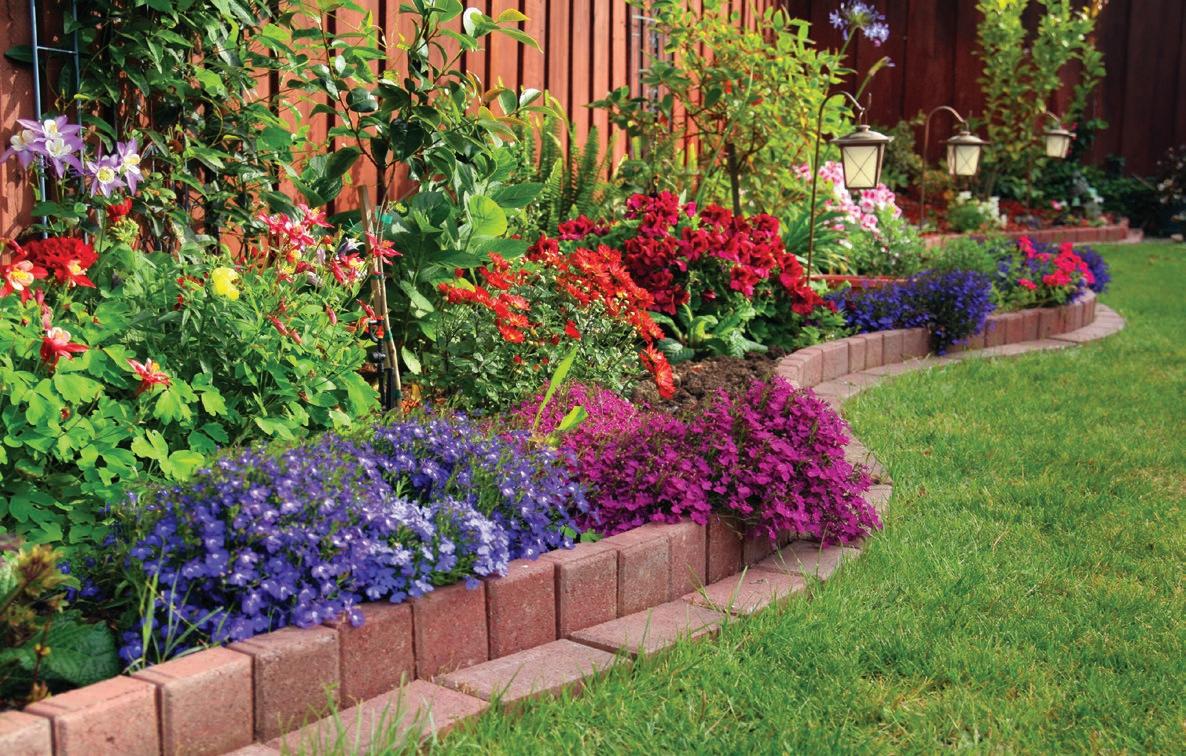
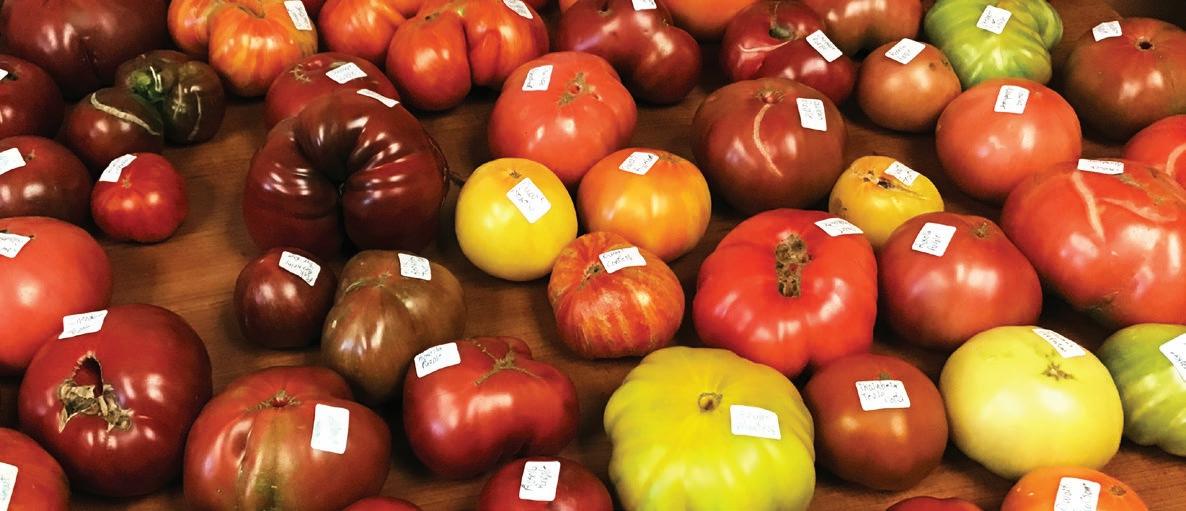
Having been certified ‘tomato crazy’ I’m always looking for the latest and greatest tomato. Of course, with tomatoes that could simply be an old heirloom variety from somewhere in the world that is new to you. Sometimes it might be a new hybrid or different type of tomato plant like dwarf or micro. Because I grow and sell tomato plants at the Raleigh Farmer’s Market, I try to anticipate customer demands by offering a huge selection of all types of tomato varieties. (Around 160 varieties this year)
Hybrid tomatoes are always changing. This year I will have Better Boy Plus, Big Beef Plus, Early Girl Plus, Lemon Boy Plus, and Celebrity Plus. Most of these names should be familiar but you are probably wondering what does the ‘plus’ change. The ‘plus’ means additional disease resistance and the breeders also claim better flavor. I had some of these last year but sold out without saving some to plant myself. I will have all of the above this year and will put them to the test. There is also a new hybrid variety called ‘Purple Boy’ which is suppose to be similar to ‘Cherokee Purple’ but with more disease resistance. I eagerly look forward to seeing if this is possible. ‘Primo Red’ and ‘Red Snapper’ have been two of the best red slicing hybrids that I’ve grown.
For those of you growing in containers, I hope you are familiar with the Dwarf Tomato Project varieties. There have been 100’s of varieties released and all are open pollinated. Most plants are 3-4 ½ tall at maturity and come in all sizes and colors with many providing heirloom quality flavor. I will have 30 different different dwarf varieties this Spring.
The newest craze in tomatoes is Micro Varieties. These are very small plants reaching from 8-18 inches tall at maturity. Many have a spreading growth habit and all of these Micro’s work great in small pots. This will be my first year growing them. All of the one’s that I have seen are small fruited ranging from marble size to ping pong ball size. I will have a couple of these for sale this year but will be growing about a dozen varieties this Summer. I couldn’t get many seed. If I like them, I’ll save lots of seed and will be able to offer them next year. The Micro varieties are probably the most realistic to grow indoors in a sunny window perhaps producing fruit even in Winter.
Keep listening to the ‘Weekend Gardener’ and I will give updates this Summer on how the micro varieties and others that I’m growing for the first time like ‘Purple Boy’ are performing. If you have questions or suggestions, you can contact me at: geraldandhenrysplants@gmail.com


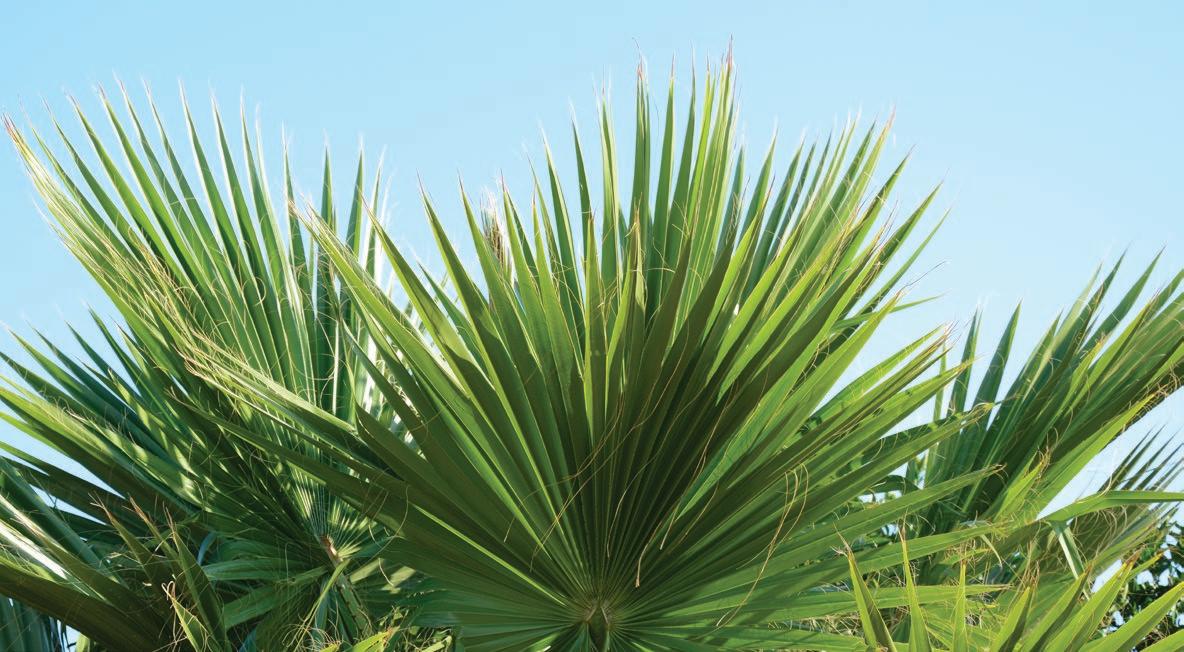
I was lucky enough to be born into a family that owned beach cottages. First at Carolina Beach, then Garden City. Then I married into a family that owned a cottage at Topsail Beach. We escape there whenever our schedules allow. One of the joys, for some, is to try and figure out what plants will survive in coastal landscapes in North Carolina.
When I was a child, more child-like than I am now, it was rare to see turf grass, ornamental shrubs and trees around beach cottages. Motels usually had a few palms scattered around along with a few flowers in containers, maybe some wiregrass and weeds. But over time that tradition has changed a great deal.
The first element to consider is the lawn grass. With the sandy soil and salt air, you are limited in your choices. I have found that Bermuda and Centipede are the predominant turf grasses with some Zoysia and St. Augustine thrown in on the southern and central coast. That’s true at Topsail Beach which, for the uninitiated, is about 40 miles north of Wilmington using Hwy 17 and Hwy 50. They are much closer if you have a boat. You will need full sun for at least 8 hours in order to have a healthy stand. On the coast, sod is your most reliable choice. Of course, this will be more expensive than seed. Bermuda could be seeded the easiest. But, one of the many problems with trying to grow healthy turf at the beach is the drainage versus water ratio. A good base of organic matter and topsoil would certainly go a long way in giving the grass a good start. If you are not a full-time resident, you will have to find someone to water your grass or install a sprinkler system. Erosion is always a challenge on the coast for the dunes and your cottage landscape needs some type of plant surface to hold the soil. Turf grass is certainly the most practical, but frankly grassy or broadleaf weeds will work too if it comes to that.
Ideally, you’ll need native plants which adapt to the sometimes-brutal conditions at the beaches of North Carolina more readily. Ecologist Dr. Doug Tallemy and many horticulture researchers at NC State University have studied native plants for many years. I would highly recommend that you purchase your plants from a source near your coastal property since they will sell plants already climatized to the area and can advise you on some of their favorites. There are many plants that are native to the United States and North Carolina that will survive and flourish in the sandy soils of the southeastern region.
I love palm trees and have had a Windmill Palm growing in my landscape for years. They are more cold hardy than the varieties that will survive at our beaches. The Sabel Palm reaches the most northern limits of its growing region in North Carolina. It makes a real statement in the beach landscape reaching 40 feet in height. It is salt resistant and deals with the wind pretty well. There are of course other palms of varying heights that can be found at nurseries on the coast. A favorite is the Dwarf Palmetto.
The Eastern red-cedar will work fairly well if you want a berry-bearing tree that will grow 40 feet or more. But I must say, these are not the top choice of most beach property owners these days, but they are native. The Wild Olive or devilwood is native to our maritime forests and can grow to 30 feet. They produce glossy leaves and fragrant flowers. This too will work well if you get tired of planting palms. Finally in the native tree realm is the Live Oak. This is a very large evergreen tree that has a unique trunk and canopy. However, this specimen is probably too large for the average beach lot.
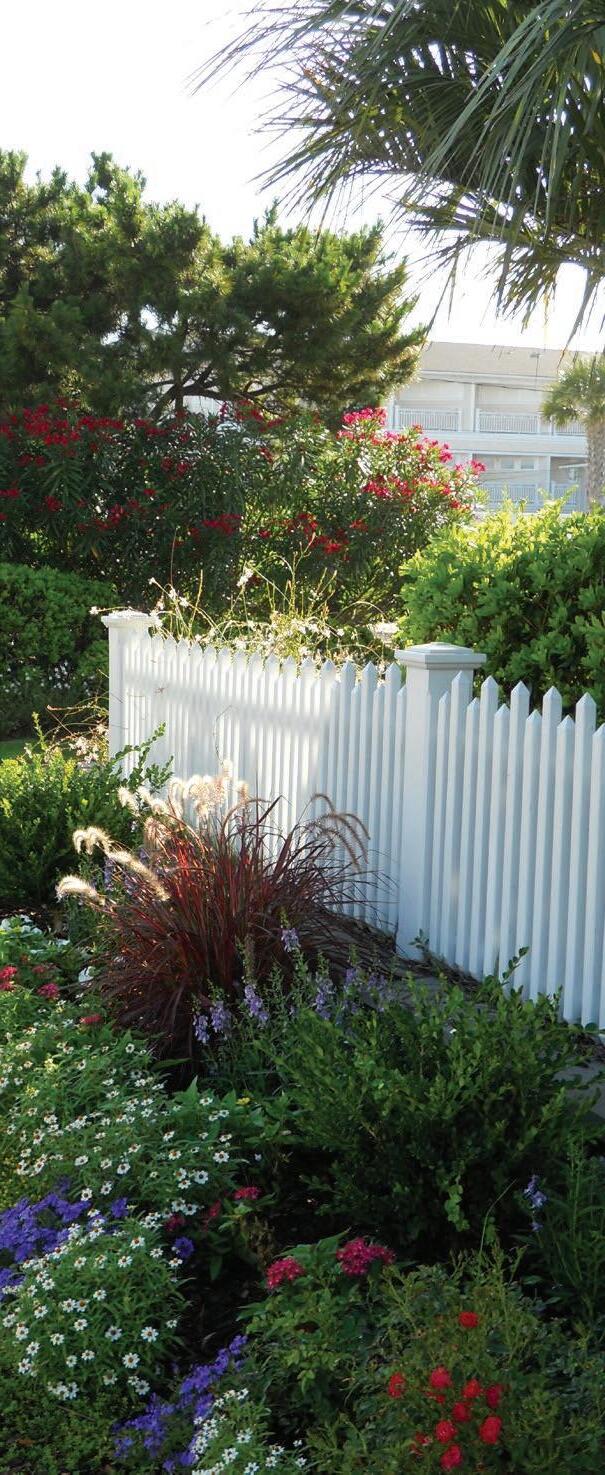
You are better served by limiting what shrubs, trees and flowers you plant in the beach landscape for the same reason I mentioned concerning turf grass: access to water. There are several varieties of Yaupon Hollies, i.e., those that are native to Yaupon Beach, on Oak Island and Ocracoke Island. There are also many named varieties from which to choose. One of my favorites and among the hardiest shrubs is the Wax-Myrtle. It will grow 8 to 10 feet and can be trained as a small tree. The small waxed-covered berries were used in Colonial Williamsburg to make candles. Birds love the berries and the shrub provides a place to hide. Beautyberry is a favorite in Triangle gardens and this native plant will work well at the beach. They look splendid in the summer and also attract birds. The Coastal Sweet-Pepperbush deals with the heat of summer and produces fragrant bottle-brush flowers. Hummingbirds and butterflies are attracted to this native plant.
A few native flowers for your coastal getaway could include Coral Bean, which is rather unusual according to horticulturalists. It shows off triangular leaves and clusters of scarlet flowers. It also produces legume type fruit. Sea Lavender is fairly well adapted to the coast. This salt marsh native produces light purple and magenta flowers. Beneficial insects seem to like the flower clusters. If your allergist ok’s it, you might be interested in adding some Seaside Goldenrod. It has bright yellow flowers and tall stalks (maybe 6 feet). This plant is easily propagated.
Everyone loves ornamental grasses. Purple Hairgrass is showy and produces a haze with its color in the fall. Switchgrass is also a fun plant. It is a perennial that can get 6 feet tall and 3 feet wide. It releases seeds in the fall that birds enjoy.
You might need a vine or two. If you have a good space, choose a native vine such as Yellow Jessamine, Coral Honeysuckle or Cross Vine.
There are many plants that have adapted to the coast of North Carolina that are not native. Some of the most popular at Topsail Beach include, Oleander, Crepe Myrtle, Japanese Black Pine, India Hawthorne, Pittosporum, and Podocarpus. Various palms such as Saw, Palmetto, Pindo and Needle can be used. I would recommend finding the safest location in the yard to plant considering the sharpness of the needles. Flowering plants like Azaleas, Lantana, Verbena, (I better throw in some Phlox), Butterfly bush, Yucca plants, Roses, Daylilies, Coneflowers, Iris, and a variety of bulbs are also good choices.
You may like to experiment a bit too. All of the great gardeners who have joined us on the WPTF Weekend Gardener have killed a few plants, not through neglect, but experimentation. Another bit of advice, don’t over do it unless you live at the beach year-round. Make your landscape low maintenance. That’s good advice for your inland home too. Above all, install plants that give you pleasure, plants that remind you of people you love or happy times. Gardening is supposed to be an escape, just like the beach!
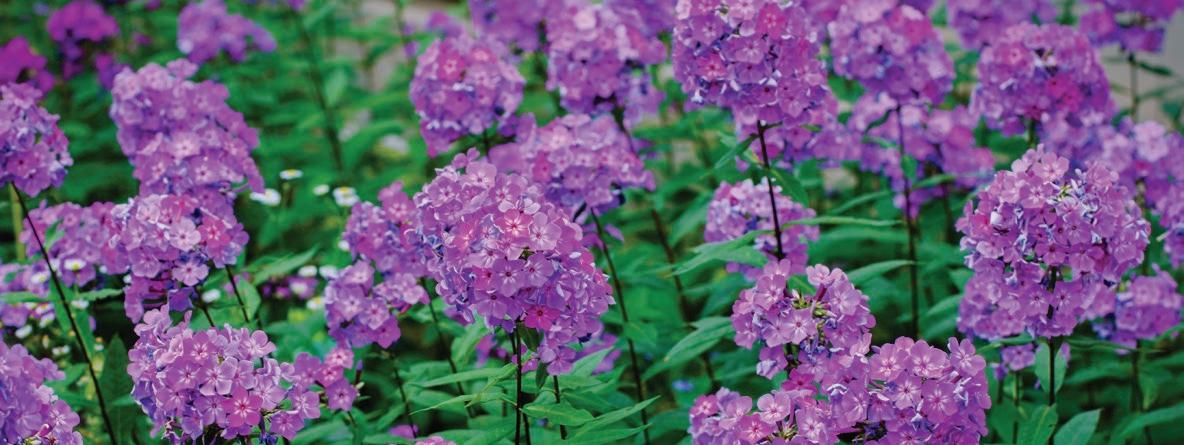
An Etsy marketplace and Pinterest catalog come to life in Cary! Painted Tree Boutiques is a retail shopping experience specializing in gifts, home decor, and boutique clothing while empowering thousands to live out their entrepreneurial dreams. Our story began in 2015. What started as a vintage market in Bryant, Arkansas has grown into a unique shopping and selling boutique experience with over 35 locations nationwide.
Painted Tree is a creative community of shops where hundreds of vendors sell unique and quality items to thousands of shoppers in high-end markets across the country. When you shop at Painted Tree, you don’t just shop to find what’s trendy, You shop to find what’s you. From a range of apparel styles to
Your purchase also supports small businesses. The Cary location features over 300 shop owners including artists, makers, and curators! You don’t just shop at Painted Tree, you experience it. You come back again and again for one-of-a-kind, delightful products that you know will inspire, transform, and make each visit better than the last.
Our shop owners love making gifts as much as you love giving them, so come see how Painted Tree can make every event memorable!
Have a unique idea to bring to life? Apply on our website for the chance to start your journey with Painted Tree!
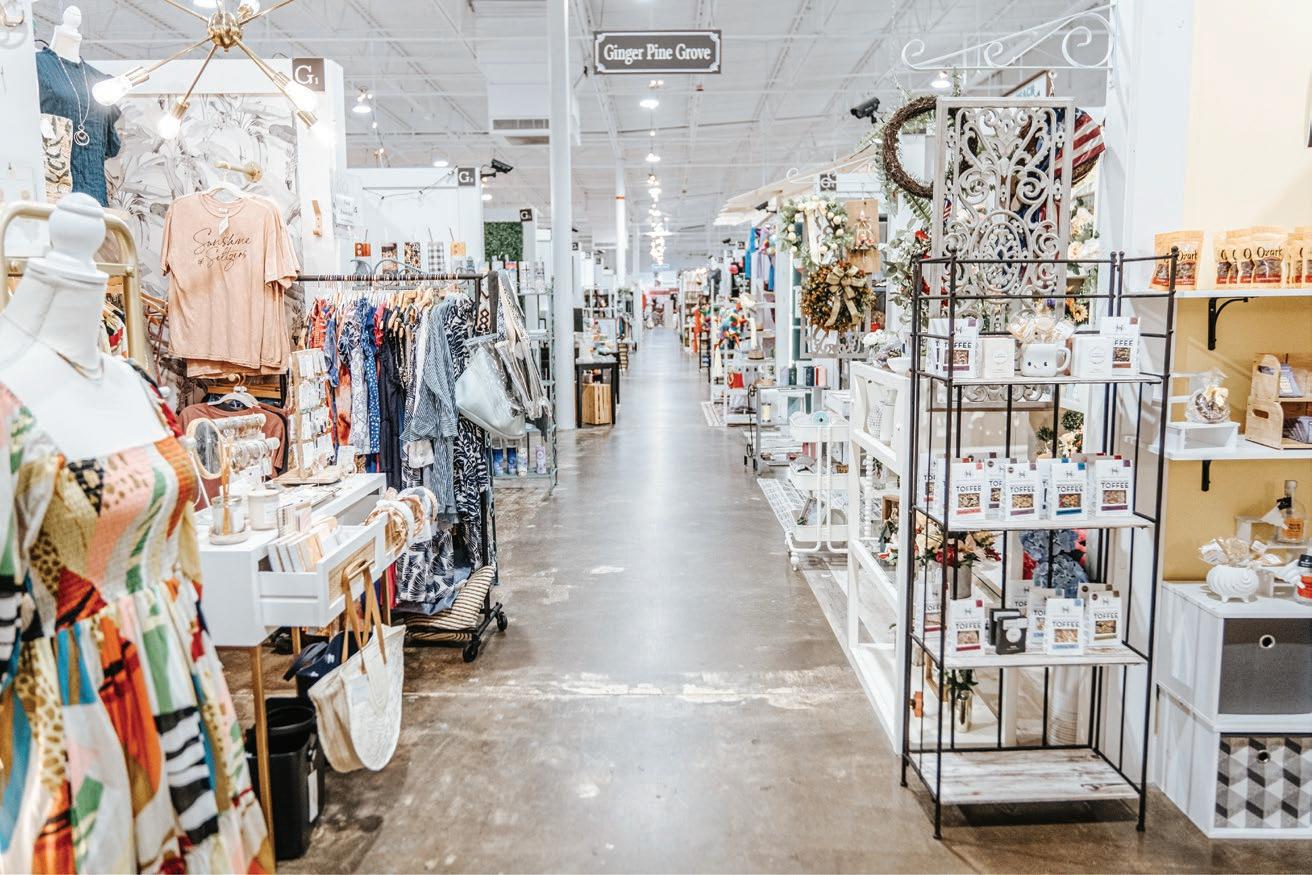



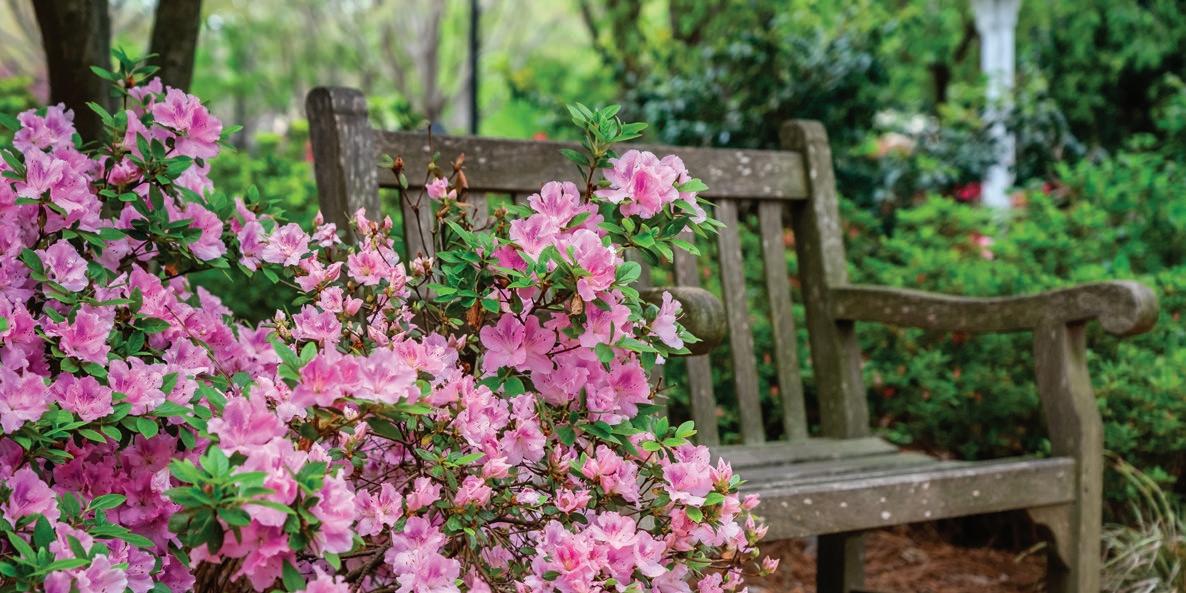
The farther that the days of my youth retreat in the rear-view mirror of my memory, the more I realize how vital gardening is to my happiness. At the same time, it is impossible to ignore my physical limitations as I approach my 83rd birthday. The scourge and ravages of old age tend to discourage people from doing the very things that they love to do the most—and this is just not right. Happiness and satisfaction with one’s life have again and again proven to play an important role in longevity. This is why I have adjusted my gardening habits to include handy, helpful tools. Happily, there are many devices and tools that can make gardening easier for those of us who have physical limitations.
For example, I find that when I get down on the ground, I need something to lean on to get back up. To remedy this problem, I ordered a neat little lightweight, super maneuverable gadget that has a rubber cushion for my knees and side handles that allow me to stand up with the greatest of ease. There are a variety of these handy little helpers available at both brick-and-mortar garden stores and online.
Another problem a lot of disabled and older gardeners have is managing combustion engine garden tools. I am sure many of you have experienced the difficulty of starting, for example, a chain saw via pulling the cord, especially when the saw is not used regularly. Starting these can be quite a chore and hard on the old ticker. Of course, there is a solution for this that Ben Frankin invented— electricity in the form of battery- operated tools! These tools are not only lightweight, they are easy to maintain—and best of all, they remove the chore of mixing oil and gas.
One of my favorite battery-operated tools is a miniature pruner which operates with a chain and a blade. It is very light but can cut limbs as large as three inches in diameter. It’s a cute little booger, too. In the infancy of battery pack tools there used to be a problem with weak power and short battery life. This is no longer true. I find that I can prune branches on my hand-held trimmer for up to an hour. Not only that but it’s a lot of fun! When you have large bushes and trees that tower over you beyond your arms’ length, you can get a batterypowered extension pruner. These are wonderful tools to make pruning easier.
I’m sure you all have your favorite gardening activities. I love to plant bulbs. If I could, I would plant thousands. As it is, I limit myself to several hundred a season—still no small planting task. As with most of us, and double for older folks, falls can be dangerous. Because of this I have stopped using a shovel to dig holes for the bulbs, because that requires me to place one foot on the shovel and possibly lose my balance. My solution is a pair of plain old post hole diggers. Using these, I can keep both feet on the ground. I also have a solution to the problem of bending down to plant the bulbs. It’s a reaching tool used by some to retrieve canned goods from their pantry or items from top closet shelves. But it is also the perfect tool to plant bulbs without taxing your knees. You just have to first arrange the bulbs so that the roots are on the bottom when you place them in the tool.
For weeding there is another fine tool that lets me stand while I give those pesky weeds a good haircut, or an easy pluck right out of the garden. It is a long pole with a grasping and cutting mechanism on the end. No bending! If you don’t want to go the batterypowered way, you can get a pair of hand-held ratchet pruners. These remove the difficulty of having to cut a limb or branch all in one squeeze, which can be really hard on the hands. Instead, you can do it a little at a time. Of course, you will want to prune branches as close to the trunk as possible both for the health of the tree and for esthetic purposes. Another tool that I recommend is a battery-powered hedge trimmer. A four cycle gas powered hedge trimmer is both hard to start and heavy. My electric trimmer is lightweight and is ready for me whenever I want to pull the trigger.
Of course, container gardening solves a lot of these same problems. Just make sure your containers are tall enough that you don’t have to bend. I grow most of my vegetables in containers now and the results are nice juicy tomatoes and a host of beautiful, healthful leafy greens. Gardening is good medicine. Why not make it easier and have fun at the same time. There is just no good reason why people of advanced age or with other disabilities cannot continue to do the gardening that brings them joy.
Speaking of which, it is also a joy to teach young people about gardening. You might be surprised at how many kids would love to work alongside you in your garden and learn about the magic of planting and harvesting. You surely don’t need to be elderly to do this. In fact, I would suggest that a gardener of any age or level of ability take under their wing some young people and teach them the joy of producing bountiful harvests and beautiful blooms. There is nothing like having a child place daffodil bulbs in the ground, then seeing the joy and serenity on their faces when the flowers emerge.
Teach a young person the fundamentals of gardening and you’ve not only acquired a helper, you’ve created a relationship that can last a lifetime. Best of all, you will have lessened the need for so many gardening tools. Just joking, but seriously, young people can be a great help to the older gardener. There are two young men who began helping me in my younger days and now they often tell me how much they enjoy gardening and give me the credit for instilling in them the love of holding soil in their hands and then seeing what comes burgeoning out of the sweet, rich earth.
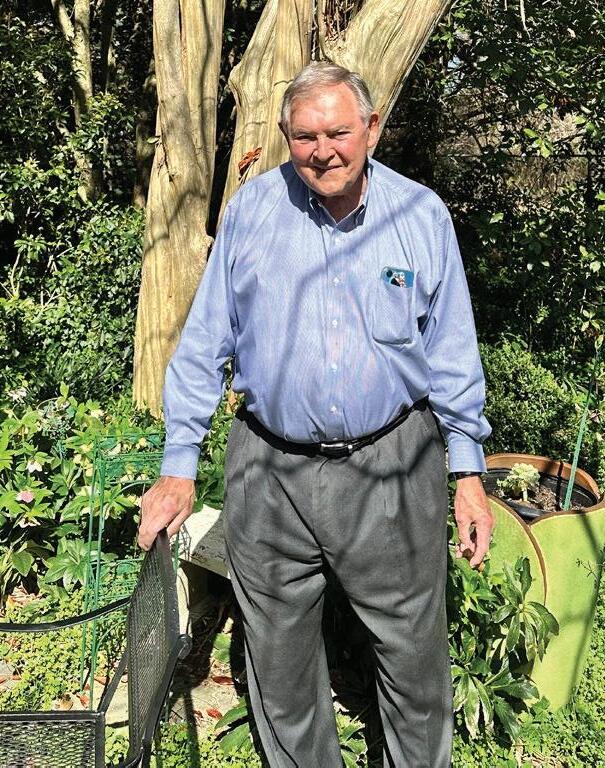

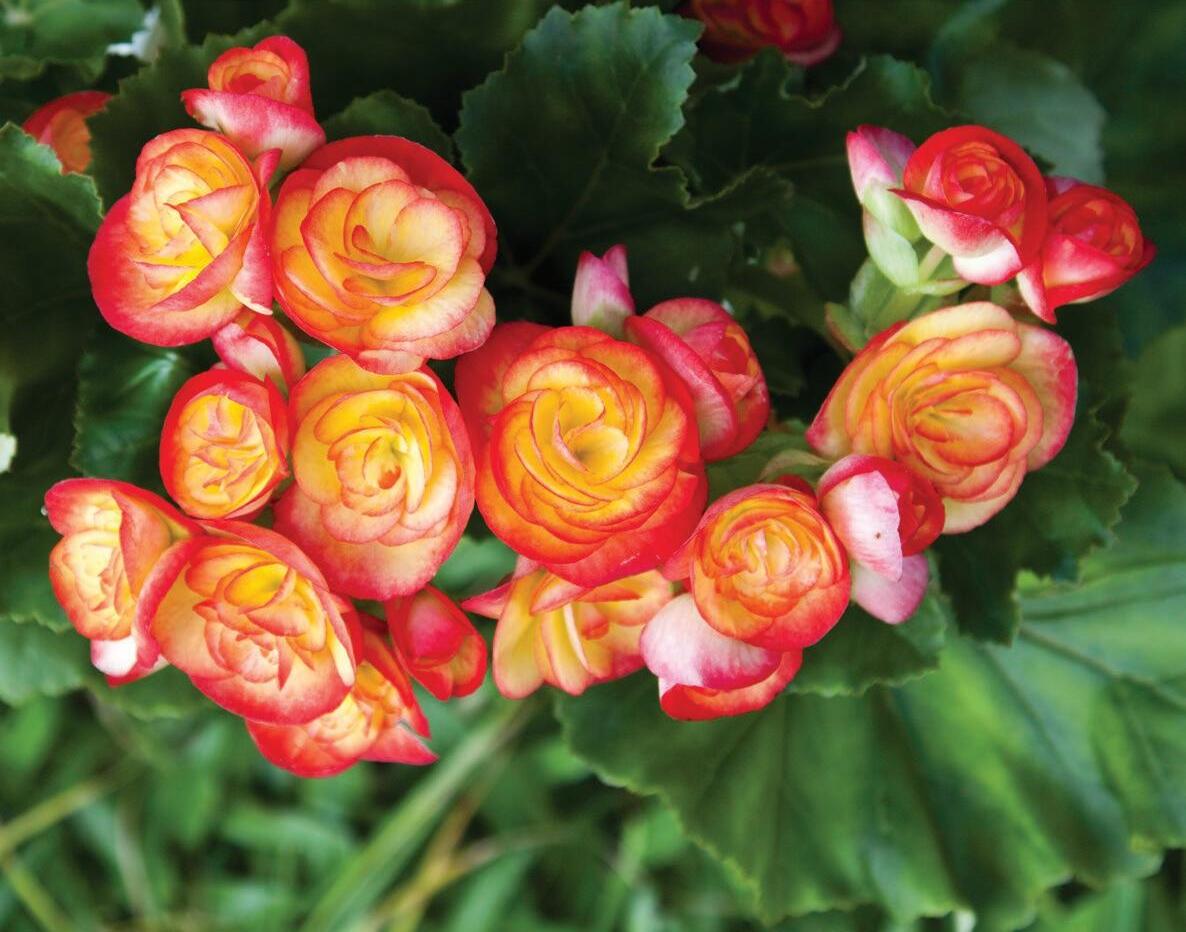
It has come to that stage of life when removing some of the clutter collected in our house of 50 years is being given away or put in the recycling bin. Several years ago, at a Weekend Gardener remote one of our listeners brought me a hand-written recipe for fire ant control; I “filed it in one of my gardening books. The directions were to combine 5 pounds of white corn meal, 3 cups of sugar, 1 package of cherry Jello and 3 tablespoons of acephate in a glass or plastic container that could be sealed. The instructions for using it were to sprinkle that “concoction” in a ring around the fire ant bed. We never had a problem with fire ants on our property but lots of gardeners call Weekend Gardener for the recipe.
The “gardening book” was my copy of “Raleigh Gardener’s Sampler” compiled and published by the Wake County Medical Society in 1977. It might be time to start working on the second edition. One of the contributors to the first book was a junior in horticultural science at NCSU, Tony Avent, who told us about begonias and peperomias. Begonias are often grown as houseplants. The roots are quite fine so taking care watering them. The plants should not stand in water and the soil should be allowed to dry between waterings. Tony’s father, Garland Avent, contributed a two-page article on iris. His advice to plant both deep red and brown toned cultivars in an area with afternoon shade has been passed along on this Saturday morning program for many years.
Dr. Bob Harper, a Raleigh psychiatrist, contributed six pages of information on growing azaleas and camellias. His advice to plant azaleas in beds, not individual holes, is as sound today as it was 42 years ago. You are able to amend the soil with organic material to improve drainage and retain the moisture needed for the fine root system of the plants. It also helps to have the level of the beds above the level of the surrounding ground. With some of the rodent problems we have in our area, many of us are also adding products like PermaTill to deter mice, moles and voles. Organic matter such as pine straw, composted wood chips or the bark from the base of a tree to help control the moisture and insect problems
I’m glad I hadn’t read his article before I planted the camellias in our yard. He digs a hole 3 to 4 feet wide and twice the depth of the root ball. The center of the hole is about 2 inches less than the depth of the root ball and is dug to effectively leave a moat around a center pedestal. That raises the root ball just above the adjacent soil and allows roots to grow down below the depth of the root ball. In clay soils that might provide better drainage and plant stability as the plant grows tall. The fill dirt is a mixture of half composted mulch and half native soil dug from the hole. Since my camellias are planted on the side of a hill, I haven’t been too worried about drainage but I amend the native fill-dirt with composted manure like Black Kow and cottonseed meal for plant nutrient. Voles seem to be quite fond of camellia roots so products like Vole Bloc and PermaTill deter their snacking. One of our listeners suggested I try planting camellias in wire baskets, leave the tip of the wire cage just above ground and use pebbles or sea shells as a one-inch-deep mulch around the plants. It seems to have worked. Several plants have prospered for over 20 years.
Providing gardening information during the WPTF Weekend Gardener has worked well for people on both sides of the telephone and airwaves for decades. There were lots of days that I thought I had learned more about gardening from our listeners than they have learned from Mike, our guests or me. Your friendships on the phone, at remote broadcasts, or a chance meeting meant the world to me. As the late John Harris-The Tar Heel Gardener used to say...” Keep ‘em Growing”.
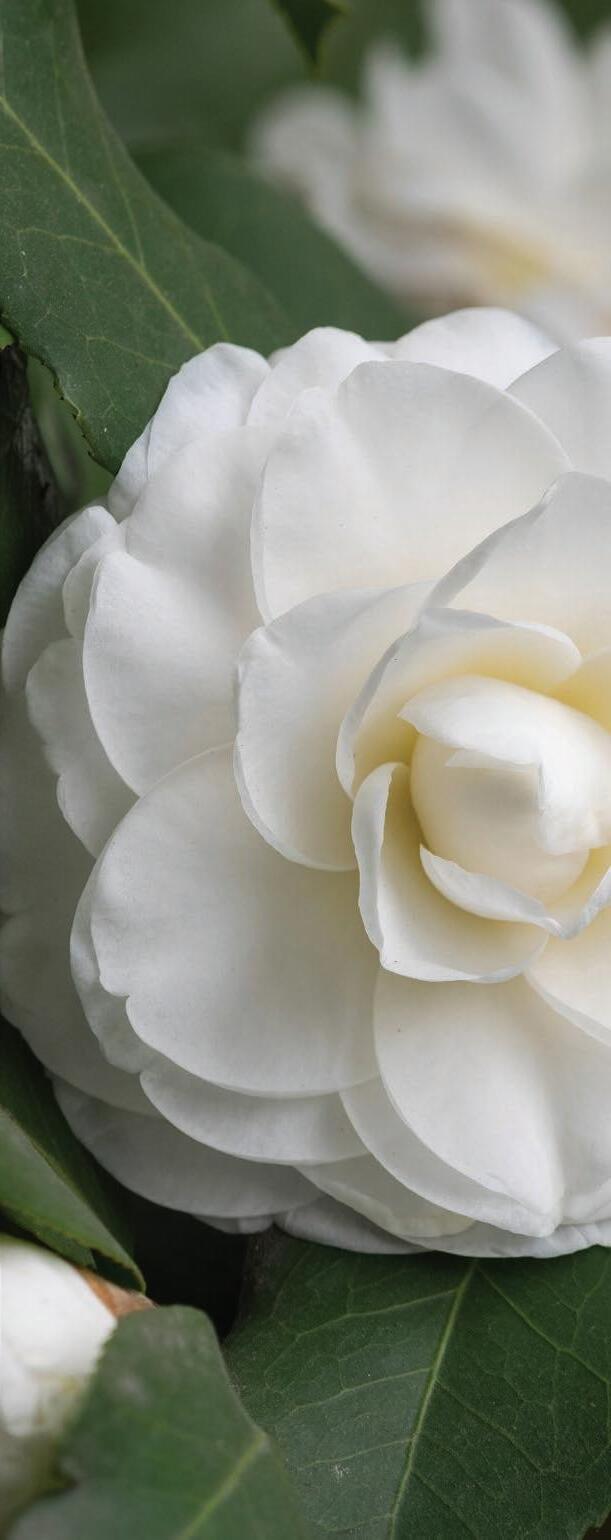
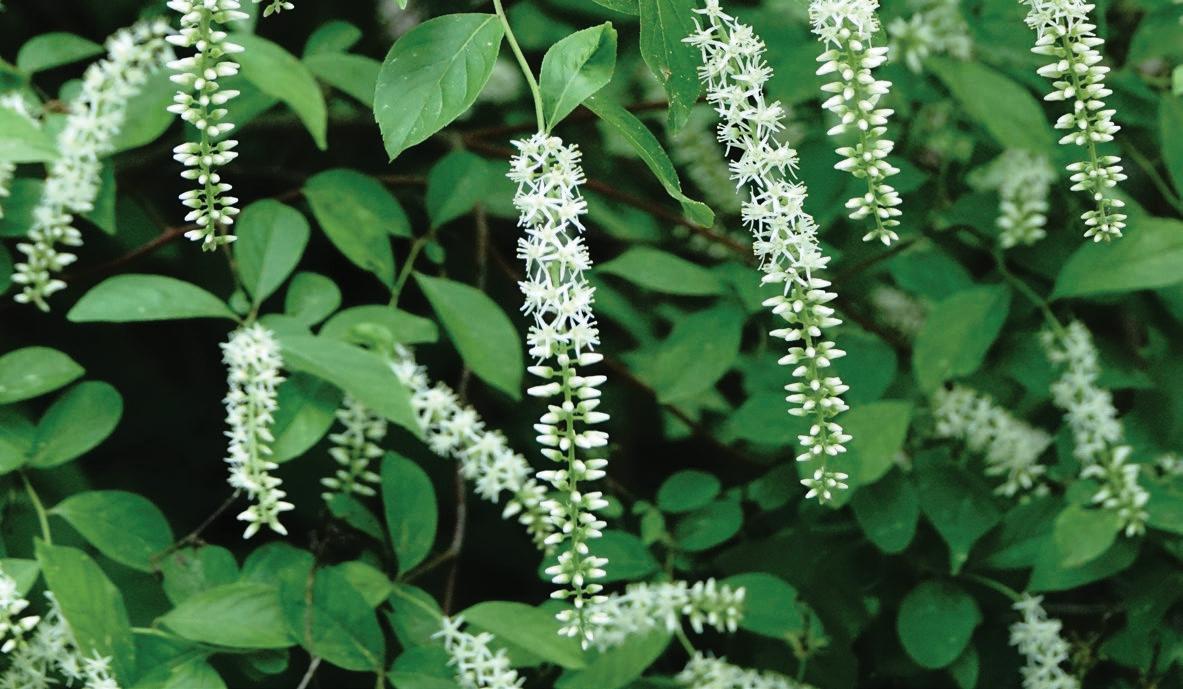
If you’re looking to add some new shrubs to your landscape this spring (and I hope you are!) here are some tips for finding great performing plants that need minimal care.
It’s important to acknowledge that fall is actually the preferred time for planting shrubs, but it’s awfully hard to resist that spring planting bug. Just be prepared to be diligent in checking soil moisture levels every few days through this first summer.
An important starting point, and one that is all too often overlooked, is to carefully consider how much space is available. In general I believe that people are terrifically inaccurate in estimating distances, so I strongly recommend using a tape measure to verify planting space. This includes accounting for the spread of the plant as well as the height.
Sun exposure will also come into play, but that’s easy enough to judge. If a plant is rated for “full sun”, look for a spot with at least six hours of strong light each day.
Armed with those two key pieces of information, it’s time to start narrowing down the options. At this point you can begin to consider which ornamental qualities are important. Does it need to be evergreen? Are you looking for a certain shape? Will it be a background plant or does it need to have some standout qualities? Are you looking for something that will pop during a particular season? Regardless of your needs and desires, there will be numerous options. If the plant that comes to mind is the same one that everyone in your neighborhood has planted, then I encourage you to look a little deeper.
At this point, a visit to the NC State Extension Plant Toolbox will be invaluable (http://plants.ces.ncsu. edu). This comprehensive on-line database includes over 4,000 plants that can be planted in North Carolina, searchable by name or characteristic. A wide variety of filters will help you narrow down the options by variables such as size, flower color, landscape theme, overall shape, and many other factors.
As you narrow down the options, either through the plant toolbox, a chat with your friendly local Extension Agent, or a visit to your hometown nursery, there are a few criteria that I urge you to at least consider.
First is to consider selecting a plant that is native to North Carolina. There are numerous excellent possibilities, including beautyberry, winterberry holly, Virginia sweetspire, or a native viburnum to name just a few. I think it’s misleading to suggest that native plants perform better, but I can tell you for certain that they are important for supporting native birds, pollinators and other beneficial insects.
Next is to be certain not to choose something that invites trouble. Some species are just more prone to insect and disease pests. Save yourself the hassle by selecting something more durable.
Finally, when it comes to shrubbery, the flowering options are vastly underutilized. Too often we think of shrubbery as a subdued backdrop. In fact, there are numerous shrubs with showy flowers that can provide bright splashes of color to our landscapes. In general, their cheery blossoms come with much less maintenance than those annual color beds.
Choosing the right shrubs and installing them correctly can provide many years of enjoyment to your landscape. Take the time to make a good choice.
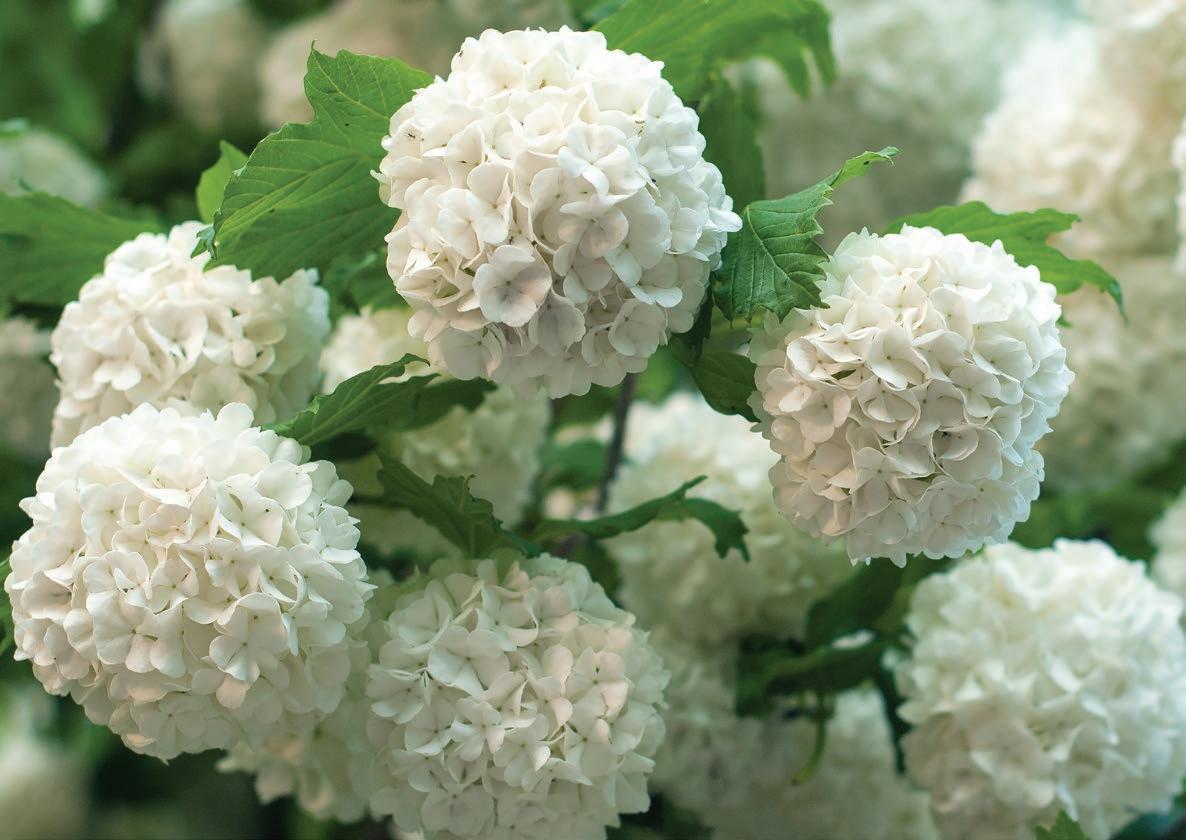


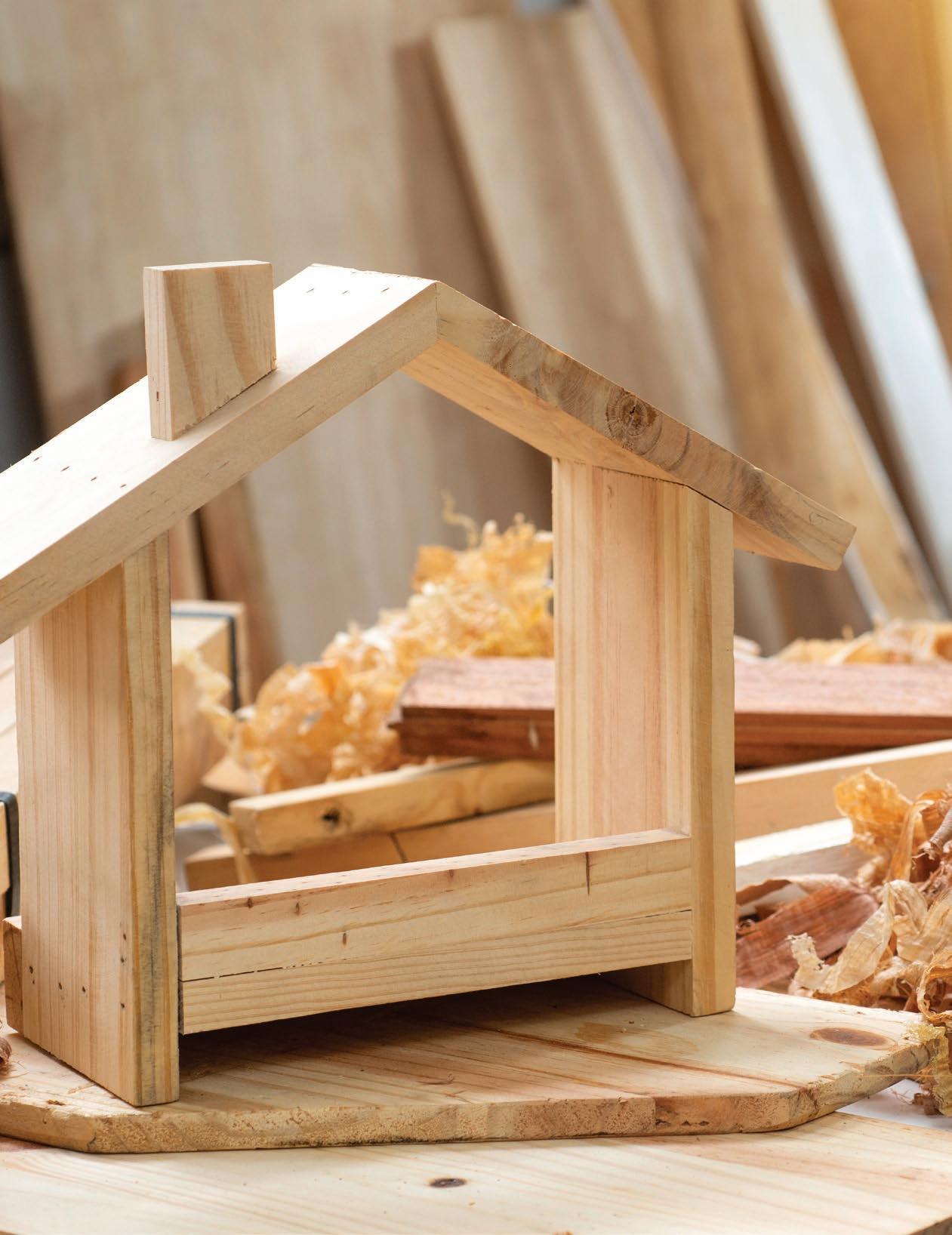
Once the ground has thawed and the trees begin to bud, it’s time to prepare your home for spring. On top of your regular spring cleaning, you’ll also want to consider these general upkeep tips. Use our spring home maintenance checklist to make sure everything in your home, from the basement to the roof, is in tip-top shape:
• Clean faucet aerators and showerheads to remove mineral deposits. Repeat in the fall
• Inspect roofing for missing, loose, or damaged shingles and leaks
• Change the air-conditioner filter
• Clean window and door screens.
• Polish wood furniture and dust lig ht fixtures
• Refinish the deck
• Power-wash windows and siding
• Remove leaves and debris from gutters and downspouts
• Replace the batteries in smoke and carbon monoxide detectors
• Have a professional inspect and pump the septic tank
• Inspect sink, shower, and bath caulking for deterioration
• Vacuum lint from the dryer vent
• Inspect the chimney for damage
• Repair or replace caulking and weather stripping around windows, doors, and mechanicals
*Sourced from BHG.com

• Remove the insulation from outdoor faucets and check sprinkler heads.
• Have air-conditioning system serviced.
• Drain or flush the water heater.
• Fertilize your lawn.
• Prune trees and shrubs.
https://www.bhg.com/home-improvement/advice/home-maintenance-checklist




NEVER STAIN YOUR DECK AGAIN!


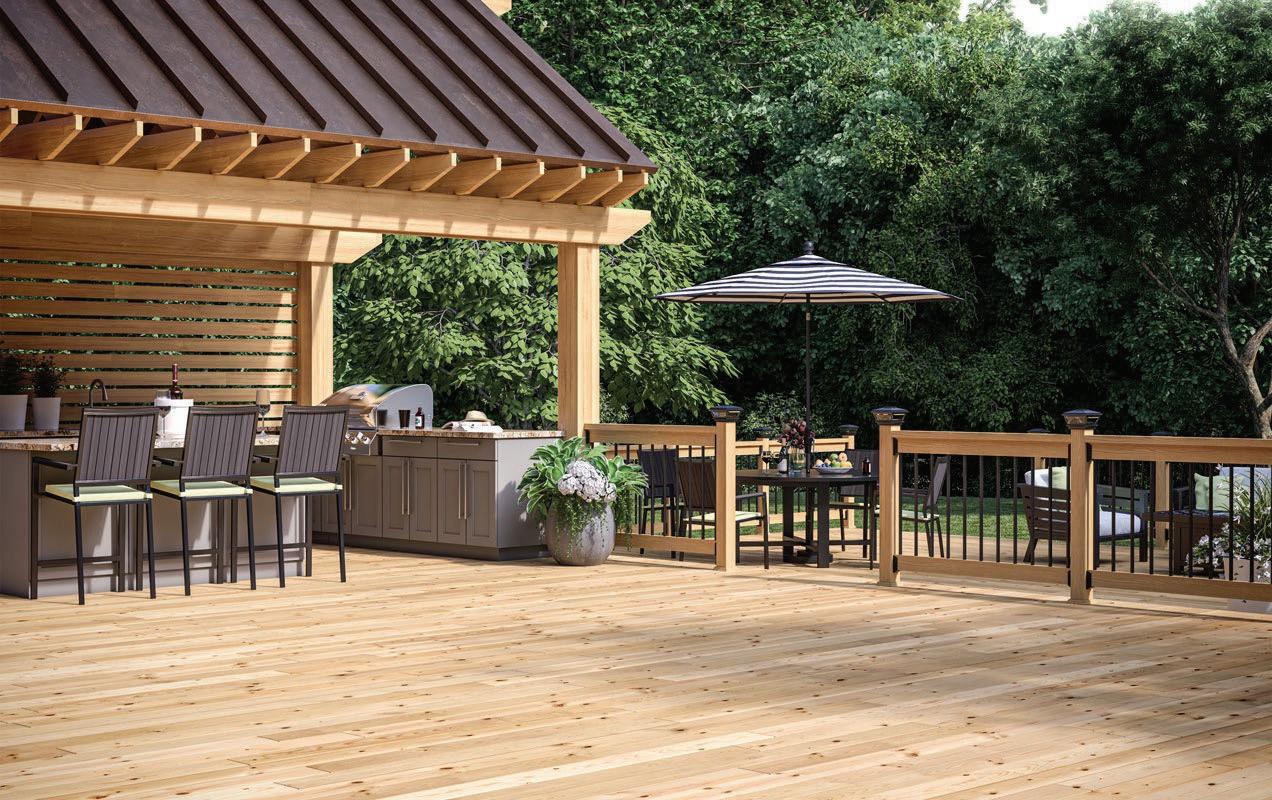

OUR PENETRATING SEALANT COMPLETELY ELIMINATES THE EFFORT & EXPENSE OF FREQUENT TOPCOATS








• 4.7 STAR GOOGLE RATING
• LOCALLY OWNED & OPERATED
• 100% EMPLOYEE INSTALLERS





SPRING SPECIAL SAVE 35% + 12 MONTHS NO INTEREST FINANCING AVAILABLE FOR QUALIFIED CUSTOMERS


• SAFE & NON-TOXIC PRODUCTS



SCAN TO BOOK A QUOTE ONLINE

• SEALS FROM THE INSIDE-OUT
• NOT SLIPPERY WHEN WET
• 25 YEAR WARRANTY






919 910 6301 DURASEALIT.COM

DECKS DOCKS CABINS FENCES PAVERS CONCRETE

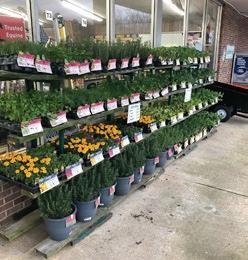
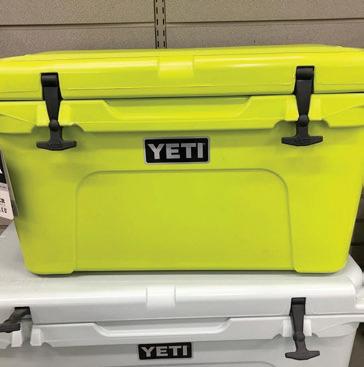
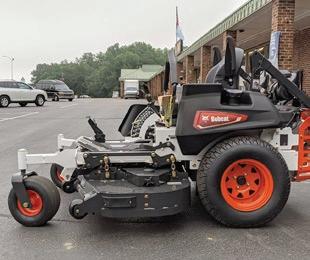
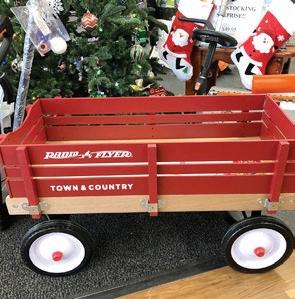
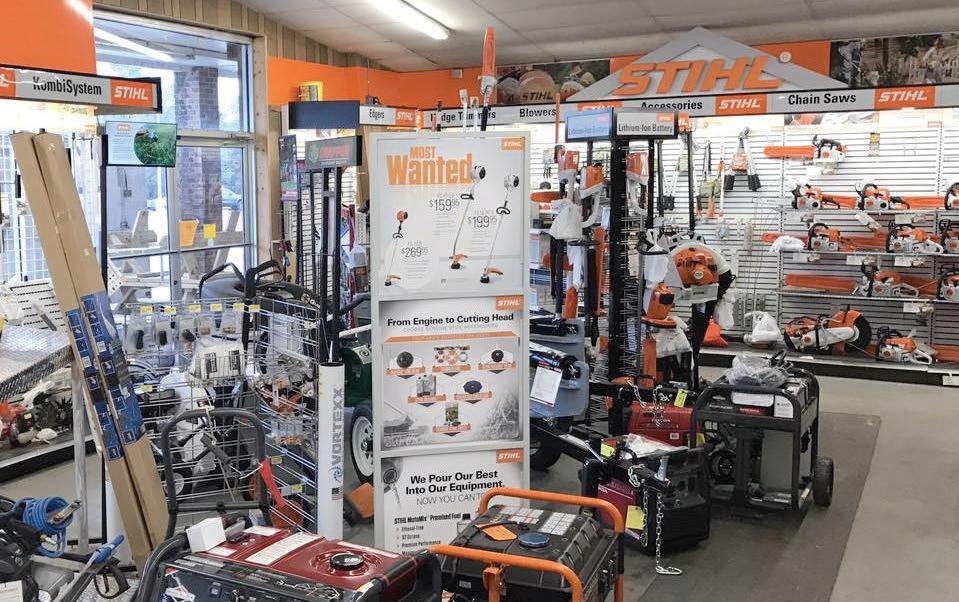
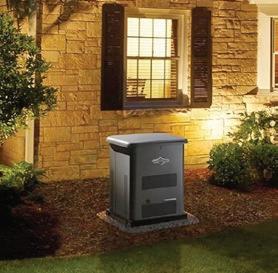
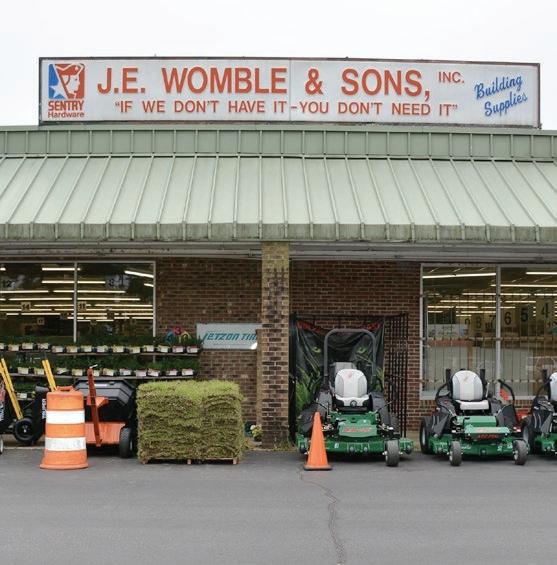



Roofwerks President and co-owner, Derwin Maness and Making Your Home Great contributor and Executive Vice President at Roofwerks, Holly Bowers talk about their company and answer frequent concerns homeowners have about their roofs.
Derwin what was your motivation for starting a roofing company?
Derwin: Will Hayes and I are owners of Roofwerks here in Raleigh and our vision was to bring excellent customer service to residential and commercial clients. I think our vision and reasoning was the fact that we saw the need. Many years ago working for another roofing company, we saw the need initially in the residential market to have professional roofing. It was more of a tailgate or trunk-slamming type roofer that didn’t educate and didn’t inform customers that they had a lot of options. We’ve added more value to the homeowner and we’ve taken that from residential to commercial and multi-family facets of our company.
Derwin: I think we’ve transitioned in the marketplace because of economic situations and inflation. For a while we were dealing with a lot of homeowners who probably were changing roofs that were in great shape but just wanted something different. Now I think people are moving back to and saying I want something that’s going to last me, so I want quality and I want security because I’m probably going to be in my home longer. It all comes down to how the roof is installed and the products you’re using. So, either way, even those people that were switching out their roof just because they didn’t like the color or they wanted a different style, it still mattered what was put on. On Making Your Home Great we talk about the technical part of it, that’s the meat of the roof. That’s really the flashing and the underlayment and how that roof was put on and if it was put on correctly that determines the roof is going to last a good while.
If you’re using a manufacturer that’s going to be around and has a great warranty to back-up your warranty, you’ve got a good roof.
Not all roofing companies provide repairs, but it seems that’s an important part of what you do.
Derwin: That’s correct. Even in our infancy 18 years ago we did repairs. We’ve grown that obviously to large scale now. We have a two-man crew that goes out doing repairs from the smallest repair to the very largest repair for residential and commercial clients. So, repairs build that professional relationship. We know all the time what’s going on with a roof. It could be a leak in a valley, a leak in a plumbing boot, a leak in a bathroom or chimney. Those are the details when you are replacing a roof that they’ve had a problem there for a while. A lot of our guys learn on the repair end and bring that to the re-roof. Holly, you talk a lot on the show how important roof inspection is for spotting issues early.
Holly: I think most of the time people don’t really what is needed for maintenance of a roof long-term. If you don’t know, that’s why those inspections are so important and because you need to get someone out there to make sure your roof will last twenty years or more.
Derwin, one of the things that differentiates you from other companies is that you have a showroom why is that important?
We have a showroom because mainly it was a dream of mine, of Holly’s and Will’s to offer the customer a place to come and view pretty much any kind of a product we can install. We want the customer to walk in and see something that might catch their eye and say I can have that on my roof. It opens their eyes that it’s not just one type of roofing only. Most people, unfortunately in our industry, only talk about shingles and they only talk about one type of shingle.
I know you believe that a roof can really add to the curb appeal of a home and the showroom displays this.
Holly: Oh yes. There are certain products that will actually increase the value of your home and that is why you need to be educated buying a slate roof for example, what’s that going to do for the value of your home versus putting a shingle on. There’s so many pros and cons to all of these systems and you need to know about them all to make a good decision.
Roofwerks’ showroom is located at 5413 Hillsboroug h St. about a quarter mile west of the State Fairgrounds in Raleigh. You can reach them at (919) 852-2660 and on-line at www.roofwerks.com
Listen for Roofwerks on WPTF’s Making Your Home Great Saturdays from noon to 2 pm.




Roofwerks is North Carolina’s premier roofing contractor, providing a full range of quality roofing services for homeowners, businesses and multi-family communities. No matter the size of the job, we deliver quality workmanship, exceptional customer service, and lasting value.

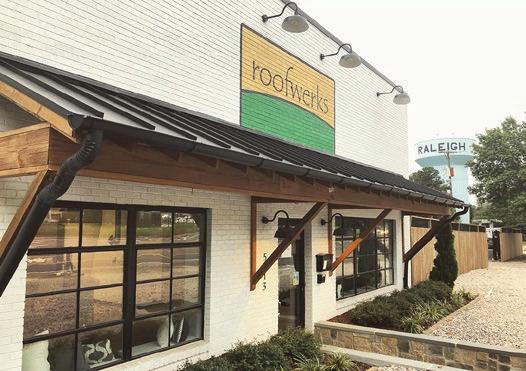

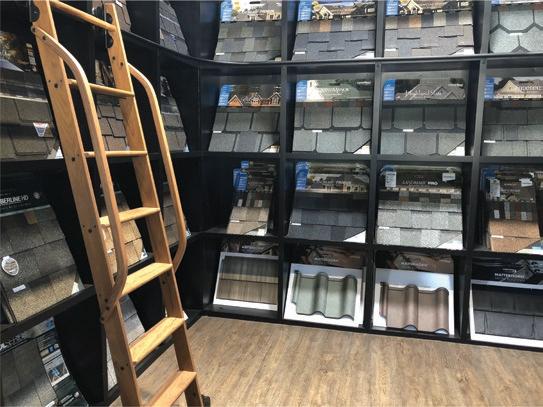




For a century, WPTF has partnered with businesses from here, there, and everywhere, all in the name of helping them grow. In essence, WPTF has been helping people who work for those businesses put food on their tables and provide for their families. Many around the area know the backstory for what WPTF stands for: We Protect the Family, and for a time-period of 10 decades or 17 Presidents of the United States, this station has helped small businesses like NC Shed Builders in Durham, NC not only survive, but thrive.
The owner, Allen Rynish, who hails from a family of dairy farmers in Seymour, Wisconsin, started NC Shed Builders in 2015, and has seen his fair share of successes in such a short time. What makes his story so interesting is his journey to get to the Tar Heel state and how his upbringing molded him into what makes him successful today. His hometown, just under 20 miles west of Green Bay was made famous by “Hamburger” Charlie Nagreen, who served the world’s first hamburger at the Seymour Fair of 1885. Seymour is also where the Hamburger Hall of Fame is located. But it was on his 80-acre farm where Rynish truly learned his way. “Country living is the best way to put it,” said Allen. “I had my hands in the dirt for as long as I can remember. My dad had a small apple orchard of 80 trees and one of my first memories was him planting all those trees and it’s still there to this day. Being a farmer, you knew a little bit about everything, whether it was carpentry, metal, and how to take care of animals. When I got into building sheds, I knew just a little bit. You want to make something square, and level and you go from there.”
After graduating with a degree in Business Management from the University of Wisconsin-Eau Claire, Rynish found his way to the Triangle in October of 2003, for no other reason than his buddy told him about how great it was.
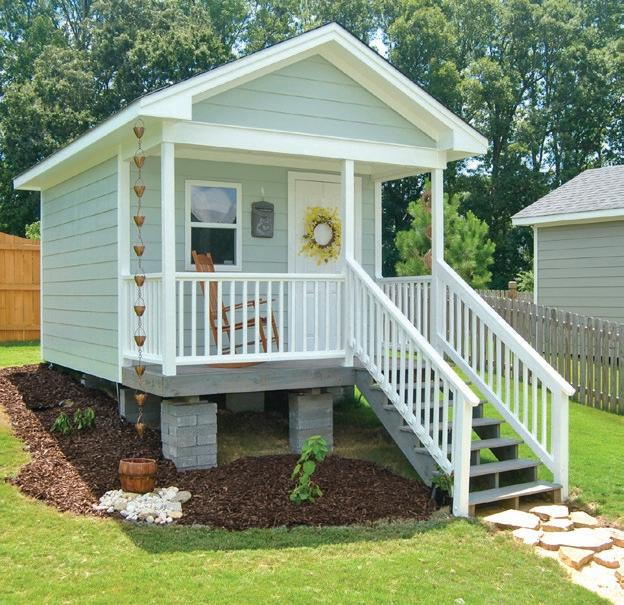
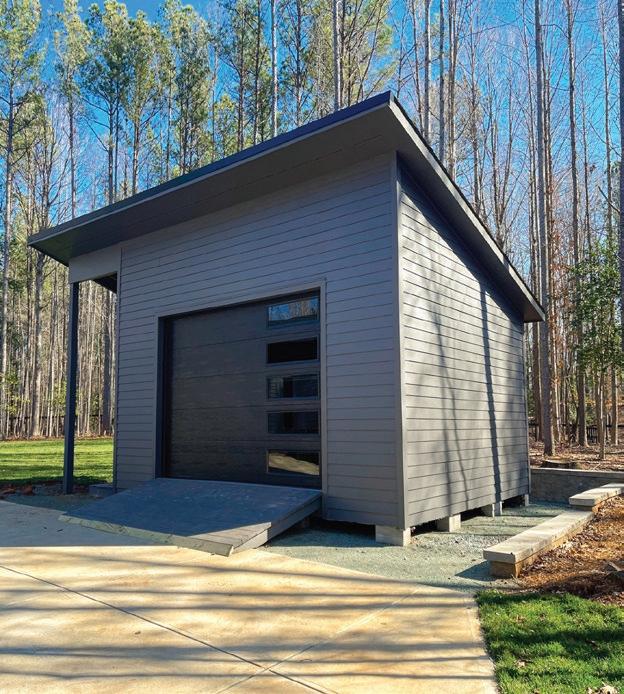
All it took was a light bulb moment while working at Lowe’s Home Improvement building storage sheds for him to see a path.
“I’ve always liked solving puzzles,” said Rynish. “It was at Lowe’s where I used those basic principles building something square, straight, and level, the job was easy.”
Fast forward to when Allen started NC Shed Builders. It was there that his selfless nature shined through.
“I had a ton of experience building storage sheds, and I got to thinking that I could start a small business, teach somebody else how to build sheds and give them a job.”
Allen’s journey of betting on himself continued. Starting NC Shed Builders out of his garage, while his wife was pregnant with their daughter. “It definitely was a gamble,” said Rynish. “I was leaving a steady job building sheds to open my own business, but I always had the mindset that if I keep a commitment to the people I work around and to the customers that we get, I knew we could be successful. I’m also one of those people who once they start something, I have to finish it.”
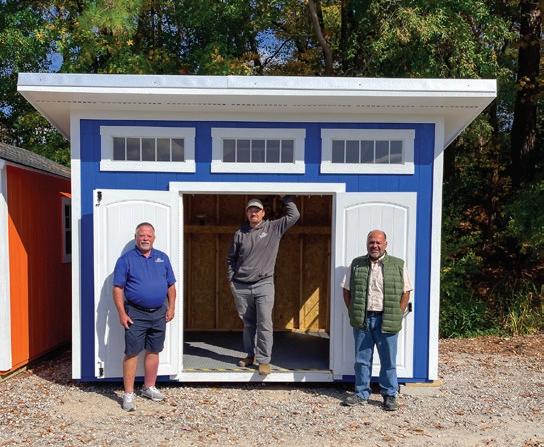
NC Shed Builders, from left: Jeff Cook, Al Rynish, and Josue Moncayo. (Photo courtesy of Carolina Moncayo)
Just like WPTF believes in Protecting the family, Allen is 100% behind the notion that NC Shed Builders is a family, something he cherishes.
“I don’t know how a small business exists without having that family mentality,” said Rynish. “You’re working with people, you build relationships, and you need to count on those people, and they need to count on you. A small business doesn’t succeed unless they have good people that are pulling on the same rope and working towards the same goals.”
So now that NC Shed Builders has been around for almost a decade, why have they been successful? What makes them any different from anyone else?
Allen tells a story about a recent client: “When I asked a customer, ‘Why did you choose us?’ his response was, number one, you build the shed onsite, and you were the only company I talked to that would make it look like my house, which is what I really wanted, and that hits home for me,” said Allen. “I want you as a customer to be able to look in your backyard and it should make you smile. A storage shed should be a feature in your backyard that you’ll be proud of. That’s our goal, to build you a shed that will make you smile when you see it.”
NC Shed Builders is highly versatile when it comes to building sheds. If you need your shed to look like your house, check. If you need something with simple functionality, check. If you need to have an office shed, check. She-Shed, Check. That’s what makes NC Shed Builders unique.
Also new in 2024, NC Shed Builders is now offering pergolas, gazebos, greenhouses that go along with their high-quality, built-on-site custom sheds, all the way to their smaller items like chicken coops or picnic tables.
It’s small businesses like NC Shed Builders that are the backbone of what WPTF has stood on for the last century and will continue to do so.
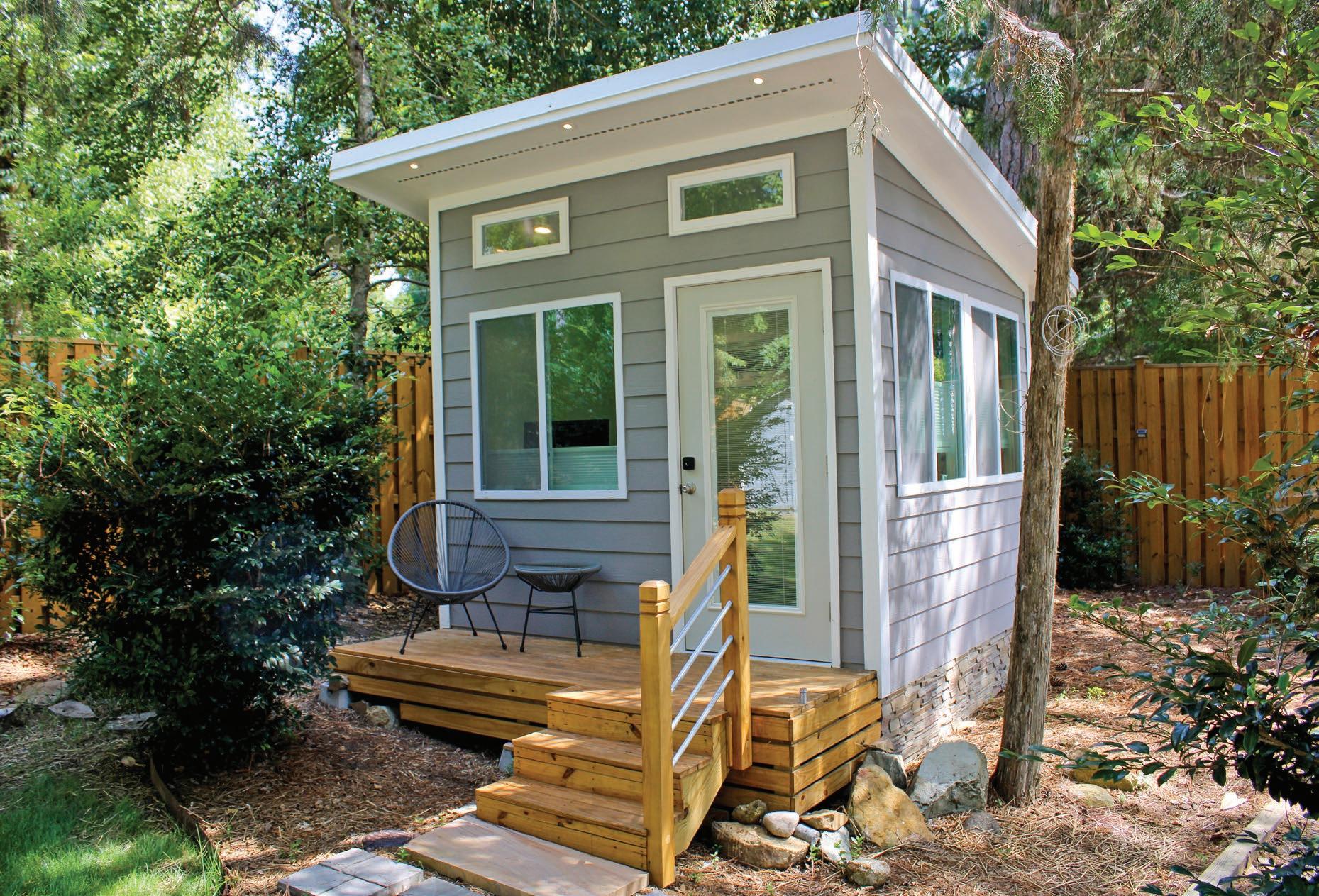



Modern-day vehicles come equipped with a range of ADAS safety technology, which stands for advanced driver assist systems. These consist of items like adaptive cruise control, lane departure warning, rear collision warning, blindspot detection, and night vision.
ADAS utilizes cameras, sensors, lasers, and radars that help drivers in different driving and parking scenarios. These systems are integrated into your vehicle and designed to work with its standard equipment, such as the engine and brakes.
If a threat is detected, such as a car coming up in your blind spot or a pedestrian crossing the street ahead, the respective system will notify the driver via a visual or audible cue. Some systems can also intersect if the driver doesn't respond in the appropriate manner, such as engaging the brakes or steering the wheel. Each system must be correctly aligned and calibrated to function properly.
Here at King's Auto Service in Raleigh, North Carolina, we have the required equipment to perform ADAS calibration service.
ADAS calibration is required if any camera, sensor, laser, or radar has been disturbed. These are located on various parts of the vehicle, such as the windshield, front and rear bumpers, and side mirrors. This can happen after a collision, fender bender, or other intensive services, such as windshield replacement, bumper replacement, suspension repair, or wheel alignment.
Other situations where you may need calibration are after your tires were replaced, airbags deployed, ride height adjusted. It's important to have this specific service complete in a timely manner; when ADAS isn't properly calibrated, it can affect how your car responds to everyday driving situations.
For example, if a sensor isn't correctly calibrated, it can miscalculate the distance of an object.
Sometimes, the ADAS can even fail altogether. At our auto shop, we work to OEM specifications when performing ADAS calibration to ensure precision and accuracy. For more information on this service and how we can help you, reach out to our team.
Call 919.205.9641
Before
replace
Battery Pack call
for


King’s Auto Service can refurbish your battery pack for less than half the cost of a replacement at the dealer. Why go to the dealer when King's Auto Service can refurbish your existing battery pack for less than half the cost! Prius and hybrid owners …call King's Auto Service today to schedule your courtesy battery analysis. King's will also inspect your battery, cell balance and antifreeze during this important check up. ANNOUNCING OUR NEW SERVICE
ATTENTION HYBRID OWNERS!
If you're currently driving a Prius or any other hybrid vehicle, the certified hybrid technicians at King's are ready to diagnose and give you available options for a high voltage battery pack replacement for less than the dealer will charge for a replacement. Call King's to schedule a courtesy battery analysis.
ATTENTION HYBRID OWNERS!
King’s Auto Service can refurbish your battery pack for less than half the cost of a replacement at the dealer. Why go to the dealer when King's Auto Service can refurbish your existing battery pack for less than half the cost! Prius and hybrid owners …call King's Auto Service today to schedule your courtesy battery analysis. King's will also inspect your battery, cell balance and antifreeze during this important check up.
King’s Auto Service can refurbish your battery pack for less than half the cost of a replacement at the dealer. Why go to the dealer when King's Auto Service can refurbish your existing battery pack for less than half the cost! Prius and hybrid owners …call King's Auto Service today to schedule your courtesy battery analysis. King's will also inspect your battery, cell balance and antifreeze during this important check up.



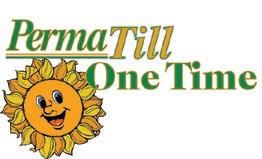
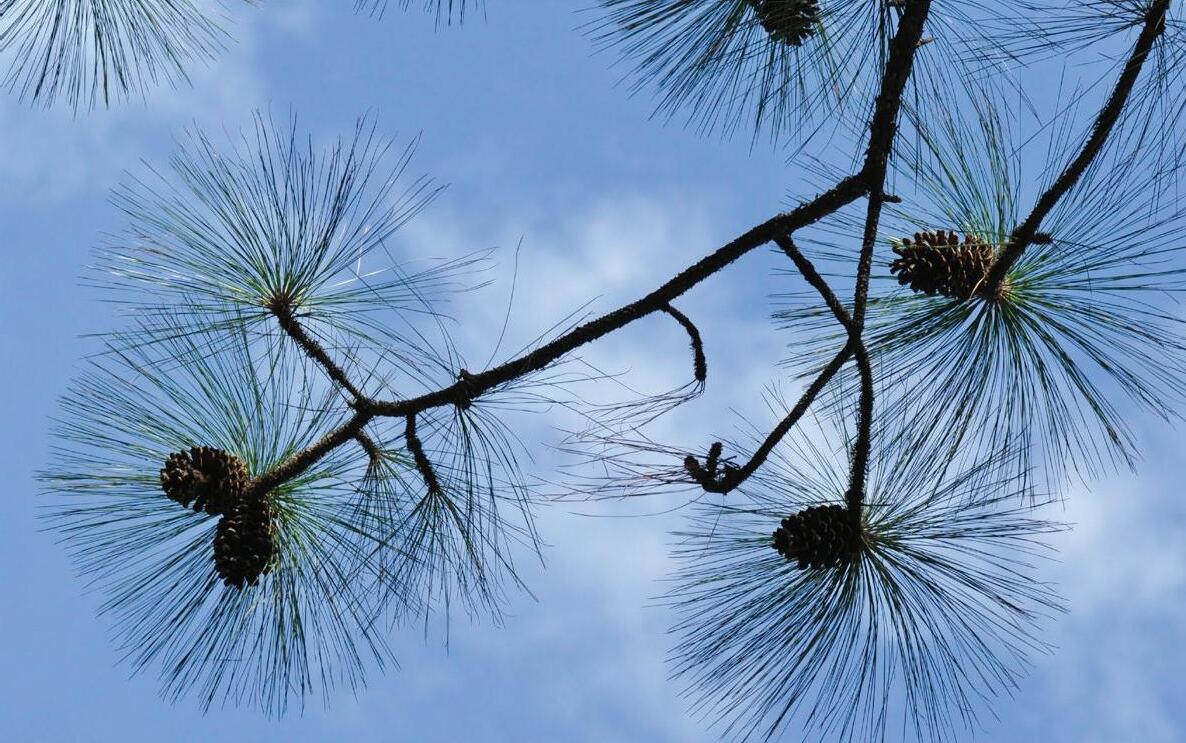
This spring, the North Carolina Botanical Garden is partnering with organizations from across the state to present Saving Our Savannas: Stories of the Longleaf Pine, a series of programs and events that honor the natural, cultural, and historical significance of these remarkable environments.
For thousands of years, longleaf pines dominated the southeastern Coastal Plain. They stretched over open savannas from areas now known as Virginia to Texas, leaving sunny spots in between for rare orchids, carnivorous plants, gopher tortoises, bobwhite quail, and hundreds of other unique plants and animals.
The secret to their success: fire. Longleaf pines, and the plants that grow around them, need fire to grow and thrive. Without it, trees and shrubs grow up, shading out young pine seedlings and the rest of the understory. Until recently, there was no shortage of fire in the Coastal Plain. Lightning strikes started wildfires regularly, and Indigenous People set fire to the landscape to improve hunting, make space for crops, and control insect pests.
That changed as European arrivals moved through the area, building roads and farms and suppressing natural wildfires. In the 18th and 19th centuries, longleaf pines became one of North Carolina’s most valuable natural resources and turned the state, for a time, into the world’s largest producer of naval stores. The tar, pitch, turpentine, and rosin extracted from longleaf pines traveled around the world. They made sailing ships watertight, sealed ropes and fence posts, preserved food, polished floors, and healed wounds.
The naval stores industry is also responsible for North Carolina’s moniker, the Tar Heel State. The original Tar Heels were enslaved African Americans who spent long, hot hours tending tar kilns in the woods, their bare feet sticky with tar. Some say the name began as a derogatory or mocking epithet but gained traction during the Civil War, when Confederates from nearby states referred to North Carolinians who stuck their ground in a battle as Tar Heels.
After the Civil War – and after the lumber industry had wiped out the white pine forests of the Northeast – lumbermen came for the longleaf pines. Between fire suppression, turpentine production, and clear-cutting for lumber, the 90 million acres of longleaf pines that had once covered the Southeast were whittled down to 2.95 million acres by the 1990s – less than 4% of the tree’s original range.
This spelled disaster for the hundreds of plant and animal species that depend on longleaf pine ecosystems, like the Venus flytrap and federallyendangered red-cockaded woodpecker. As longleaf habitats shrank, so did populations of these rare species. In recent decades, conservation efforts across the Southeast have helped restore some longleaf habitats and, by extension, the creatures that live in them: America’s Longleaf Restoration Initiative estimates there are now around 5.2 million acres of longleaf forests. But that still covers less than 6% of what used to be longleaf, and work to save these special habitats goes on.
Want to learn more? Register for upcoming programs and find additional resources at: ncbg.unc.edu/longleaf.
North Carolina Botanical Garden
100 Old Mason Farm Road
Chapel Hill, NC 27517
Open Tuesday – Saturday, 9 a.m.-5 p.m. and Sunday, 1-5 p.m.
Find out more at ncbg.unc.edu
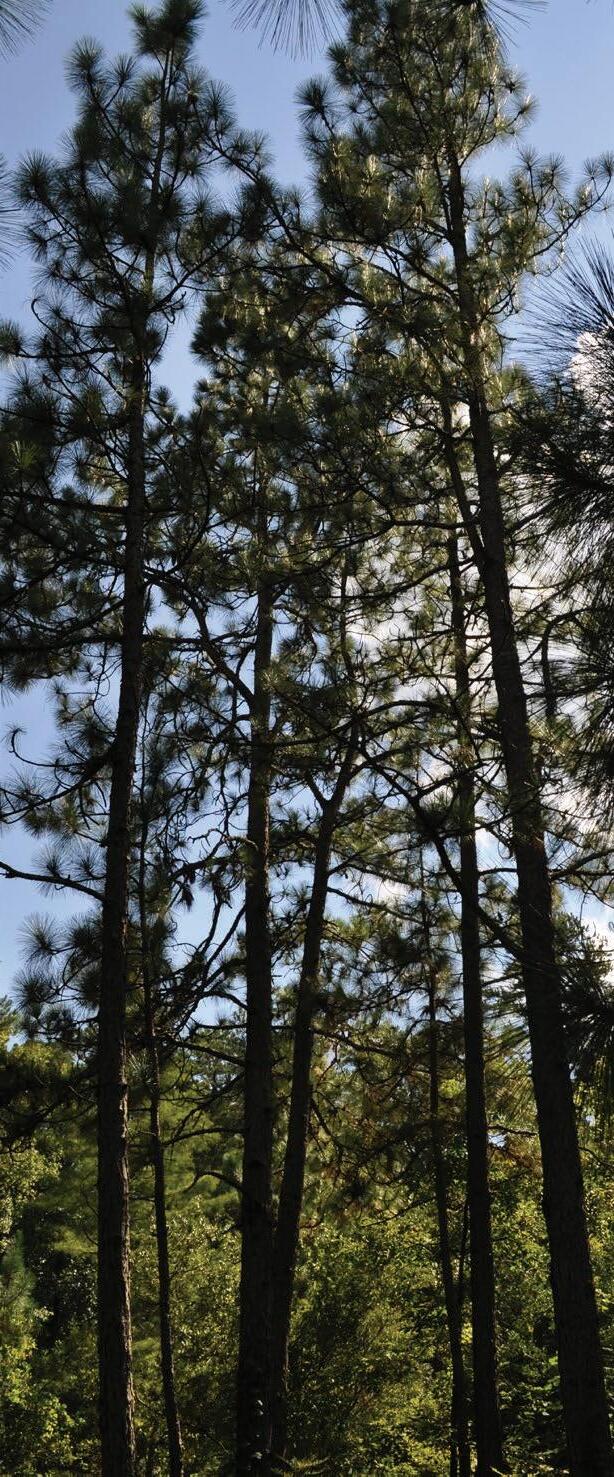
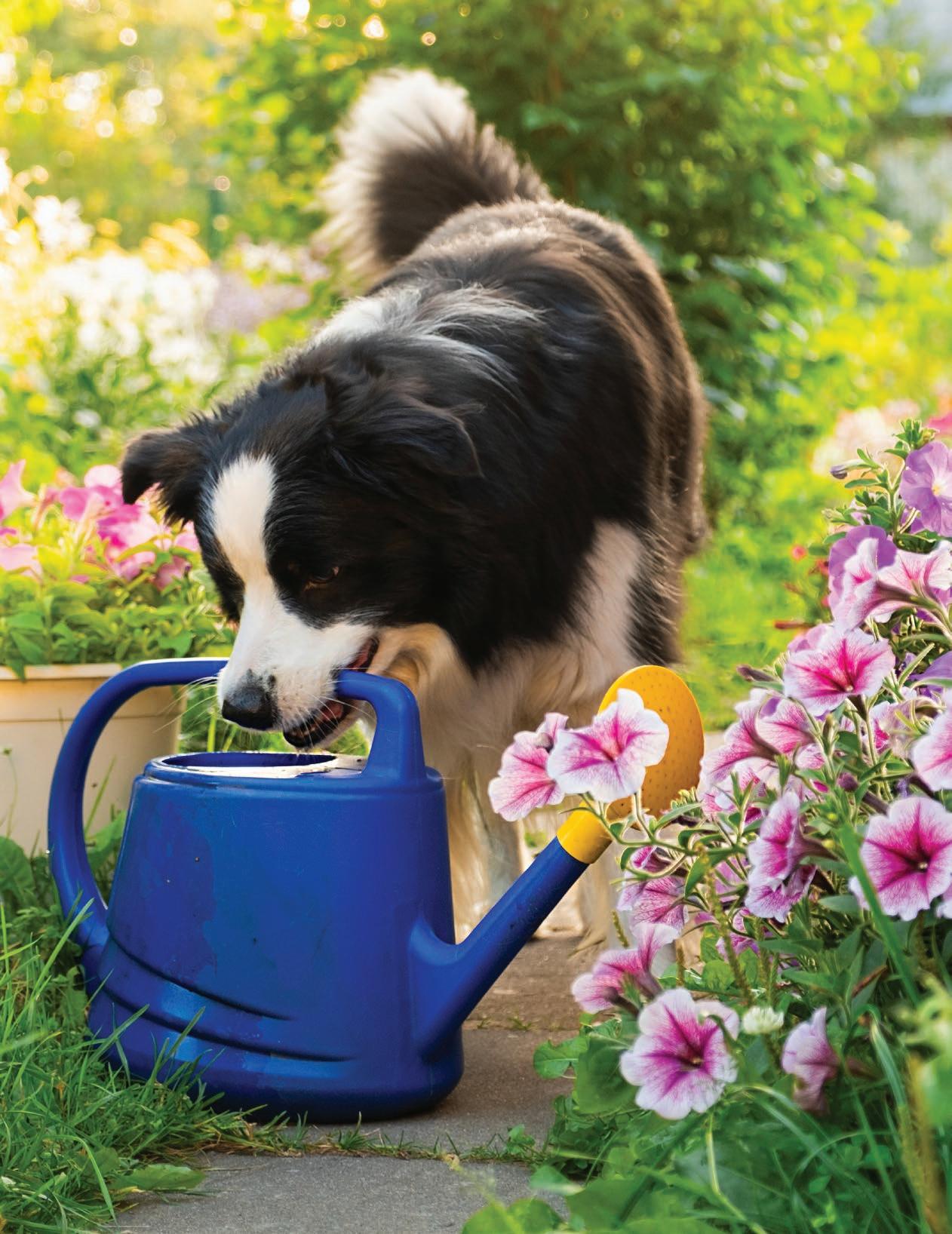


Decorating your home with vibrant greenery brings the outside into your living space. However, for pet owners, it’s crucial to select houseplants that not only enhance your home’s aesthetic but also ensure the safety and well-being of your furry friends. With a wide array of plant options available, it can be challenging to navigate the pet-friendly landscape. In this article, we’ll provide a curated list of safe houseplants for your pets, along with some information about the plants.
Known for bringing good luck, boasts hardy and resilient qualities with fast growth. However, it may outgrow your space. To care for it, place it in medium to bright indirect light and water every one or two weeks.
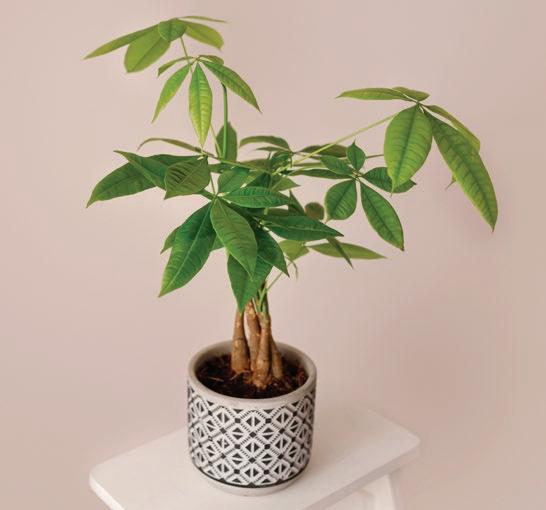
Another excellent choice featuring beautiful, wavy leaves. While easy to identify when they need care, these plants can be finicky with their light and watering requirements. Optimal care includes loose, fast-draining soil, monthly fertilization, placement away from direct light, and watering when the soil feels dry.
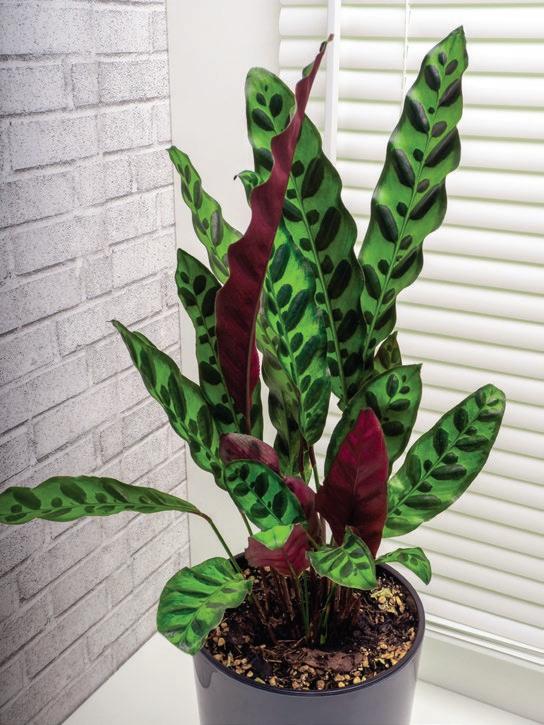
Favored by veterinarians for their air-purifying traits and resilience, but they tend to grow like weeds. Thriving in indirect bright light with temperatures of 60–80 degrees F, these plants require minimal attention.
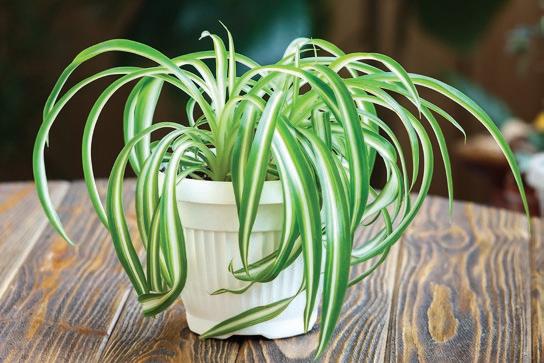
The Calathea Orbifolia
presents a striking leaf pattern but demands expertise due to its finicky nature. For optimal care, maintain a regular watering schedule, provide temperatures of 60–80 degrees F, and ensure ample humidity.
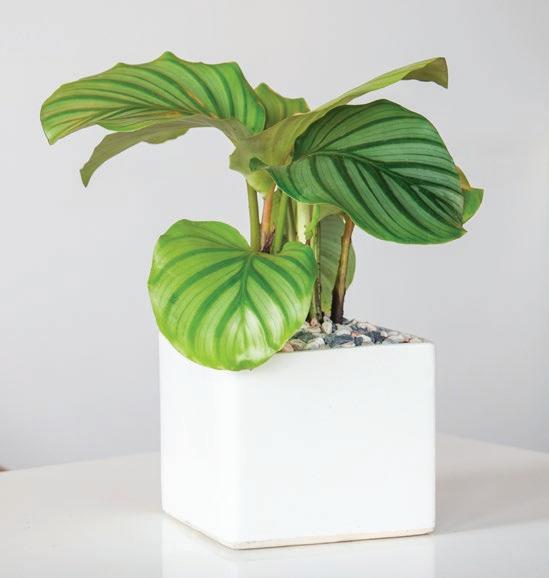
Fishbone Cactus
adds a fun and funky touch but needs more water than traditional cacti. Place it in bright light and water every week or two.

Bird’s Nest Fern
thrives in low light and varying humidity conditions, making it perfect for bathrooms. However, its leaves can become crispy easily. Care includes loose, fast-draining soil, monthly fertilization, and temperatures of 60–80 degrees F.
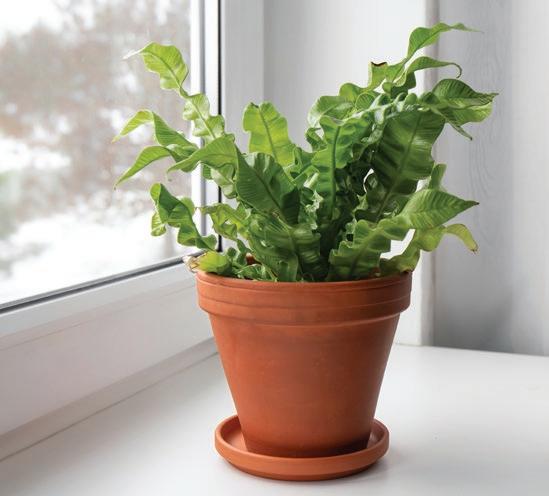
An ideal choice if you prefer a set-it-and-forget-it plant. Its unique shape adds character, but it’s not suitable for those who are overly attentive. Fertilize it two to three times a year, keep the soil dry, and avoid overwatering.
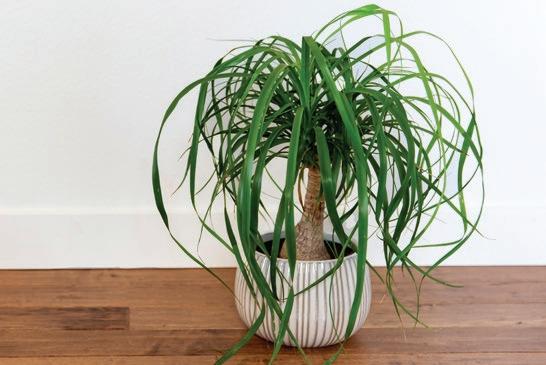
Haworthia, Echeveria, or air plants are fast growers in bright light but can quickly die if overwatered. Place them in direct sunlight and water lightly every two weeks.
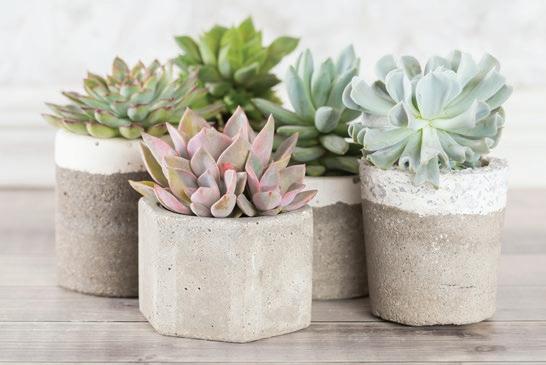
is easy to please with cute, waxy leaves. It may sunburn in prolonged, direct sunlight. Water when the top inch or two of soil is dry, and keep it in temperatures of 65–80 degrees F.
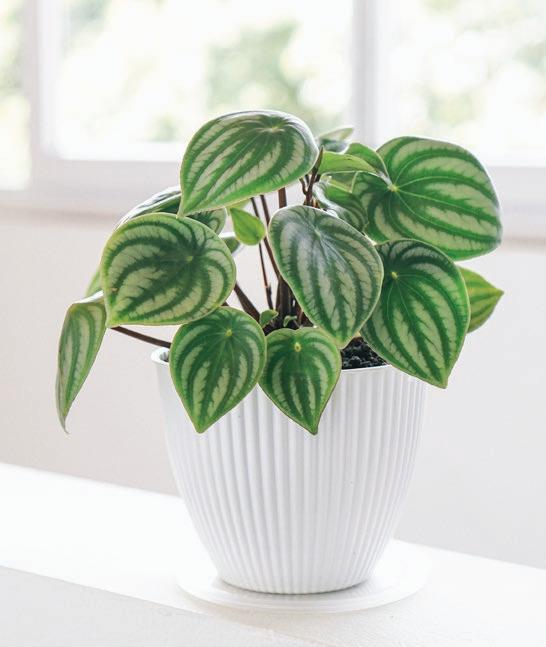
With its striking leaves and multiple display options, the requires higher light conditions. Care involves loose, fast-draining soil and temperatures of 60–80 degrees F.
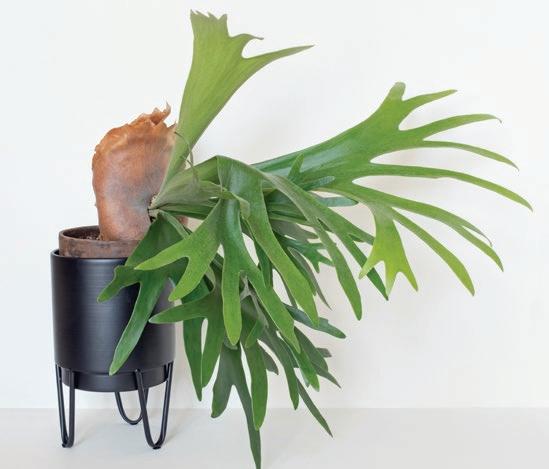
For a tropical vibe, consider this plant, with blooms lasting months. However, it requires plenty of humidity. Care includes bright, indirect light, thorough watering every one to two months, and misting if the home is dry.
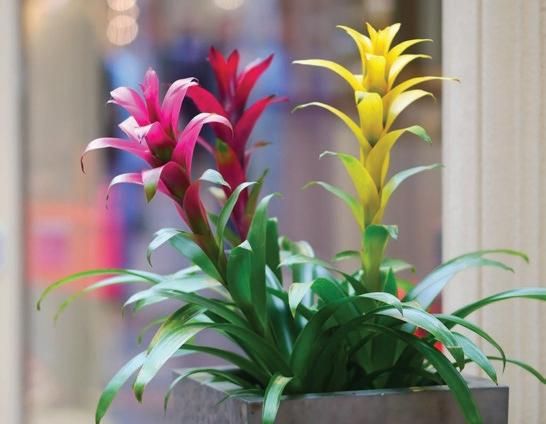
This plant makes a statement with its curling leaves but demands frequent watering and higher light conditions. Care involves bright, indirect sunlight, temperatures of 65–85 degrees F, and monthly fertilization.w
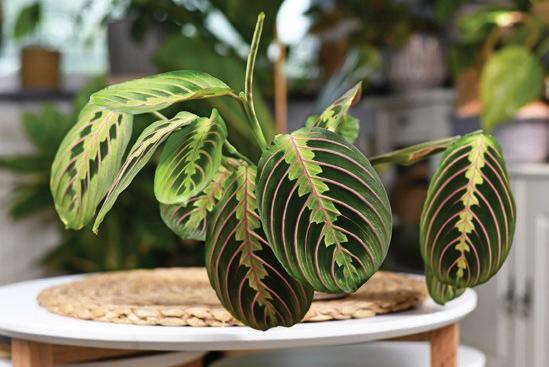





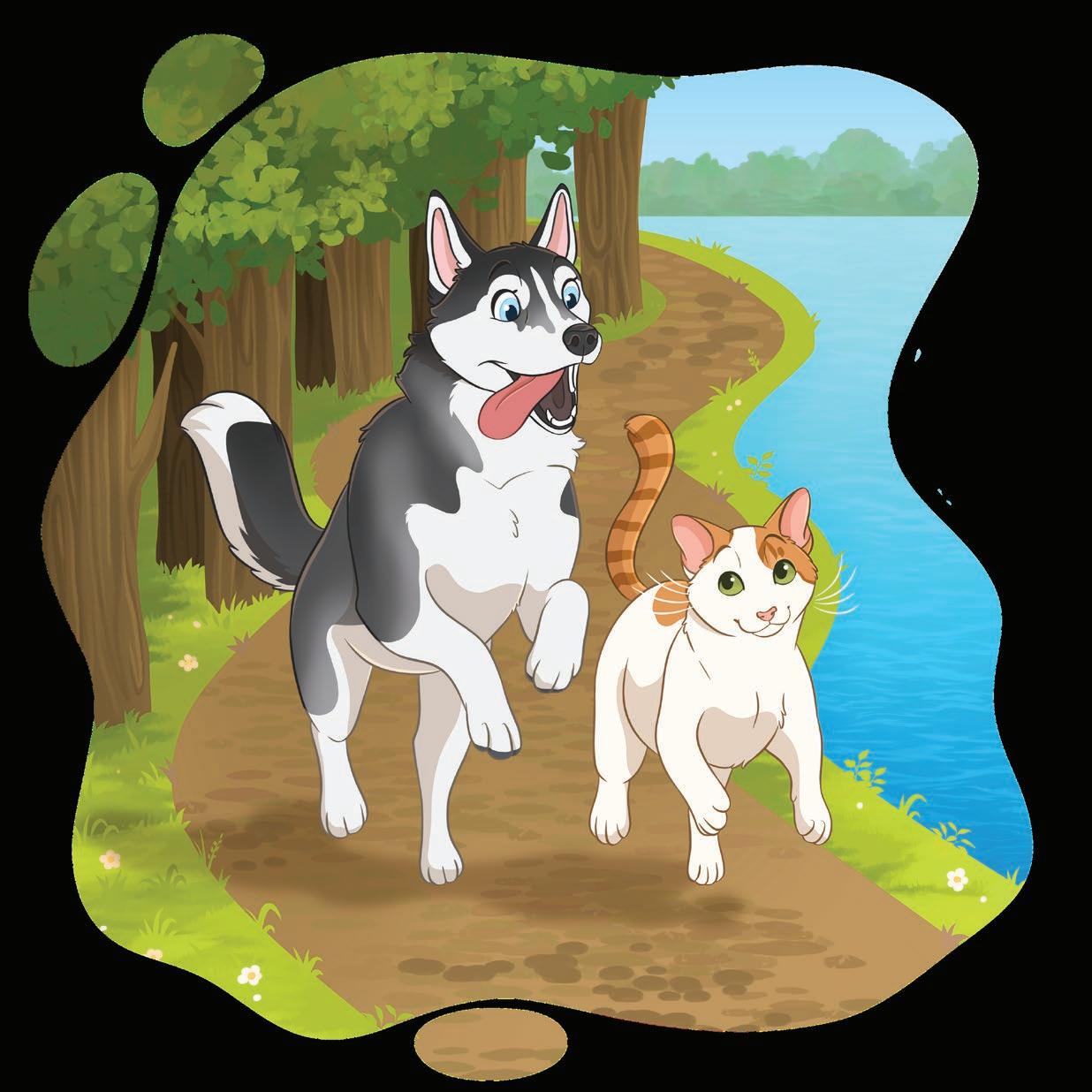












Foster homes are a very important part of our program. Without them, we would not be able to save as many cats and dogs
Lack of foster homes is the primary reason we often cannot help strays in need
Fostering with Second Chance is completely FREE for the foster parent - we supply everything!
We at Second Chance simply couldn’t do what we do without the dedicated support of our incredible team of volunteers. From cleaning cat rooms and washing dogs to helping with administrative needs, our volunteers embody the heart and soul of the Second Chance mission.
Follow us on Facebook, Instagram, and Tiktok to stay up-to-date on all things Second Chance Pet Adoptions! FOLLOW OUR SOCIALS

Rufus Edmisten
Something about the cooling breeze and the softening sunshine of autumn puts me in the mood to reminisce. Weekend Gardener regulars already know how I feel about the dead heat of summerbut for those of you who don’t, let’s just say that the hotter it gets the more I long for cooler climes. Autumn comes rippling through my garden like a playful wind through the tops of our five-generation trees. It’s a sigh of relief, a signal for the robust plantings to slow down and prepare to sleep. I feel both relief from the heat and a growing, poignant awareness of the passage of time.
My garden is my favorite place, no matter the season. But in autumn it sings soft songs of contented memories-of plantings, people, and all the other living things that make it such a special place. I love my plants, and I also have a soft spot for all the creatures that make my garden their home. We have families of foxes in the bog, along with groundhogs and the usual amphibians. So many varieties of song birds, sparrows, wrens, and woodpeckers, bluebirds, cardinals, and mockingbirds among them, festoon the trees. I love them all. Even the prolific squirrels, though some troubling incidents involving my beloved figs and tomatoes have tested my affection for them. (Lots of recovering politicians have highways and stately edifices named for them, but my namesake is a tomato. When a gang of squirrels made a feast of these very tomatoes that my friend and horticulture expert Gerald Adams named for me, I came close to taking it personally.)
Along with all these tangible delights, my garden is also redolent with fond memories of gardening companions past. I’ve named many an excellent flower, shrub and tree after close friends who warmed my life with delightful companionship, some of whom have now passed away. Bearded iris for my dear mother, who was known as the church flower lady. Other bearded iris plants given to me by my cousin Gladys who lives in Jonesboro, Tennessee bear her name. Some peonies bequeathed to me years ago by my aunt in Boone are named for her. So many years, so many wonderful people, some still with us, some gone. When I walk around my garden in the early morning a flood of sweet remembrance lifts me up and prepares me for the busy day ahead. The laughter and camaraderie of those who shared my love of tilling the soil and teasing lovely plantings forth, and also lamented with me the untimely languishing of many a daphne have a special place in my heart. It is as though we share a delightful secret-and we do.
The older I grow, the more my garden brings me closer to spiritual things. There is meaning in the waxing, waning, perpetually changing garden that seems to me to be just beyond our comprehension. We sense it but cannot fully understand or define it. This, for me, is the definition of spirituality. It soars above factions and petty differences, though we are often unaware. These days my thoughts turn more often to these matters. So many metaphors appear in the plants. When I am in my garden there is no question in my mind that there is a higher power. Though we are inundated with heated debate about spiritual matters, the very nature of the topic means that nobody can ever win the debate. Most importantly, no matter how heated the arguments become, faith does not care. What lies beyond the mere physical remains, just as it always has and just as it always will. Our gardens remind us of this in simple ways. Anyone who has seen a wishbone plant knows a little something about intelligent design and can make a good guess as to the question of a higher power. The natural cycles of burgeoning, waning and renewal go on no matte how much noise we make, and no matter how much turmoil there is in the world. The ancient, life and time rhythms of the garden do not change. If you give a peony plant the simple things it needs that peony will appear right on schedule, ants and all. Just as we rise and fall with the change of the seasons in a cadence more ancient than the world itself.
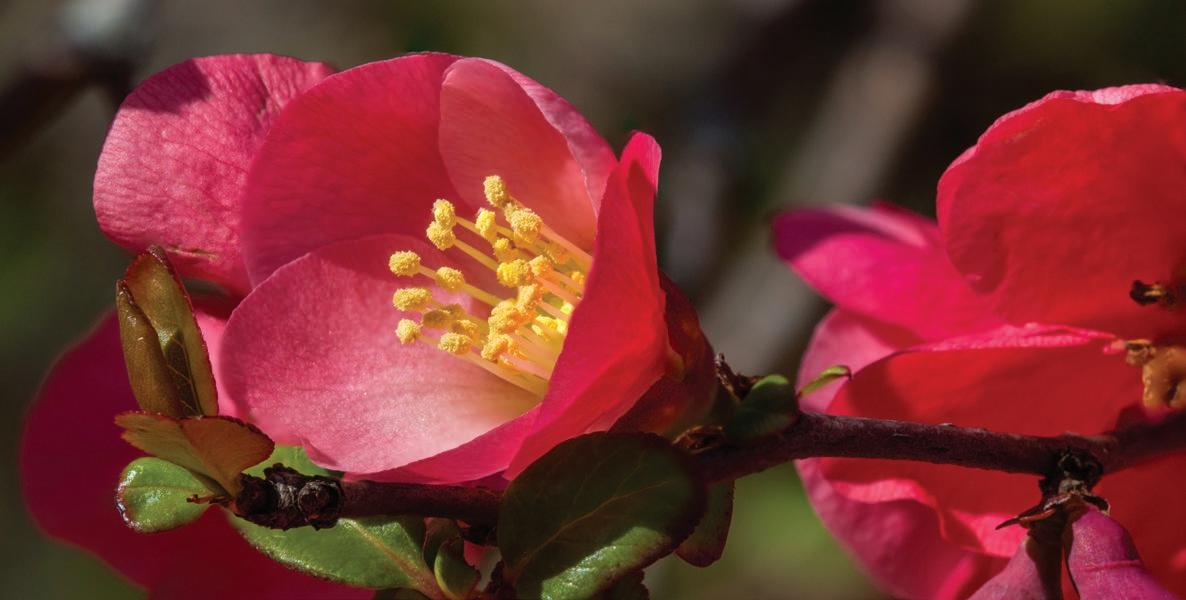
Among our most treasured reminiscences are those of our cherished canine companions. “Mans Best Friend”--our dogs- on a background of nature’s achingly lovely fruits, flora and fauna make for daily joy.
Our much-loved dogs, now gon, have marked the decades of our lives. They shared with us the ever-changing, ever-fascinating miracle that is our garden. If only they lived as long as the crape myrtle trees that have stood on our grounds for over one hundred years. If you love dogs and live a long time, you are bound to have had a number of dogs. It is never easy to let them go.
Our last dog Jasper, recently grown aged and infirm, was so hard to let go. While it was sharply painful for us, as always, Linda and I, were grateful that we could give our little dog the ultimate gift of love and respect-the mercy that human beings are often denied. We could never have matched the joy he gave us over the years. As time goes on, may the sadness of loss be tempered by our memories of the lovely and often hilarious antics of our sweet and goofy pal.
Because we have been fortunate enough to have our gardens for several decades and we love dogs, we have had to say goodbye to several dogs. It seems fitting to remember them here. Our first was grand ol’ Moses, the wonderful English setter who thought he was some sort of prince. In his younger days he’d leap through the air, sometimes ten feet, and land on the ground and make another leap even higher. He was a wonderful companion who loved to ride with me in the pickup, and when I’d go inside, he’d move over and make out like he was driving the 1972 Chevrolet Cheyenne. Moses was my wife’s constant companion and went to work with her every day. Moses lived to be seventeen years old, as big a dog as an English setter is. [Larger dogs typically have shorter lives.] One night he lay down, and couldn’t lift his head. When I saw that he had soiled his sleeping chair I gently gahered him up and went through the wrenching experience of taking him to the vet. I could not go in.
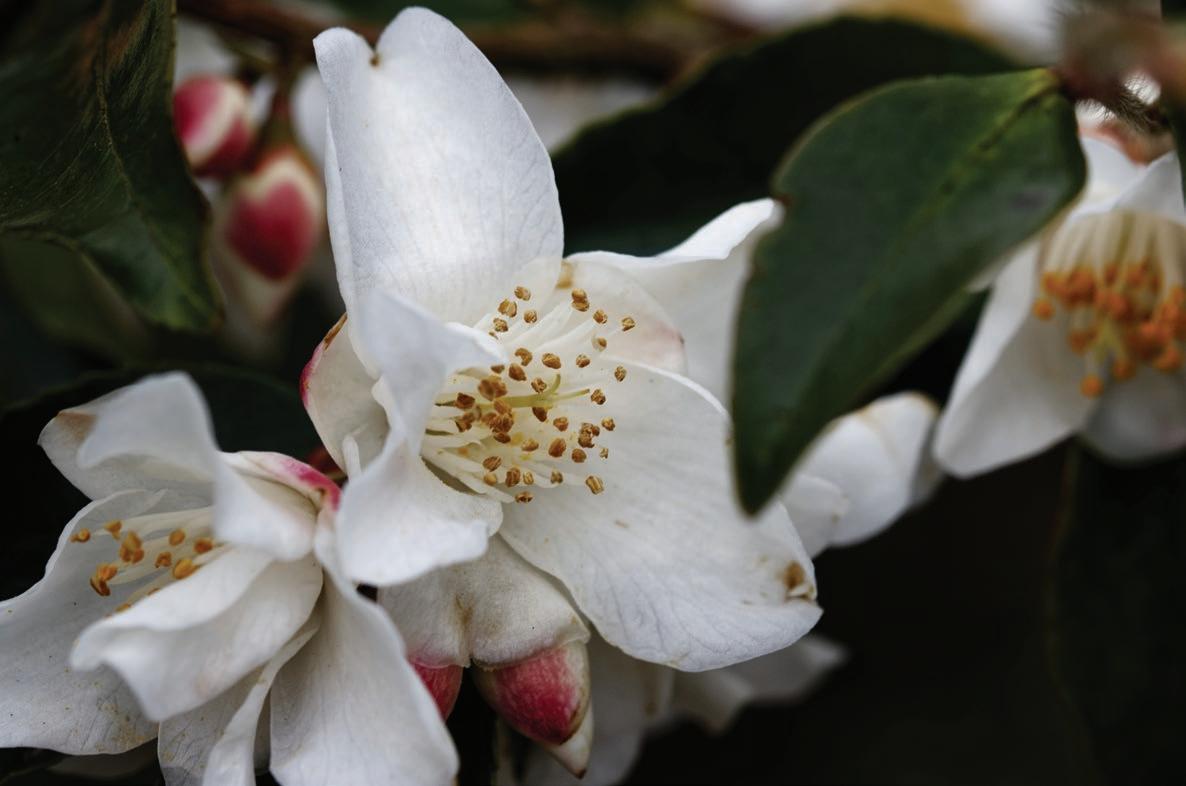
Then came his daughter Lily, who was a beautiful pup who didn’t point as much as Moses but was an inquisitive, loving dog. She had every instinct of a bird dog but was more interested in pointing squirrels. One day when I was attorney general, I had Lily over at the Capital, and she put a perfect point on Gov. Jim Hunt. Of course, I got a big kick out of that, and I think Lily did even more so. She developed a terrible E. coli infection, and Linda and I finally had to make the decision that her quality of life was no good. I couldn’t bear to take her to the vet. Linda did, and as she left with Lily lying in the back of the car, I wept like a baby.
Then there was that wonderful mixed breed, Sissy. She was left abandoned in a ditch. Some friends of ours found her, and we decided to take her. She was about six months old, all legs, and looked like a scarecrow. About two weeks later she came into season, and we had to quarantine her for several days. At eight years old, Sissy developed cancer, and we had to make another difficult decision.

As each dog left us, my wife and I decided we’d take their ashes and place them under our newly planted camellias. Moses has a bright red camellia that glistens in the sunlight, reminding me of the wonderful time with him. We chose an apple blossom camellia for Lily, which reminds me of springtime in Boone. Then Sissy got a pure white camellia. So, each fall, I have those magnificent blooms honoring Moses and Lily, and then as Spring finally comes around, the aroma of that white camellia reminds me of Sissy. My camellias help me remember those warm feelings that all three of those close friends gave Linda and me.
I named our wonderful Brittany Nellie, after my mother’s name. Because of diabetes Nellie lost her sight. I chose the Magnificent Camellia “Yuletide” to honor Nellie. However, her younger brother, crazy
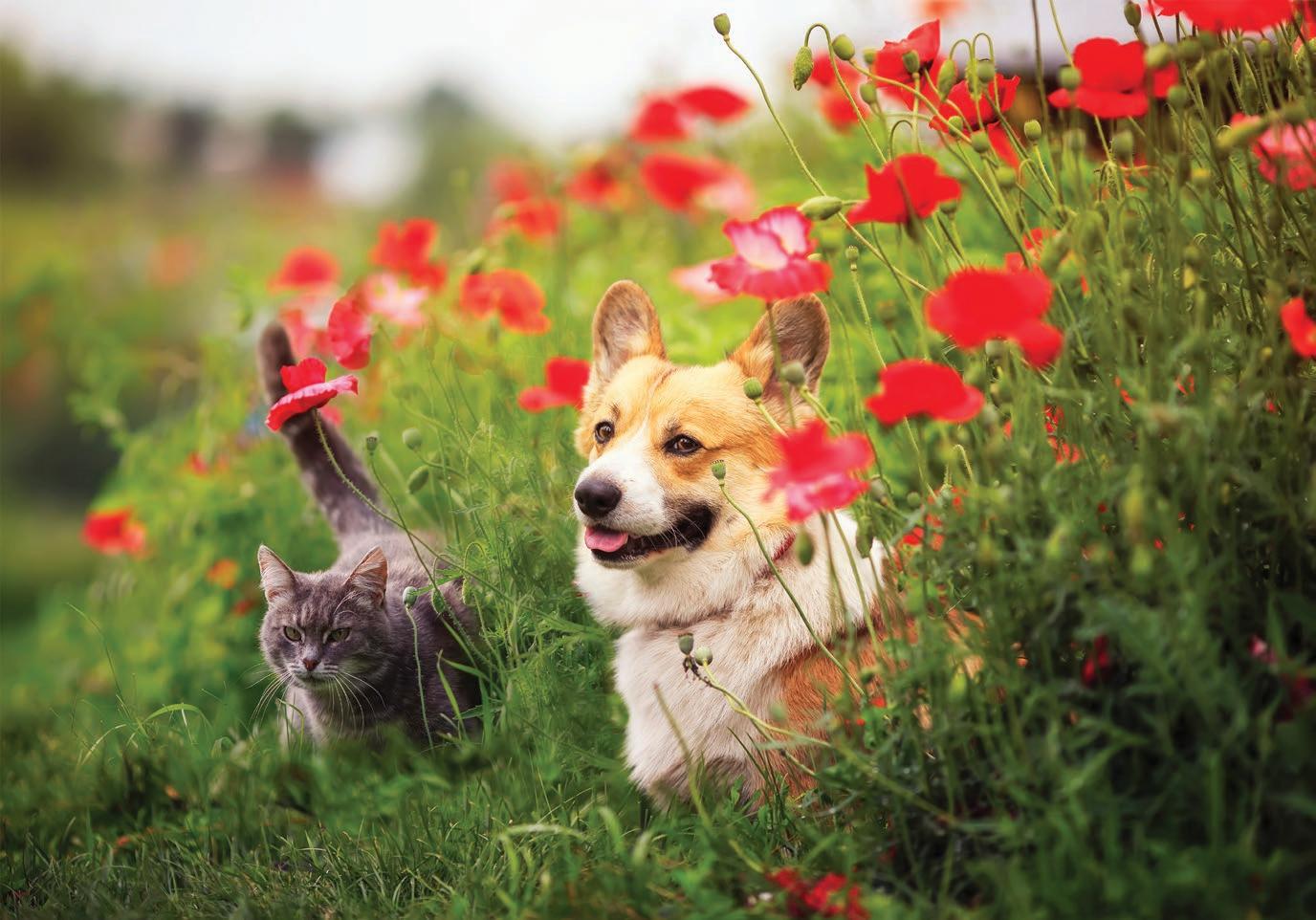
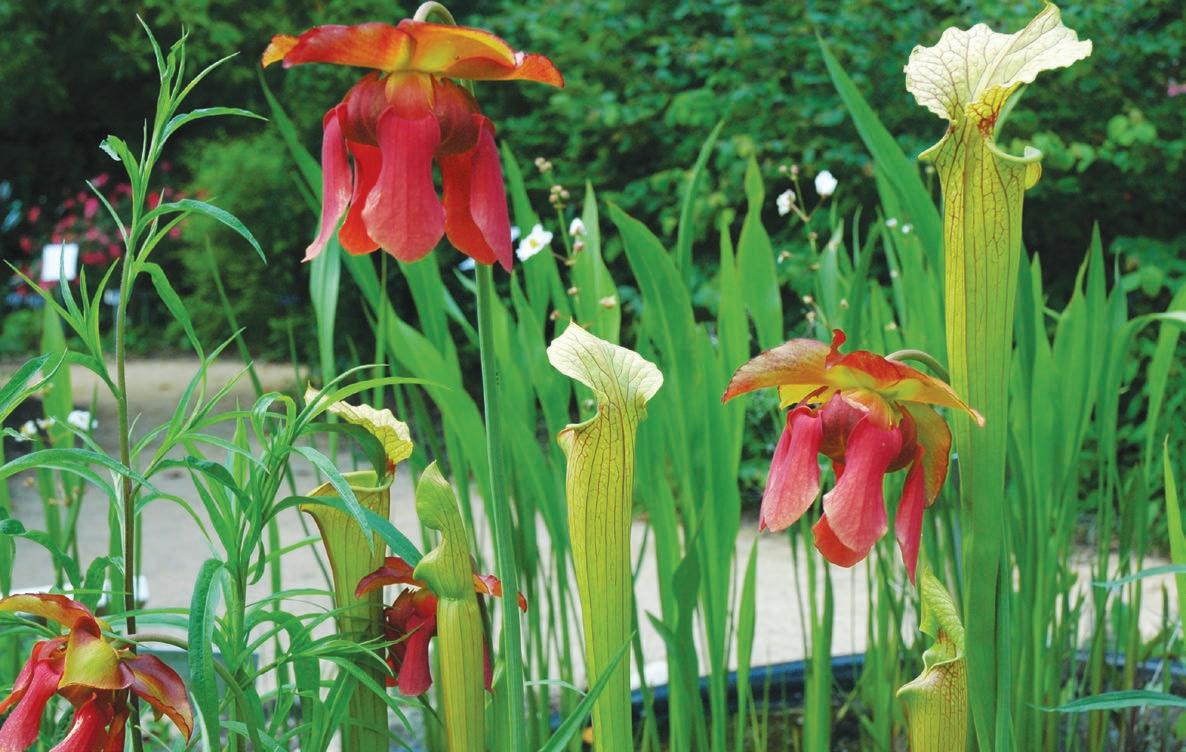
The North Carolina Botanical Garden’s pitcher plant collection is one of our most beloved displays. Beautiful, weird, and insectivorous is clearly a winning combination. Colorful and alluring pitchers, which are actually modified leaves, are visible for most of the year and attract the attention of people and insects alike. But have you seen the flowers?
Late April to mid-May is the time of year to catch the show. We have 11 species of pitcher plants and many different hybrids with flower colors ranging from pale to bright yellow, pink, red, purple, and even multicolored. Most of the plants bloom before they’ve made their spring pitchers. This helps with pollination as it wouldn’t do to eat the insects who ensure the next generation. The bright petals hang down in a showy and somewhat otherworldly floral display. After the petals drop, the rest of the structure remains, holding the ripening seeds until they are ready in fall.
While pitcher plants have very specific growing requirements, you can easily replicate them in a container at home in a sunny spot. An acidic, low-nutrient growing medium like peat and sand combined with full sun and constant moisture is all you need. Check out our growing carnivorous plants instructions at ncbg.unc.edu/plants/resourcesfor-gardeners. Or better yet, come by to see ours in bloom and get your own pitcher plants and growing instructions while you are at the North Carolina Botanical Garden.
North Carolina Botanical Garden
100 Old Mason Farm Road
Chapel Hill, NC 27517
Open Tuesday – Saturday, 9 a.m.-5 p.m. and Sunday, 1-5 p.m.
Find out more at ncbg.unc.edu



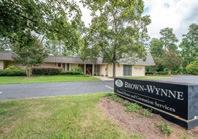
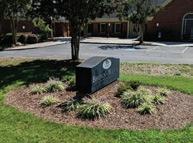
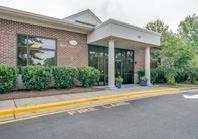

To learn more about pre-planning or to have a seminar for your Church or Civic Organization please contact one of our convenient locations.

It’s time to start thinking about flea and tick prevention. Start by utilizing a product to prevent flea and tick infestation. Fleas and ticks are common parasites that can cause a variety of health problems for your pet, including skin irritation, itching and in some cases serious illnesses.
Prevention treatments to keep your pet from infestations occuring in the first place can keep your pet healthy and comfortable and save you a lot of time and energy getting rid of an infestation later.
There are a few options when it comes to prevention. Flea and tick topical prevention treatments as well as oral preventative medications are available over the counter or from your veterinarian. Other prevention options include a variety of collars, sprays, and shampoos. Regular brushing and grooming of your pet and checking for fleas and ticks is recommended.
Facing a flea infestation? Don’t panic. There are many products available on the market to help, both all-natural and chemical treatments are available. Both your pet and their environment will need to be treated. A flea bath and flea comb can help to remove the fleas that are currently attached to your pet. Regular vacuuming and home flea treatments may also be necessary. Linens and bedding should be thoroughly cleaned and you’ll want to monitor your pet closely to ensure the fleas do not return.
Find a tick attached to your dog? If you find a tick on your dog, it is important to remove it as soon as possible. The best way to do this is to use a pair of tweezers and grasp the tick as close to the skin as possible. Gently pull the tick straight out, being careful not to twist or jerk it. Once the tick has been removed, dispose of it by submerging it in rubbing alcohol and then placing it in a sealed bag/container. Clean the area where the tick was removed with an antiseptic or soap and water. If you are concerned about the tick or your dog’s health, it is best to contact your veterinarian for advice.
Flea and tick bites are not only painful and itchy, they can also lead to allergic reactions and tick bites can transmit diseases such as Lyme disease and Rocky Mountain Fever.
Prevention of fleas and ticks is an important part of caring for your dog.








Rick Hall Eyewear…look good see better.
Entire inventory marked down 30% every day!
Top brands like:
• Kate Spade
Not only the best frames, but also the best prices!

I am glad you asked. First a little mental health data: In 2019-2020, 20.78% of adults were experiencing a mental illness. That is equivalent to over 50 million Americans. Over 1 in 10 youth in the U.S. are experiencing depression that is severely impairing their ability to function at school or work, at home, with family, or in their social life.
There's something in the air and while it may not be love, some say it's the next best thing, negative ions.
Negative ions are odorless, tasteless, and invisible molecules that we inhale in abundance in certain environments. Think mountains, waterfalls, and beaches. Once they reach our bloodstream, negative ions are believed to produce biochemical reactions that increase levels of the mood chemical serotonin, helping to alleviate depression, relieve stress, and boost our daytime energy.
And these are a few of the reasons we see negativeion generators being sold, but do they really work as well as a natural waterfall or trip to the beach? We will let the experts sort that question out. Myself, I’d rather take a seat next to the ocean, a lake or a beautiful waterfall, listen to the sound and feel how it sooths my soul.
I actually have a waterfall in my backyard. Even when I am working in the yard, I am talking real yard work, I can feel my body de-stressing listening to the sounds of the waterfall in the background. When I sit in my chair, sipping on my glass of iced tea, I can feel my blood pressure going down. If I have a bad day or a particularly difficult telephone call, I’ll purposefully take a walk to my pond. This is my happy spot, and it is better than any blood pressure medicine to me! (That does not replace a doctors advice)
Since the beginning of time, people are drawn to water. Whether it is to the ocean, the mountains, or putting in a pool, a pond or water feature in their own back yard. Most vacation destinations include some body of water. It sustains life, in more ways than drinking it.
"The action of the pounding surf creates negative air ions and we also see it immediately after spring thunderstorms when people report lightened moods," says ion researcher Michael Terman, PhD, of Columbia University in New York.
Generally speaking, negative ions increase the flow of oxygen to the brain; resulting in higher alertness, decreased drowsiness, and more mental energy," says Pierce J. Howard, PhD, author of The Owners Manual for the Brain: Everyday Applications from Mind Brain Research and director of research at the Center for Applied Cognitive Sciences in Charlotte, N.C.
"They also may protect against germs in the air, resulting in decreased irritation due to inhaling various particles that make you sneeze, cough, or have a throat irritation."
And for a whopping one in three of us who are sensitive to their effects, negative ions can make us feel like we are walking on air. You are one of them if you feel instantly refreshed the moment you open a window and breathe in fresh, humid air.
"You may be one of them if you feel sleepy when you are around an air-conditioner, but feel immediately refreshed and invigorated when you step outside or roll down the car window," Howard tells WebMD. "Air conditioning depletes the atmosphere of negative ions, but an ion generator re-releases the ions that air conditioners remove."
So get out of the house, get your feet into a waterfall, and feel like a kid again. Your body will thank you.

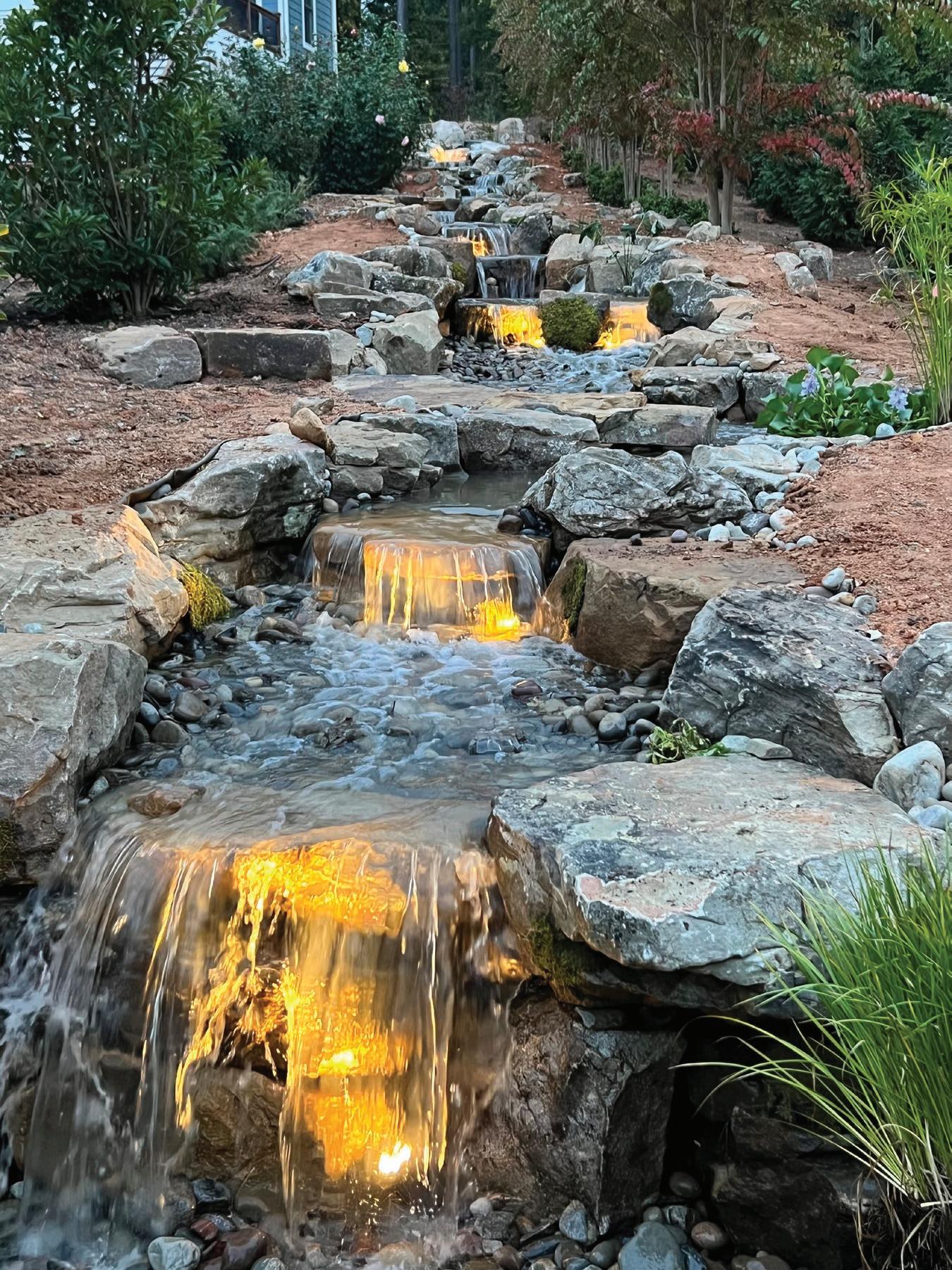




Jump-start your mornings with The WPTF Morning Show. Local, national and breaking news…Oneon-one’s with Triangle newsmakers, along with weather and the most detailed and helpful traffic updates that will help shape your day. Listen in every weekday from 5-9AM on the NEW News Radio 680 WPTF
Brian Kilmeade is a Fox News television personality. Weekdays 6-9AM, he co-hosts Fox News Channel’s (FNC) morning show, Fox & Friends. He has written several fiction and nonfiction books.Additionally, he serves as host of Kilmeade and Friends, (weekdays 9AM-12PM) a nationally syndicated three-hour radio show on Fox News Radio.

Hosted by WPTF News veteran, Bruce Ferrell The News @ Noon provides listeners with what they need to know on the hottest topics and breaking news of the day. Original, live and fast-paced.

Cut through the spin and delve into issues that matter to YOUR life and YOUR wallet. News. Infor mation. Weather Real -time traffic 3-6P every weekday on the NEW News Radio 680 WPTF

The WPTF Evening News recaps the day’s top local and national stories, and includes the day’s financial reports, entertainment features, and highlights the stories that everyone is talking about. Kristine Bellino and Chris Edwards break down the day’s stories and carry news as it breaks with the WPTF News team.


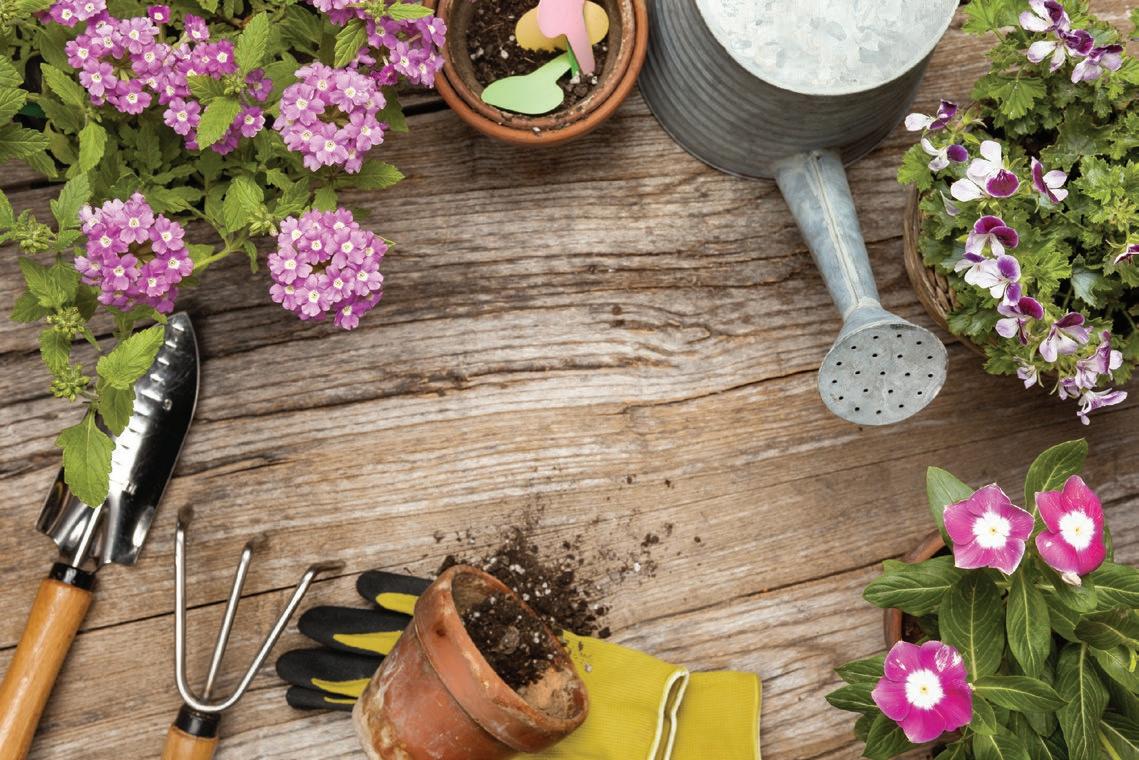




Saturday Mornings from 8am-11am on Over 35 years and still growing strong!

We’ve moved just down the road to 2804 Campbell Road.
It’s easy to find just a short distance down Campbell Road from the old location with plenty of parking. Come see the great selection of plants from the Campbell Road Nursery greenhouses.
We grow our own breath taking spring and summer annuals, tons of perennials, specialty plants, herbs and a variety of vegetable plants and of course, Phil’s brother’s famous hanging fern baskets.
